Vertical farming system to be showcased in Canterbury


 ] by Kent Caddick
] by Kent Caddick


It will be the first opportunity for New Zealand horticulturalists to see a full-sized Vertical Farm Systems XA Series (VFS) growing system in operation, courtesy of the New Zealand supplier, Landlogic.
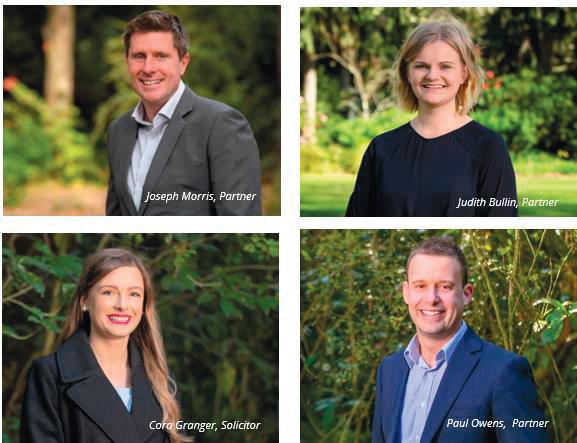




The Ashburton set-up is a Landlogic initiative to showcase what a vertical food production system can do. VFS is a modular system
designed for warehouse installation with plants grown in multilevel trays contained in climate and light-controlled cells.





Landlogic CEO Alan Cottington said the fully automated vertical growing system offers an important alternative to producing commercial levels of leafy greens in the horticultural industry, where traditional outdoor growing systems have taken such a huge hit in recent floods and storms.
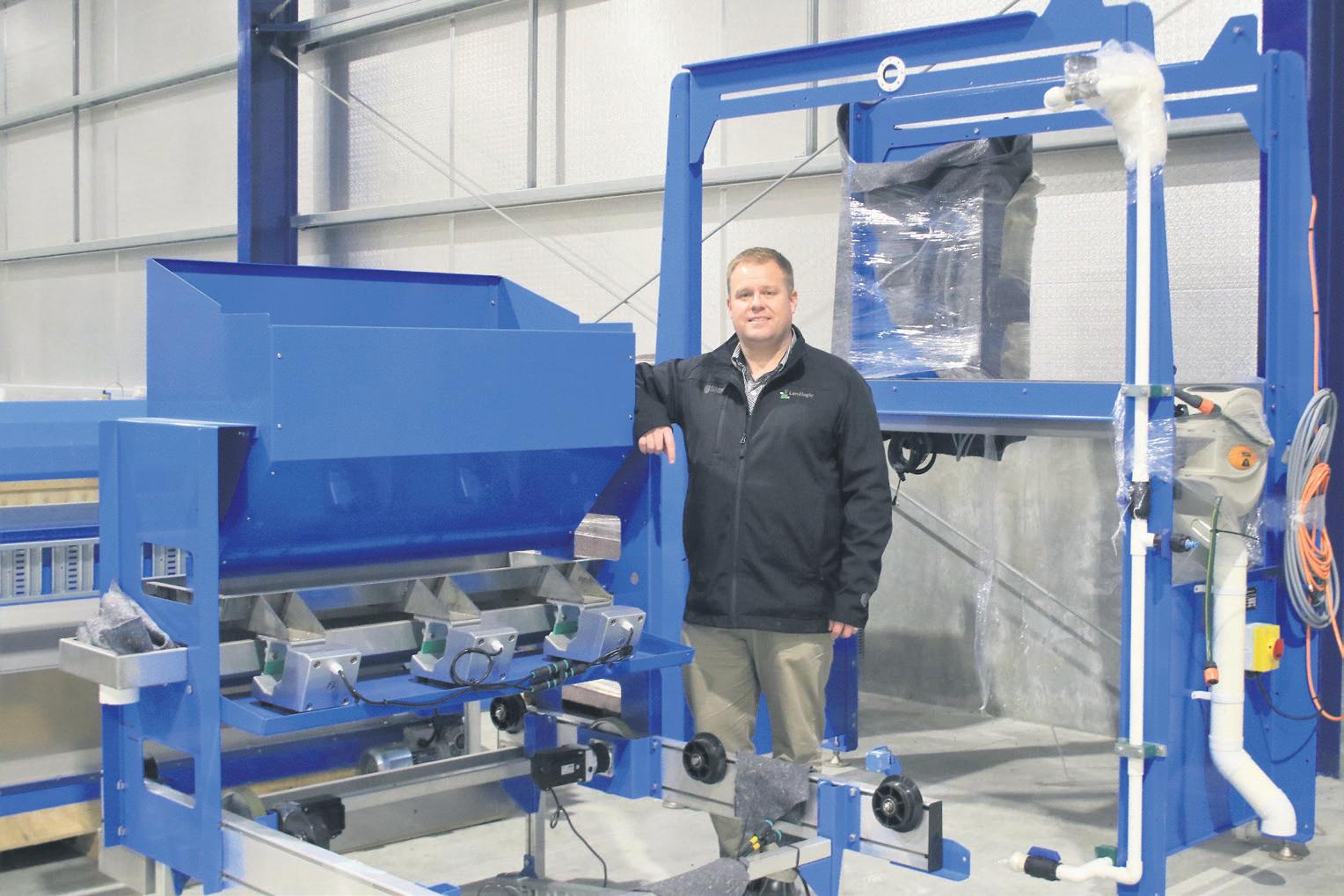

“The increasing unpredictability and frequency of severe weather events, attributed to global warming, along with the rising costs impacting traditional open-field farming, mean it’s more important than ever to consider new approaches to sustainable agriculture,” Cottington said.
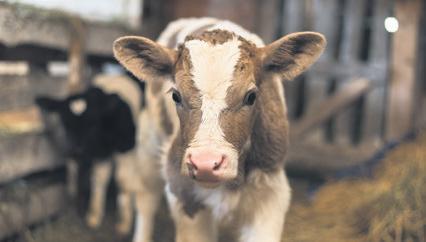
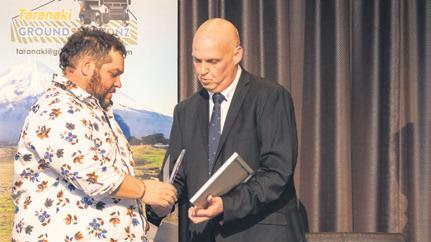

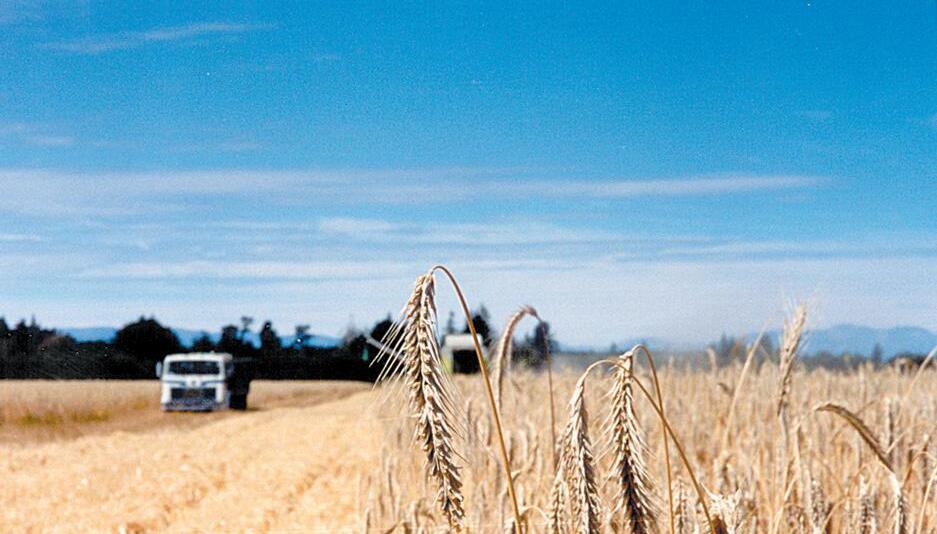
August 2023 Edition INSIDE THIS EDITION Need a lawyer? OUR LOCATIONS: SELWYN 03 348 8480 WEST COAST 03 755 8673 CBD AND RICCARTON 03 348 8480 PARRYFIELD.COM Judith Bullin, Partner, Parry Field Lawyers ▪ Agri-business ▪ Disputes ▪ Wills & Asset Planning Our
Talk
the right advice early makes a difference. LOCAL LEGAL SPECIALISTS TO PAGE 2
team can work to support your business growth or give you peace of mind around planning, property or personal matters.
to us today about how we can help. Getting
A mechanised
be
Systems go: Landlogic CEO Alan Cottington overseeing the installation of a vertical farming system in an Ashburton warehouse. 30,287 copies distributed monthly – to every rural mailbox in Canterbury and the West Coast for over 25 years
growing system with the potential to improve New Zealand’s food production security will
set up in Ashburton by the end of August, with planting to commence early September.
Next gen trio p3 Innovation award p19 Coccidiosis caution p28 Dairy resilience p32
Vertical farming systems a ‘big opportunity’
FROM PAGE 1






“Our food security is vulnerable when we rely on traditional farming methods or importing for leafy greens, which are a basic and healthy food essential.”
The system is heavily automated with computer-controlled feeding, watering, lighting, and sensors monitoring temperature, pH, EC and humidity levels. Loading, harvesting, recovery and re-use of the growing medium and reloading the trays is also automated.



In agribusiness the commercial production of leafy greens, herbs or plant seedlings using multi-level growing systems is rapidly expanding around the world.
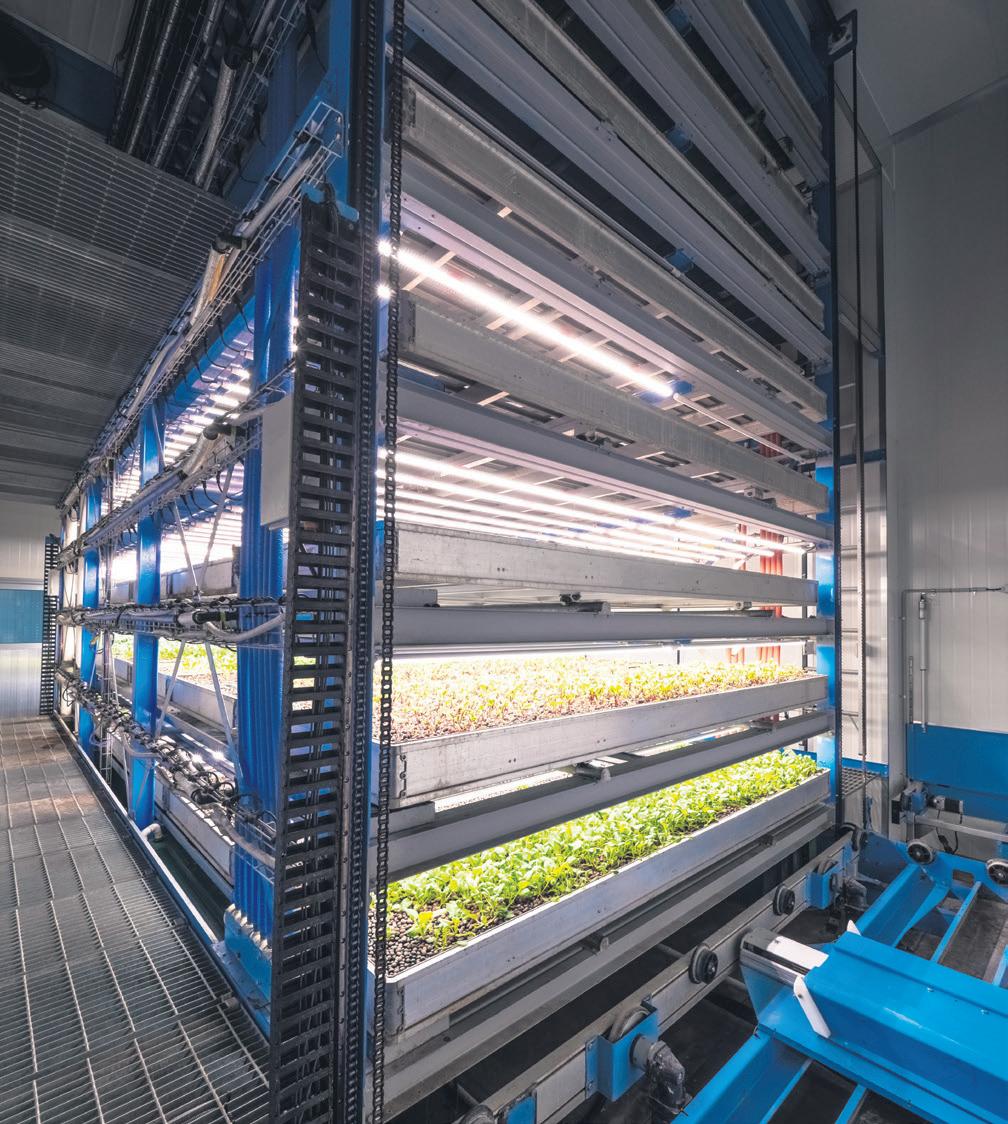
Cottington said New Zealand needs to get on board with this technology if it is to remain competitive and ensure there will always be a reliable and efficient alternative to in-ground production available.









The VFS system is best suited to fastgrowing crops, including leafy greens such as loose-leaf lettuce, baby spinach, arugula, mizuna, tatsoi, endive, pak choy, bok choy, beet chard, and herbs such as coriander, parsley, and basil.
“With VFS there are no ‘seasonal crops’




and no crop losses,” Cottington said.
“Harvest times and end product quality are consistent and reliable, allowing commercial growers to confidently commit to delivery schedules and quantity agreements.

“VFS crop turn-around times are 28 days, regardless of external influences. By comparison, outdoor planting to harvest takes approximately 65 – 80 days for midsummer plantings, and up to 130 days for Autumn/ Winter plantings.”
Cottington said a VFS machine in Australia is producing around 600kg of greens a week and only takes about three hours per week of human labour to run. The system has an automated packaging machine as well, taking the greens straight from the VFS system into eco-friendly bags or boxes for distribution.
In addition to helping with local food security, Cottington said the VFS system is better for the environment especially in such areas as water quality, fertiliser use and pest control chemicals.
“The system does not use pesticides or herbicides and requires significantly less water than in-ground systems, with a water efficiency rate of 99.9 percent.







Nutritionally, the product is at least equal to, if not better than, in-ground plants and the nutritional levels are much more consistent.”
Landlogic is the importer and distributor of Vertical Farm Systems for New Zealand and the Pacific, as well as sales agent for the rest of the world, except Canada, Scandinavia, Philippines and USA.

Cottington said vertical farming is a big opportunity for Pacific Island countries to
combat growing concerns of food security and access to nutritional foods.
“We already know that increasingly unreliable weather, more severe storms, and sea level rise is compromising food production in the Pacific. The VFS system offers Pacific governments, working with their farmers and horticultural companies, the chance to ensure basic greens will always be available, whatever the climate.”
2 August 2023 CANTERBURY FARMING FARMING NEWS Corner Main South Road and Epsom Road, Sockburn, Christchurch Ph: 03 348 4129 or 0800 655 551 Rangiora Service Centre, 78 Ivory St, Ph: 03 313 7059 www.avoncityford.com We are currently looking to o buy good quality NZ new cars If you are thinking of selling your car please get in touch with our Buyer... Forbes Gourlay | PH: 027 222 5000 WE
BUYING! • Driveways • Earthquake Repairs • New Home Specialists • Patios & Paths
ARE
The future: In agribusiness the commercial production of leafy greens, herbs or plant seedlings using multi-level vertical growing systems is rapidly expanding around the world.
Canterbury farming trio next gen
A Canterbury trio representing the next generation of young farmers has taken out the AgriKidsNZ competition which was held alongside the 2023 FMG Young Farmer of the Year at the Grand Final in Timaru recently.
] by Kent Caddick


The AgriKidsNZ competitors tackled a range of challenges during the event, with team ‘Legendairy’, a trio from Mt Somers Springburn School taking out the title of AgriKidsNZ Grand Champions.

Flynn Wallace (10), Charlie Clark (12) and Georgia Heaven (9) racked up the most points after a gruelling day of challenges.
“It’s awesome that all the effort we put in has paid off. I think it’s fair to say we’re all feeling really happy with the win,” Charlie said.
The trio were surprised to find out they’d also scored highest in the Modules and the Agriquiz taking home three of the top awards.
“It got better and better each time our name was called! Our team did amazing, we’re very happy that we won some great prizes and of course, bragging rights,” Flynn said.
The ‘Three Western Girls’ from Hauroko Valley School made up of Sierra Bennett, Elly Hurley and Sophie Parris were the AgriKidsNZ runners-up.
‘Southern Boys’ also from Hauroko Valley School came in third place, made up of Sam Horrell, Oliver Chamberlain and Tomas Clarke. Clarke also took home the prestigious title of Contestant of the Year.



Meanwhile, Dunedin twins Zoe McElrea (Columba College) and Millar McElrea, (John McGlashan College) representing the far south took out the title of the 2023 FMG Junior Young Farmers of the Year at the Grand Final.
Zoe and Millar McElrea secured the win after a series of challenges spanning two days. Contestants’ farming skills and gener-
al knowledge were put to the test with tasks that included crop spraying, building a planter box and straining a wire fence.

The top five teams then went head-tohead in a buzzer-style quiz at Friday evening’s award ceremony.
The competition was fierce, with 13 other teams from across the country rolling up their sleeves in a bid to secure the coveted title.
“I was shocked when they called out our names. It’s been six years coming and I just



didn’t believe it at first,” Zoe said.
“We’re stoked. We’ve been doing a lot of work to get this point and we knew we had to enter the event feeling like we could win it, because if you don’t believe in yourself, then you’re disadvantaged already,” Millar.
It’s not the first time Zoe and Millar have attended a Grand Final, this is their third attempt at the FMG Junior title as a team. The pair have also competed separately before that.
Top team: team ‘Legendairy’, from Mt somers springburn school took out the title of AgriKidsNZ grand Champions. Pictured from left are: Rochelle taylor (from competition sponsors FMg), georgia Heaven, Flynn Wallace and Charlie Clark.
“Last year we just kind of showed up and had a good time, so it was good to put a bit of work in this year, I definitely think our farmlet left a bit to be desired but the rest of it was really good. We got through it together and worked things out when we had to,” Zoe said.
Napier Boys’ High School students Cameron Brans and Quinn Redpath were the runners-up, while Jack Foster and James Clarke from Mount Hutt High School secured the final spot on the podium.

CANTERBURY FARMING August 2023 3 FARMING NEWS Thank you for helping your community Notice and Growth limit zones A B Fall Zones Power line voltage A. Growth limit zone B. Notice zone 66,000 volts 4.0m 5.0m 33,000 volts 2.5m 3.5m 11,000 volts 1.6m 2.6m 400/230 volts 0.5m 1.5m 03 363 9898 | 0800 363 9898 oriongroup.co.nz Orion operates, and maintains, the electricity distribution network that provides power to central Canterbury. We are always here to help if you have any questions or concerns about the network. If you have had your trees trimmed recently, thank you for reducing the risk of power cuts in your community. If it’s still on your to-do list, now’s the time to do it, as winter sets in. Check out our website for info on safety, regulations and guidelines. You’re our priority.
with Damien O’Connor
Minister for Agriculture, Biosecurity,



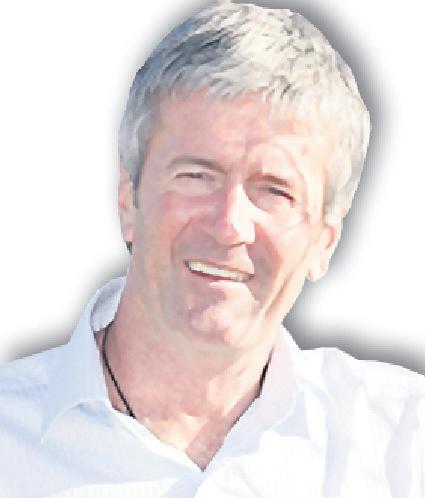
 Food Safety and Rural Communities
Food Safety and Rural Communities
The talk was followed by a very good Q&A session. I was impressed by the breadth and depth of questions from these students. They asked about trade, industry challenges, food affordability, alternative proteins, vertical farming systems, regulation, the future of wool, impacts of current production systems on the environment, politics and, of course, soils.
A question came about how we can tackle globally the persistent soil degradation that’s occurring.
Soil is precious to us, for the obvious reason that it provides our food.
Even as to demonstrate the point, the word humus – the top nutrient-rich layer of soil – is the Latin word for earth. It’s also the root word for human. Humility is derived from the same word, humilitas, one who is grounded or near to the earth.
Down to earth
Toward the end of July I visited Lincoln University to give a guest lecture to soil science students and visit a couple of research projects being carried out by Lincoln and Ravensdown.
‘Down to earth.’ It’s a characteristic of Kiwis, which more than likely comes from our connection to the land.

According to the Food & Agriculture Organization (FAO), it can take up to 1,000 years to produce just 2-3cm of soil.
While 95% of our food comes from soils, 33 per cent of our soils are degraded and over 90 per cent could become degraded by 2050. Nutrient imbalance is one of the leading causes of degradation.
The food we eat is a reflection of the soil it is grown in. Healthy soils means healthy, safe, and nutritious food. Our soils are affected by how we use them to grow food, fibre, feed and biofuels.
Our capacity to feed 9.8 billion people in 2050 will depend on our ability to keep our soils alive and thriving. It follows that soil sci-
ence is of vital importance.

New Zealand as a landmass has, geologically speaking, just popped up out of the ocean. We’re not like La Pampas of Argentina, which has metres of topsoil. We have pockets of some of the finest soils –some are in Canterbury where a world record wheat yield of 17.39 tonnes per hectare was achieved in 2020 near Ashburton.
But in many instances we are still developing the depth and fertility of many of our soils.
In September last year the Government issued the National Policy Statement to recognise and protect Highly Productive Land from urban sprawl. 15 per cent of our land is classed as highly productive and once good soil disappears under asphalt and concrete it suffocates.
Soils have a critical to play a role in climate change. The FAO have said that sustainable soil management can offset 5 - 20 per cent of greenhouse gas emissions. This is an area that I’m interested in. The Government has been investing in research on this through the Sustainable Food and Fibre Futures fund, which has put over $50 million into scientifically validating the claims of regenerative farming – which makes much of soil carbon capture.
Cyclone Gabrielle saw enormous amounts of topsoil going out to sea. It highlighted how fragile the situation can be.
The sustainability of our food systems at a fundamental level are in the hands of our soil scientists and the students digging into this fascinating topic. When we look after our soils, they look after us.
Regulations pushing up the price of food
New Zealand’s farmers continue to deliver for the country’s economy, but they’re being weighed down by an onslaught of government rules and regulations.


with todd McClay
National Party Spokesperson

for Agriculture
Each week I receive calls from farming leaders about how hard it’s getting on the farm and the effect this is having on mental health and confidence in our rural communities.
Labour’s regulatory onslaught on agriculture has left farmers and their livestock tangled in a messy bureaucratic nightmare. Since coming to office in 2017 there has been more than 20 new or amended laws and regulations that directly affect the ability of farmers to produce food. Christopher Luxon has rightly compared it to 20 tennis balls coming at you at once. Even a farming Roger Federer couldn’t defend against it.
It’s now clear that Labour believes you can run farms from Wellington – well they’re wrong. Their one-size-fits all approach to regulation has real implications for rural New
Zealand. It drives up costs and drives farmers out of business – at the very time New Zealand needs them to be producing more to get the economy back on track. Labour and the Greens continue to demonstrate just how out of touch they are.
One example is the reform of the RMA and the negative effect this will have on farms. Labour has said they want to simplify the legislation – except they’ve taken an 800-page law and decided to replace it with two new laws that total 1300 pages. National opposed Labour and the Greens in Parliament as they race to force through the Natural and Built Environment bill before the election.

Their proposal will limit water take and land use consents and is largely unworkable. Food and Fibre Leaders Group have written to the Prime Minister asking him to delay the passage of this legislation until after the election as it will hit farming businesses – so far their pleas have fallen on deaf ears.
NEW MF 8S SERIES 205 – 305 HP
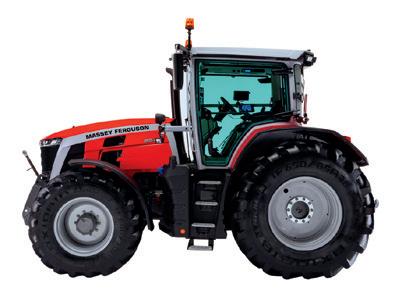
In the same vein of unworkable policy, after three years and two postponements, the Government has yet to finalise the rules for farm plans, leading to confusion and frustration among farmers. This bureaucratic red tape leaves hard-working farmers caught in the crossfire between central and local government. Helicopters flying over head and searching for farmers considered to be breaking the rules has already begun in Southland.
The government should press pause on its winter grazing regulations until the farm plan rules are firmly in place. This would alleviate the need for resource consents and spare diligent farmers from receiving legal threats.
As part of our Getting Back to Farming policy, National is committed to stopping resource consents for winter grazing and replacing the complex winter grazing slope rules with a more pragmatic catchment-based approach. In doing so, National
aims to create a collaborative and harmonious relationship between farmers, local communities, and government entities, where environmental protection goes hand in hand with the prosperity of farmers and the nation as a whole. It acknowledges that a one-sizefits-all approach is not suitable for addressing the diverse needs of farmers and their land. Instead, it seeks to tailor regulations and guidelines based on specific catchment areas, ensuring that farmers can adopt sustainable practices that suit their individual circumstances.
National takes immense pride in backing New Zealand’s world-leading farmers and remains dedicated to supporting their journey towards sustainable growth while preserving our precious environment. With a focus on empowering winter grazing and easing regulatory burdens, National envisions a brighter and more prosperous future for our agricultural sector.
NEW CAB ENVIRONMENT - The quietest cab on the market offering 360° visibility



NEW DYNA-7 AND DYNA VT TRANSMISSIONS25% increased efficiency and 5% better fuel economy
Engine Efficiency- max power and torque at low engine revs cuts fuel consumption by 10% and reduces noise level
100% CONNECTED - Comes with free 5 year MF Connect telemetry subscription and optional precision farming suite


JJ LTD CHRISTCHURCH


Henry Williams 027 260 7821
henry.williams@jj.co.nz jj.co.nz
4 August 2023 CANTERBURY FARMING ]
]
]
LOCAL
SINCE 1958
DRIVING
FARMERS
DEMO
AT JJ'S CHRISTCHURCH
BOOK AN 8S
NOW
FARMING NEWS
]
]
]
Farm plan pilot study opening eyes

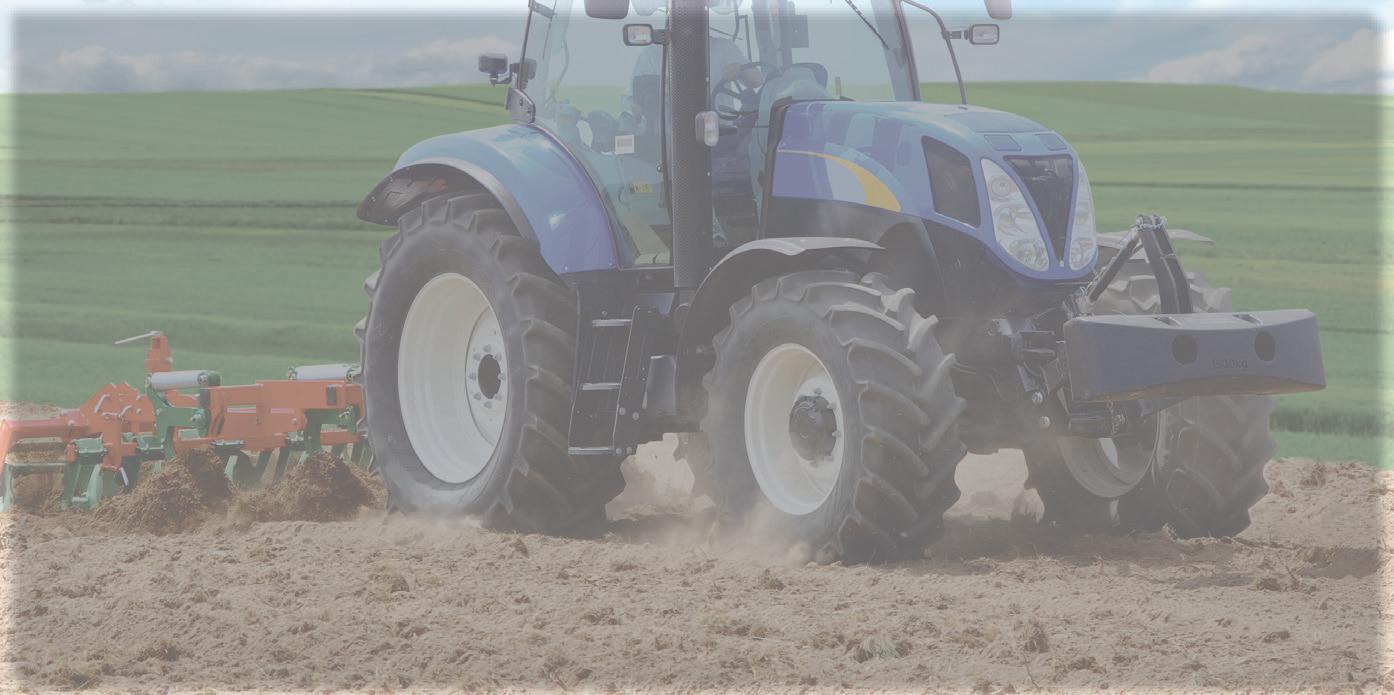
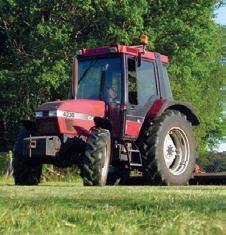

Farmers and rural consultants participating in the Waimakariri district ‘Next Generation Farming’ pilot study, say the process “opened their eyes” to possibilities for improvement in farm businesses, but was also challenging.
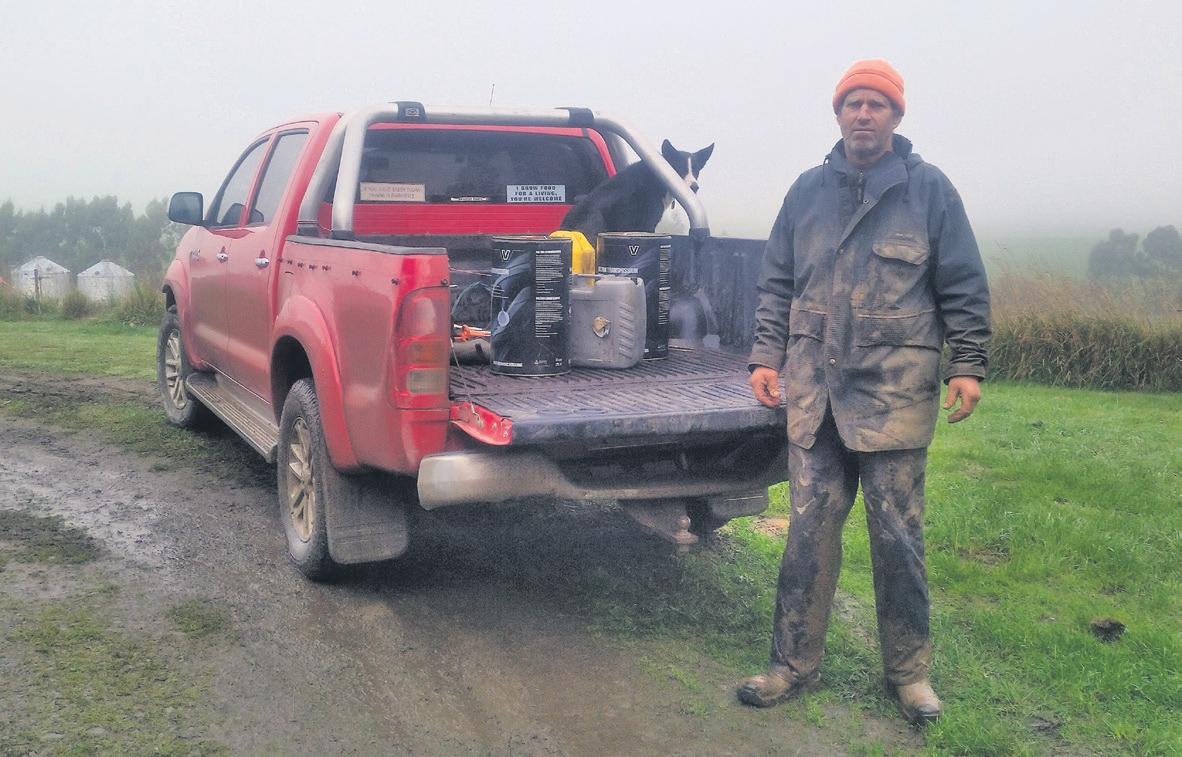
] by Kent Caddick



The three-year pilot study, which is in its third year, looked at how Integrated Farm Plans (IFPs) help farmers work with consultants to develop practical solutions for managing farms in ways that are environmentally and culturally sustainable, while remaining profitable and financially secure.
The initiative is led by the Waimakariri Landcare Trust (WLT) with funding from the Ministry for Primary Industries’ Sustainable Food & Fibre Futures fund.
IFPs involve pulling together activities many farmers and their consultants already do, but often in separate, unconnected processes. The idea of the IFPs is to make these processes more effective by bringing them together under one plan.
North Canterbury dairy farmer Harry Meijer said that despite him being “on the wrong side of 60”, the integrated process has shown him how improving the human resources side of his business will give better results.
“The initial conversation (with the consultants helping develop IFPs) identified we were on track with our farm and business management. However, we had opportunities in our human resources side of things,” Meijer said.


“We were interviewed by specialists in that area and some of the questions were quite uncomfortable. But that made us delve a bit more into what we do, especially regarding how I instruct and encourage staff so they can perform at their best.

“I’ve had lots of great mentors who have given me opportunities as I’ve grown in farming. It’s my role now to give those opportunities to new ones. That means giving space.
I’ve grown as a person through this process, because I’ve learned to be less involved, less hung up and step back a bit.”
John Donkers of Dairy Farm Management Services said his experience of the IFP pilot is how often farm owners can be really good farmers but poor business managers.
“I’m constantly surprised at how poorly some farmers run their business. Not their farm – but their farm business,” Donkers said.
“The irony is that they get up every day and manage the risk of the weather. Most farmers generally do this pretty well. But in
TRACTOR PARTS



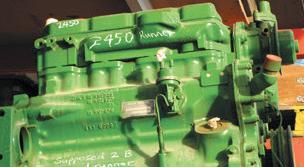



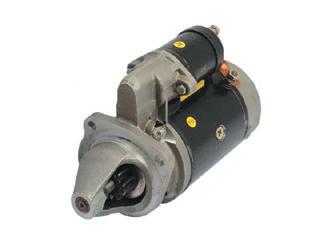
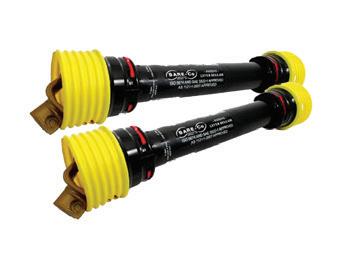


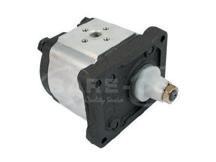

terms of risk management, that’s where it stops. They don’t apply those same skills to a whole lot of other areas of their business, such as people management and environmental, animal welfare, and financial risks.”

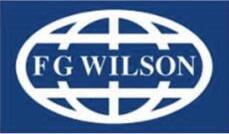
Donkers said that while he focuses on risk management, the positive side of this is that by identifying and managing risk properly, opportunities are also revealed.

“I ask farming couples and families, ‘are you having the right conversations? Do you talk about the performance of your business and how you might improve and how you might manage risk?’”
Improvement: North Canterbury dairy farmer Harry Meijer says the Integrated Farm Plan process has shown him how improving the human resources side of his business will give better results.
irony is that they get up every day and manage the risk of the weather.

generally do

in









































CANTERBURY FARMING August 2023 5 www.agspares.co.nz TRACTOR PARTS NEW & USED HIGH QUALITY NEW PARTS FOR MOST TRACTOR MAKES & MODELS PLUS THOUSANDS OF USED PARTS FOR MOST TRACTOR MAKES & MODELS ORDER ONLINE FOR FREE FREIGHT. T&C’S APPLY HYDRAULICS LINKAGES SEATING PTO SHAFTS & PARTS ELECTRICAL AGRICULTURAL GEARBOXES REAR AXLE & TRANSMISSION Over 60 engines Late model, low hours Most major brands
& DISMANTLING
‘the
Most farmers
this pretty well. But
terms of risk management, that’s where it stops.
John Donkers
FARMING NEWS
Dairy Farm Management Services
Proud to introduce the newest member of our North Canterbury Rural and Lifestyle Team





Louisa Harmer, from Property Brokers, is a familiar face in the Cheviot district. Having grown up on a sheep and beef farm and now residing on her own farm with her husband, she has a deep-rooted connection to the farming community.
With a strong background in sales, marketing, and even truck driving and earthmoving, Louisa brings a diverse skill set to the table. She combines her farm upbringing with her professional expertise, ensuring she has you covered every step of the way.
Louisa’s active involvement in the farming and show jumping worlds has allowed her to build strong connections across various sectors, keeping her wellinformed and up-to-date with the market trends.


As a dedicated wife and loving mother, Louisa understands the importance of family and trust. She knows that selling your property is not just a financial transaction, but a personal and emotional journey.
You can rely on her to provide utmost care, transparency, and professionalism throughout the process.
Based on her family farm, Louisa and her husband also own an Earth Moving business, giving her valuable insights into the importance of teamwork. She knows that success is achieved through collaboration and effective communication.
When you choose Louisa as your real estate agent, you can count on her to work seamlessly with you and other professionals to achieve your goals. For a trustworthy and reliable real estate experience, contact Louisa Harmer today. Let her expertise, genuine care, and strong work ethic guide you toward your real estate aspirations. Together, we can make your dreams a reality.
For rural and lifestyle property advice please call Louisa today on 027 848 5912





North Canterbury Properties For Sale

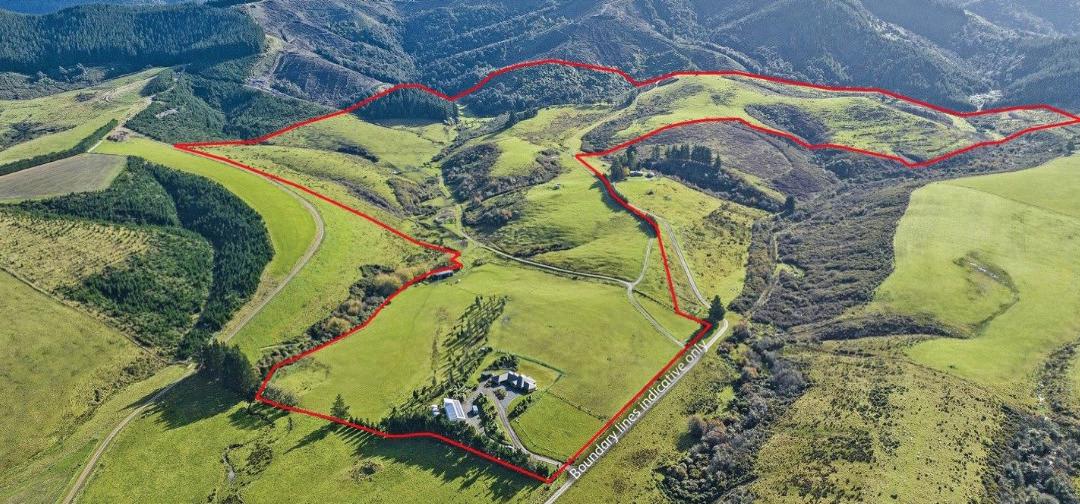



6 August 2023 CANTERBURY FARMING Property Brokers Ltd Licensed REAA 2008 0800 367 5263 | pb.co.nz
1481L State Highway 1, Kaikoura Fraser Ibbotson 021 574 037 0.5 ha 320 Island Road, View Hill Hamish Anderson 027 678 8888 24 ha 225 Bald Hills Road, Glentui Maurice Newell 027 240 1718 236 Sherwood Road, Waiau Maurice Newell 027 240 1718 296 ha 73 ha
To find out more information on any of these listings, please contact our sales consultants or visit pb.co.nz PB069116 Louisa Harmer Rural/Lifestyle Sales Consultant M 027 848 5912 E louisa.harmer@pb.co.nz Gareth Cox Canterbury Rural Manager M 021 250 9714 E gareth@pb.co.nz FARMING NEWS
Three in a row for Timaru honey producer
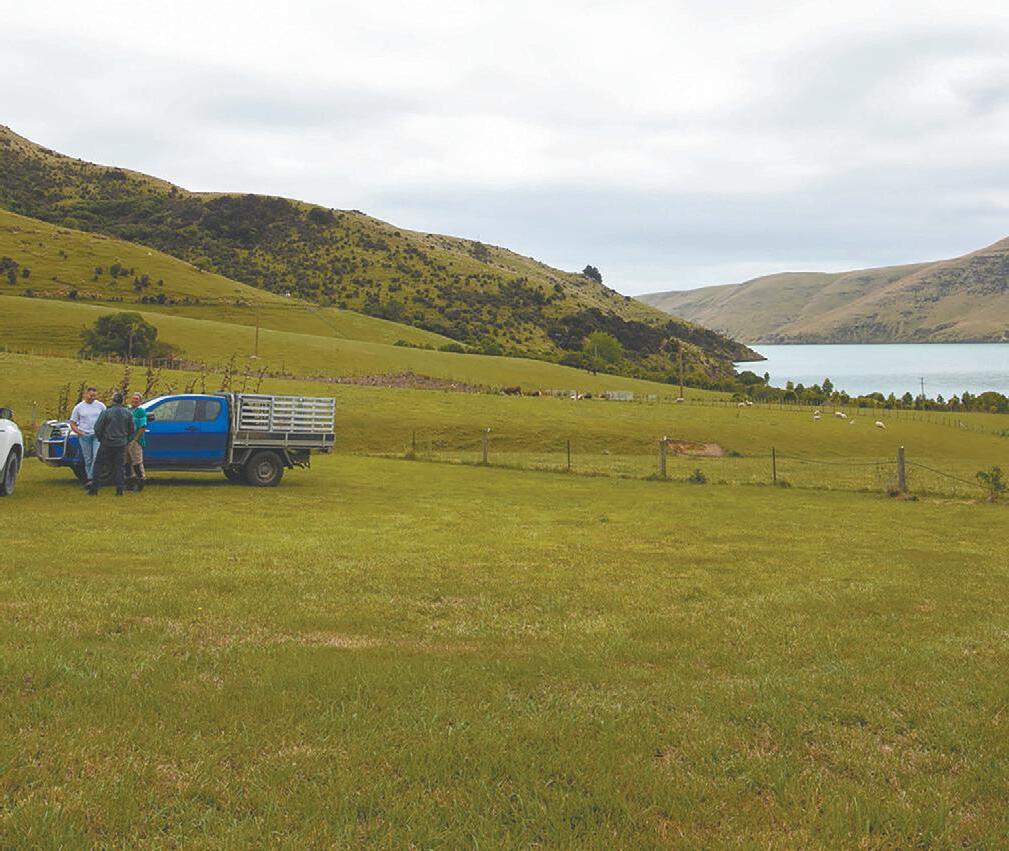
For the third year Timaru’s The Manuka Collective has taken out the Supreme Award at the Apiculture NZ National Honey Competition.
] by Kent Caddick
New Zealand’s best honey producers were revealed as part of the industry’s annual conference in Rotorua recently.

The conference hosted 700 delegates from the apiculture industry at the Rotorua Energy Events Centre. The National Honey Competition, held before the conference, featured products across a range of honey categories from creamed honey to chunky honey and cut honeycomb.
The 2023 Kiwi Labels Supreme Award winner was Timaru-based The Manuka Collective, which took away the award for the third year in a row.

Jarved Allan, The Manuka Collective’s operations manager, received gold medals in five classes in the competition: Naturally Granulated Honey (Light); Creamed Honey (Medium); Monofloral Manuka Honey; Honeydew Honey and Special Reserve. In addition The Manuka Collective received silver medals in the Liquid or Clear Honey (Light), Naturally Granulated Honey (Dark) and Creamed Honey (Dark) classes as well bronze medals in the Liquid or Clear Honey (Dark) and Product of the Hive categories.
Head judge Maureen Conquer said that the quality of honey improved again this year with very few points separating the top three entrants.
All entries were blind-tasted, and an international scale of points was used to determine the winners across 10 main categories.
Once again, the honey tasting was opened up to conference attendees and a People’s Choice award given. Kaimai Range Honey’s Jody Mitchell produced the crowd favourite in this category. A selection of less common varieties were included in the tasting such as avocado, lavender, willow and
Spanish heather honeys.
The Apiculture New Zealand Conference was also an opportunity to celebrate other successes within the industry with awards presented to those making outstanding achievements in apiculture science, innovation, sustainability and photography.
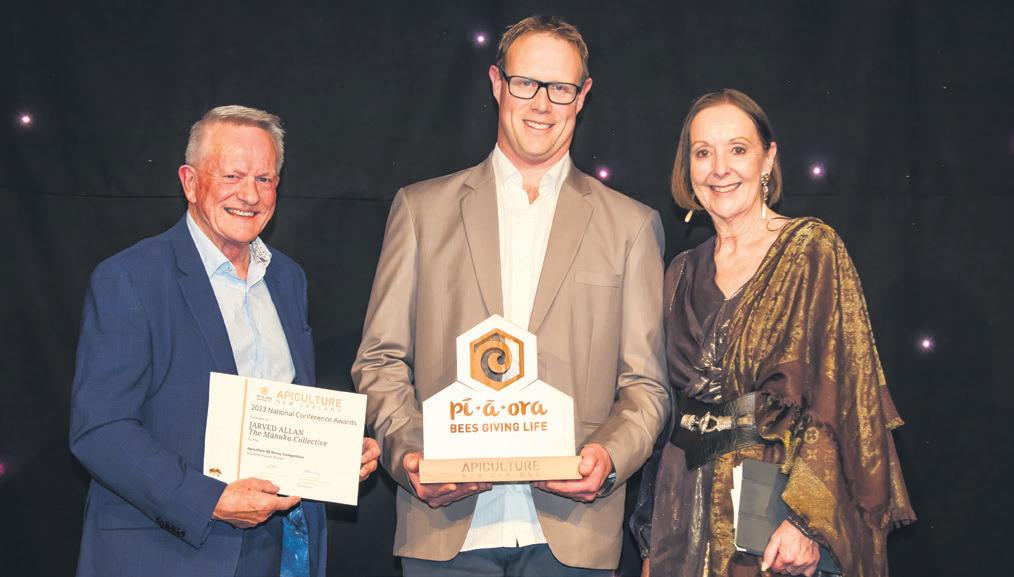
Rotorua-based forest entomologist Stephanie Sopow of Scion (New Zealand Forest Research Institute) was awarded the Peter Molan trophy for exceptional contribution to apiculture science. The arrival of the giant willow aphid to New Zealand has caused a broad range of impacts not only on host trees, but also on bees and beekeepers, as a result of bees and wasps harvesting the aphid honeydew. Sopow has been leading work on the biological control of giant willow aphid with a parasitoid as part of the Ministry
for Primary Industries’ Sustainable Farming Fund project ‘Management of Giant Willow Aphid’.
Glasson Apiaries, based in Blackball on the West Coast, received the ApiNZ Sustainability Best Practice Award Blackball on the West Coast. Sustainability has been their ethos from how they manage their hive locations, keeping locations close to base, to careful management of bee health and creating enduring relationships with landowners and staff.
The Roy Paterson award for innovation went to another sustainably-produced product, the Kopani pallet cover. This plant-based product (made from hemp fibre) created by Stuart Fraser of Natural Sugars reduces the reliance on plastic for wrapping hives.
The ‘Unsung Hero Award’ went to a trio of



busy bees this year, with Barry Foster, John Mackay and Steve Jackson from Tairawhiti/ Gisborne receiving their ward for their outstanding work in supporting beekeepers in their region following Cyclone Gabrielle. They went above and beyond to help local beekeepers, from coordinating practical help to organising social events.
The Supreme winner in the ApiNZ National Photography competition was Cryn Russell of Haumoana, Hawke’s Bay with a close-up photo of a bee on a daisy.

CANTERBURY FARMING August 2023 7 What’s our future, Canterbury? HELP US PLAN FOR THE FUTURE OF OUR COMMUNITIES AND THE ENVIRONMENT. Tell us what you think at ecan.govt.nz/ourfuture Over the next few months we will be asking you to share your feedback and thoughts on air, land and water, our coast, built environment, and climate change. Do we have the balance right, are we doing too much or not enough? E23/8415
Photogenic: the winning image from the Apiculture New Zealand National Photography Competition’s supreme Award, ‘Bee on Daisy’ by Cryn Russell (Hawke’s Bay).
FARMING NEWS
Supreme winner: Jarved Allan of timaru’s the Manuka Collective receives the supreme Award at the 2023 Apiculture New Zealand National Honey Competition. He is pictured with competition sponsor Kiwi Label’s Kevin Powell (left) and honey judge Maureen Conquer (right). Photo by Jeremy Hill
with Andrew Wyllie ]

 Forsyth Barr
Forsyth Barr
Markets taking things in their stride

In the United States, economic data has generally been better than expected, and expectations for a US recession have largely been pushed back from 2023, into 2024 instead.
The S&P500, the main US stock market index, officially entered a bull market (a rally of 20%+ from its low in October 2022) in June, helped to a large extent by strong performances from large technology stocks.
In general, the stocks that have had the strongest returns since the start of the year are some of the ones that got hit hardest in last year’s sell-off.
While for most of 2022 the majority of global economies were facing similar issues – high inflation requiring rapid interest rate increases – we are now seeing more divergence in the outlook. In the US and Europe, central banks appear to be close to the end of their rate hikes, with one or maybe two more 25bp increases to come. In the UK, the picture is decidedly different as the economy struggles with still rapidly rising prices and wage pressures. The Bank of England is expected to hike interest rates at least another 1.25 percentage points from here.
The Australian economy is experiencing a



Looking at off-farm investments?
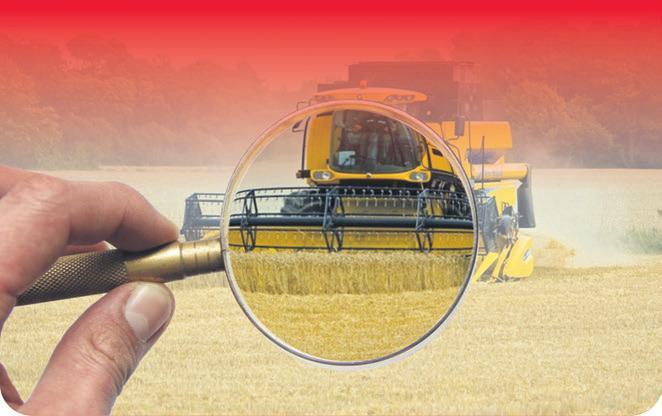




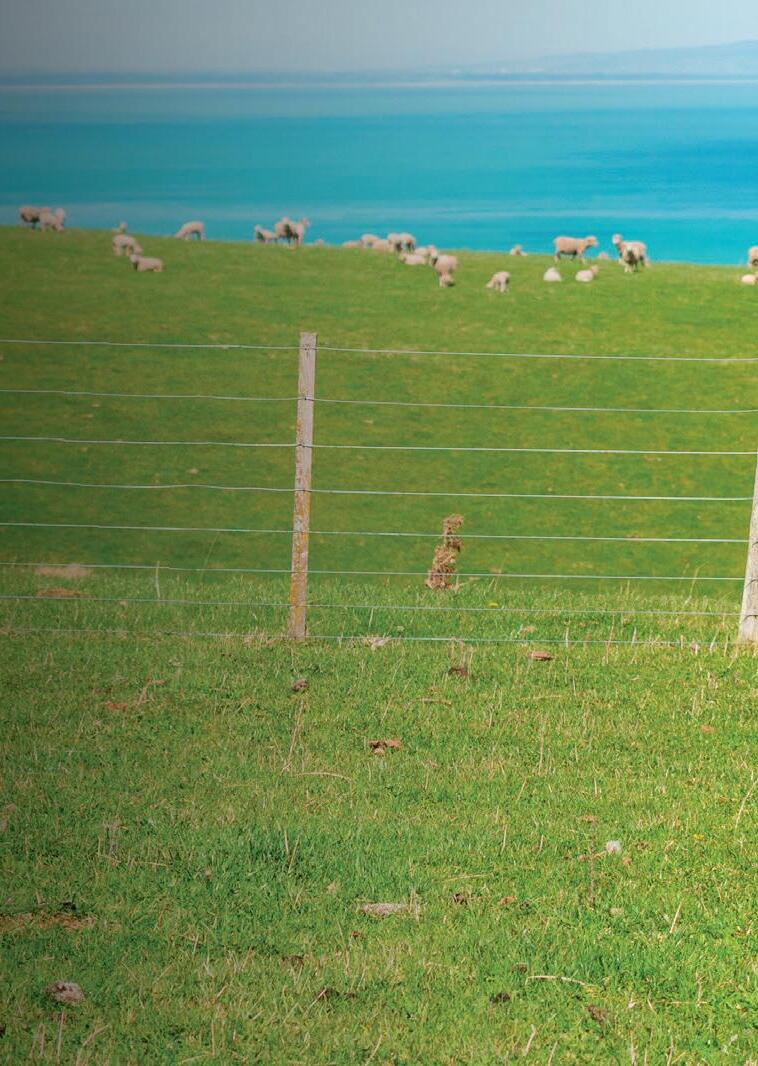
mild slowdown. The economy grew at a pace of 2.3% over the year to March 2023, helped by strong population growth with net migration into the ‘lucky country’ surging in the past year.
The labour market remains robust and the housing market has started to pick up in recent months. The Reserve Bank of Australia is expected to hike its cash rate once or twice more from here.
The Reserve Bank of New Zealand (RBNZ) delivered a 25bp interest rate hike in May and suggested that it would be the last rate rise in this economic cycle. The RBNZ now expects the official cash rate (OCR) will remain on hold at 5.50% until toward the middle of 2024 before starting come down again (but of course a lot can change between now and then!).

Inflation remained elevated at 6.7% over the year to March but is expected to fall back to below 3% by the middle of next year.
The NZ economy is showing clear signs of a slowdown, with economic growth contracting -0.1% over the March quarter.
That followed a decline in GDP at the end of 2022, officially putting NZ into a technical recession (two consecutive quarters of negative growth). The outlook from here is for a sluggish econ-
When you are thinking about your investment options, talk to Forsyth Barr

To get personalised investment advice and portfolio management specific to your investing needs, talk to Investment Adviser Andrew Wyllie in confidence on (03) 365 4244 or email andrew.wyllie@forsythbarr.co.nz


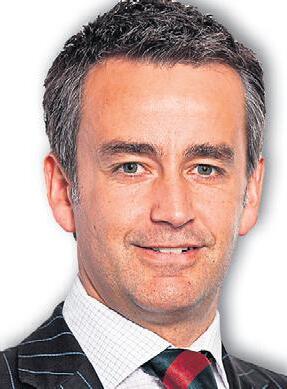

omy over the rest of 2023 as high interest rates hinder consumer spending and business investment.
While we don’t expect New Zealand to experience a recession like we did following the Global Financial Crisis (GFC) back in 2009, the economy is likely to feel less exuberant than we have seen in recent years and the unemployment rate is forecast to pick up from historically low levels back toward 5%.
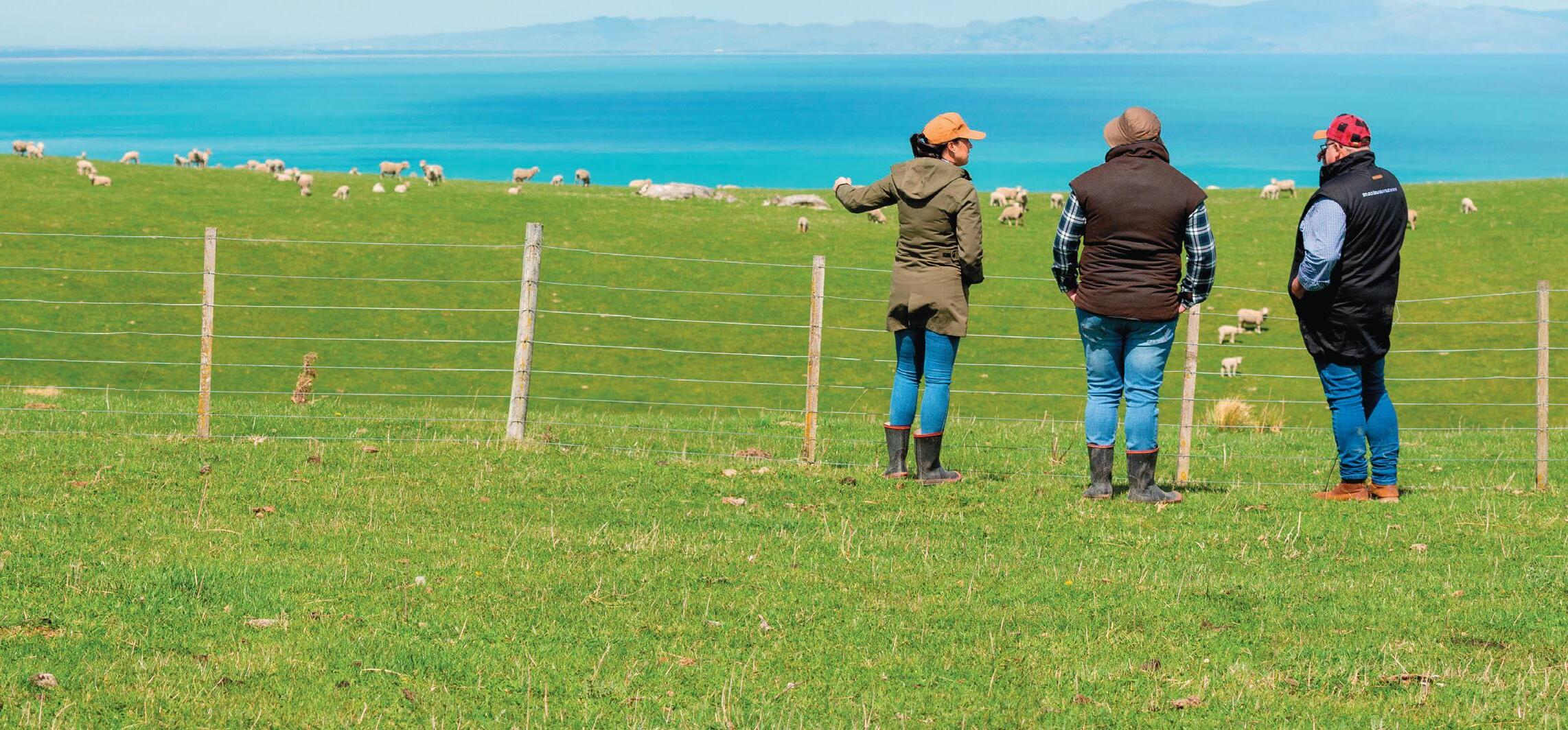
The first half of 2023 has been a more constructive period for investors and we have seen gains across a number of asset classes. However, as we look out across the balance of the year, we remain cautious.
The effect of rapid interest rate hikes impacts economies with a lag, and we have not yet seen the full brunt of monetary poli-
cy tightening play out. The past six months, however, have reaffirmed that the key to consistent returns is sticking to the plan. this article was prepared as at 30 June 2023 and provides market commentary for the three-month period ending on that date. We appreciate that market volatility and economic uncertainty doesn’t make an easy backdrop for investors. to discuss your investment options please contact Andrew Wyllie, who is an Investment Adviser and is Forsyth Barr’s Christchurch Branch Co-Manager. He can be contacted regarding portfolio management, fixed interest, or share investments on 0800 367 227 or andrew.wyllie@forsythbarr. co.nz. this column is general in nature, has been prepared in good faith based on information obtained from sources believed to be reliable and accurate, and should not be regarded as financial advice.

8 August 2023 CANTERBURY FARMING Is farm subdivision on your horizon? Call us now for great subdivision advice. Call 0800 787 775 for a chat hello@survusrural.co.nz www.survusrural.co.nz RURAL PROFESSIONALS
Property | Family | Wills Trusts | Estates | EPAs | Rural Business | Traffic | Employment Leeston (03) 324 3033 Email: lawyers@anglands.co.nz | www.anglands.co.nz Solicitors of Selwyn since 1965 Ronald W. Angland & Son LAWYERS
]
CHC6189-02March 2021
New opportunities but uncertainty for some
Cantabrians will no doubt be aware that on 9 July New Zealand entered into a new free trade agreement on (FTA) with the European Union (EU). This FTA will increase New Zealand’s market access within the EU, as well as reducing export restrictions by removing tariffs from many exports.
] with Kurt shipley ] Helmore Stewart Lawyers









One notable consequence of this FTA will be its impact on the naming of everyday produce. In the realm of intellectual property law, the naming rights to particular products are protected by Geographical Indications (GIs).
These act as signifiers of particular geographical areas, which are applied to products in order to mark a specific quality or characteristic. In New Zealand, GIs are regulated by the Geographical Indications Act 2006 (the Act).



Currently, the Act only covers GIs registered in Aotearoa. This means that many overseas products imported into this country are not protected by GIs, as there is generally no automatic obligation to recognise these internationally. Many products that may be protected by a GI overseas can be made and named within Aotearoa without issue.
The EU-NZ FTA will trigger some changes to the regime the Act currently provides. As part of negotiations, the EU has agreed to apply NZ GIs over wine within the trading bloc. In return, New Zealand has agreed to amend its GI legislation to allow EU producers the exclusive use of GIs for European imports.

At a practical level, this means that New Zealand producers will not be able to brand their own products with particular geographical names.
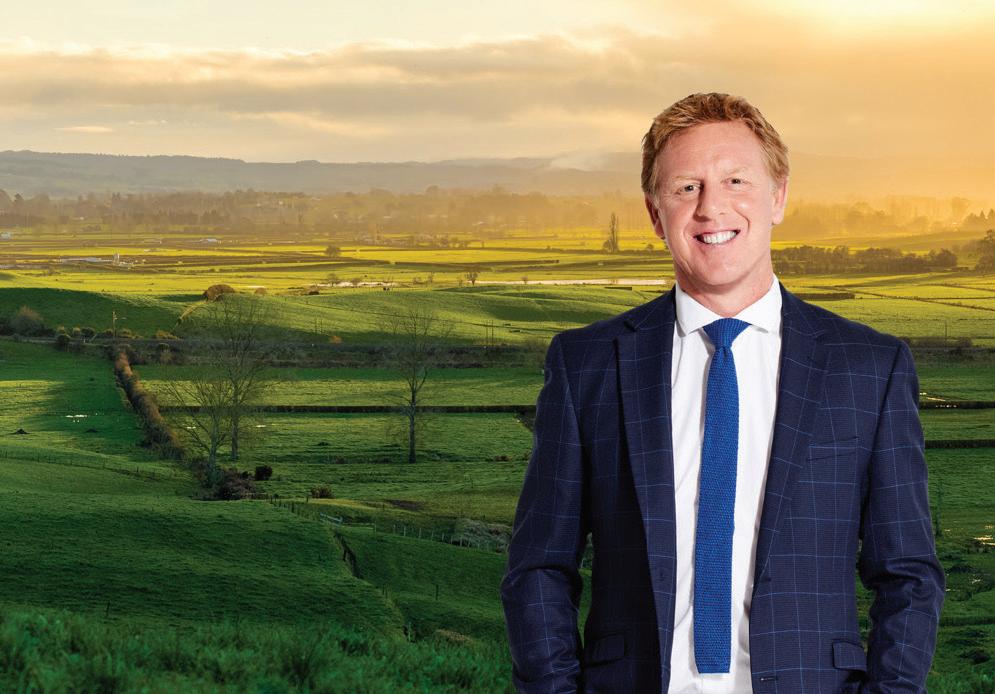
Words such as “sherry”, “port” and “feta” will eventually be prohibited from being used by New Zealand producers. There are approximately 2,000 names nominated by the EU that will be part of the GI protections within the FTA.

A transitional period will give time for producers to adjust to these changes, which will be from five to nine years depending on the particular product in question. Alongside those that have been agreed, each party to the FTA will be able to nominate up to 30

new GIs to be protected by the other every three years.
Although the FTA opens new opportunities for primary industries within the European market, changes to the GI regulatory structure will cause uncertainty for some.
More information on these incoming changes can be found on the Ministry of Foreign Affairs and Trade website. If specific tailored advice is needed, producers will need to seek specialised intellectual property advice.
CANTERBURY FARMING August 2023 9 PROFESSIONAL RURAL REAL ESTATE ADVICE Residential / Commercial / Rural / Lifestyle Ben Turner 027 530 1400 03 375 4736 ben.turner@bayleys.co.nz WHALAN & PARTNERS LTD, BAYLEYS, LICENSED UNDER THE REA ACT 2008 Call Ben today for an altogether better approach to your rural real estate needs along with an up-to-date market overview. RURAL PROFESSIONALS
‘Words such as sherry, port and feta will eventually be prohibited.
Wool carpet for schools


The recent decision made by the Ministry of Education to install synthetic carpet in nearly 800 small and remote schools is concerning.
with teanau tuiono
Agriculture spokesperson
for the Green Party

This move raises questions about the Government’s commitment to sustainability and supporting local communities. The best thing for the environment and rural viability would be investing in sustainable options like wool carpet.
The Ministry of Education defended its decision, citing the American company Milliken as the best overall value due to their performance specifications, supplier cooperation, and cost-effectiveness.
However, as we delve into the long-term implications, we cannot overlook the environmental impact of synthetic materials, they might be cheaper in the short-term but what happens to them once they are in the landfill. The last thing we need is more microfibres in our waterways. Our position, shared by farm-

ers and environmentalists, is that choosing wool carpet would be a win-win solution for both the environment and local communities.
Wool farmers have every right to be frustrated by this decision. We understand that they are facing challenges, and instead of supporting them and investing in our local businesses, we are outsourcing to an offshore company.
Wool carpet offers numerous environmental advantages that make it a more sustainable choice. Wool is a natural, biodegradable, and renewable resource. Its insulation properties not only reduce energy consumption but also contribute to a healthier indoor environment, making it ideal for schools where children spend a significant amount of their time.
We firmly believe that supporting local industries and prioritising sustainable alternatives is the way forward.
We were delighted when Agriculture Min-
ister Damien O’Connor announced support for an all-wool New Zealand carpet company, Bremworth, and their sustainability project.

This recognition of the value of eco-friendly alternatives shows that we are moving in the right direction. Investing in projects like these not only reduces our carbon footprint but also strengthens the economic viability of rural communities. However there must be follow through with that support.
Our choices must reflect our values, the decision between synthetic and wool carpeting is not just about cost or performance; it is a statement about our commitment to a sustainable future. By advocating for wool carpeting in schools, we can lead by example, demonstrating that we prioritise the longterm well-being of our environment and our people over short-term convenience.
Choosing wool carpet for schools is not just a matter of aesthetics; it is an opportunity to weave sustainability into the fabric
of our society. As we continue to champion green initiatives, let us take a stand for farmers, rural communities, and the environment. By supporting wool farmers and making eco-conscious choices, we can build a brighter, more resilient future for New Zealand.
Community input critical in shaping region’s future
Over the next 18 months we will be working to write and update a number of long-term and strategic plans to reflect the direction set by Government, meet the expectations of mana whenua and the wider community, and to respond and adapt to climate change.
] by Peter scott
] Canterbury Regional Council Chair
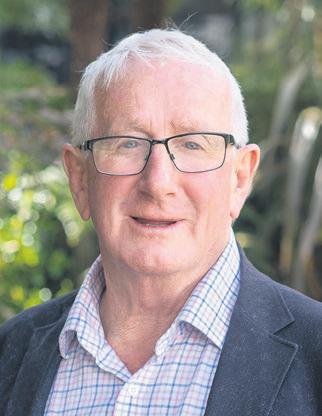


Over time we’ve seen significant changes in the way we use land, from allowing intensive farming, conversion to dairy, to changes to consenting processes. While these and other decisions made under the Resource Management Act were well intentioned, they lacked the science and modelling technology that we have now, which we can’t ignore.
We have some of the strictest environmental rules here in Canterbury, compared to the rest of New Zealand and, although we have made changes over the past decade to limit the impact of our activity on the environment, we’re still not where we need to be.
As the regional regulator, Canterbury Regional Council (Environment Canterbury) is responsible for enforcing the rules that dictate how Cantabrians interact with the environment.
This includes updating the Regional Policy Statement, which is a powerful tool that sets the direction for all other district and regional plans. We are also developing a new climate action plan and updating regional transport plans. We’ve got a lot of ground to cover –and we can only do it well with your help.
As you will appreciate, many of the changes will impact farmers and the rural sector, so I want to make sure that your voices are heard as part of this process, and considered as part of any decisions that we make.
We have developed a survey which I encourage you to seek out and complete. We’re asking you to share your experiences and opinions on some of the different environmental challenges we face in Canterbury/ Waitaha. What is important to you, and what are your aspirations for the region’s future?
This isn’t a once-only opportunity, after this initial survey we will reflect on what we have heard and test some potential solutions with you and the wider community.
Although it’s our responsibility at Environment Canterbury to act on behalf of the environment, it’s up to everyone to work with
to safeguard it for the future.
us to try to protect it. It’s important that the community helps write the changes that are needed because we can’t, and don’t want to do it alone.
To complete the survey visit www.ecan. govt.nz/ourfuture or call 0800 324 636 between 8am and 5pm Monday to Friday. This initial survey closes on Sunday 27 August.
10 August 2023 CANTERBURY FARMING Need a hand with new farming regulations? We’re here to help you understand what’s required. Find out more about: • Winter grazing requirements • Synthetic nitrogen fertiliser use • Keeping stock out of waterways • Irrigation management • Managing wetlands
Good management practices Visit our website to view our resources at ecan.govt.nz/farmers-hub, stop by one of our field offices for a chat, or call 0800 324 636
•
We need to change the way that we use and enjoy the environment,
]
]
]
Future planning: Environment Canterbury is encouraging farmers and other rural residents to take part in a survey which will help shape the region’s future.
‘
FARMING NEWS
Choosing wool carpet for schools is not just a matter of aesthetics; it is an opportunity to weave sustainability into the fabric of our society.
Lamb prices warning
Predictions lamb prices will drop well into single figures per kg should be a major concern to producers.
] by Rob Cope
Farmers are continuing to be bombarded with more and more compliance costs remain at the mercy of the international marketing folk.
Recent headlines from the Government about new trade deals are, it seems, just that, headlines.
I was interested to note that the deal with the EU, which was being trumpeted as an amazing triumph, was looked upon by the Aussie farming industry as a triumph for the EU and certainly not NZ.
They even went on to say they would certainly not accept any similar deals for their producers.
I cannot think of any other industry where the goods are produced, at whatever cost it takes, and then hands the product to someone else who are able to be totally unaccountable due to the World Price loophole.
Just imagine for a moment if the farming industry was like the local councils and the central Government.
Basically, when they cannot make ends meet, they simply increase their incomes by
raising taxes and rates.
During my many years reporting on the farming industry I seen many highs and lows, people walking off their farms with nothing because of droughts, and even having to pay the processing plants to kill old stock because there wasn’t enough for the meat to cover the plants costs.
Remember the media drama when a group of farmers in mid Canterbury invited to a mass slaughter of old ewes and the burial in a pit because the sheep were worthless.
I pray that a situation such as that won’t happen ever again, but have we learnt from our history?
One-liners keep running through my mind. With respect to costs verses returns straws and camels come to mind.
Flogging doesn’t work as an incentive, support does.
Let us hope that whoever holds the Government treasury benches after the election realise how very important part of keeping New Zealand afloat.
We know that, but to find someone to listen seems to be a problem.
] with John Arts
Part 2
Are you taking a joint supplement?
When creating or upgrading a health supplement I use research and best evidence to build a successful formula.
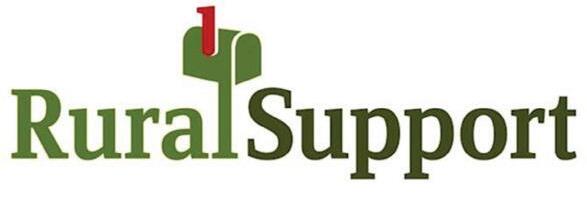

An example of this is the (Aging Clin Exp Res, 2021) peer reviewed study into the effectiveness of high-grade Chondroitin Sulphate (CS).


It concluded that high grade CS at 800mg was effective at reducing symptoms of osteoarthritis. This study was so profound that it resulted in the adoption of CS as a prescription medicine in Europe.
I used this study to help me formulate my joint supplement. I included 800mg (daily dose) of high-grade CS in my formula along with 800mg of Glucosamine sulphate and 200mg of new generation Biosolve® curcumin extract (from turmeric).
I have recently added BioSolve Curcumin because it is fully water soluble with superior absorption and is gentle on the stomach.
I then evaluated chondroitin suppliers, and most were bovine or marine sourced. I found that avian CS has a higher proportion of important chondroitin-4-sulfate and is therefore better absorbed. I chose the high-grade avian CS.
I have now built up a significant record of people using this formula over the past eight years.




While real-life results always vary, those who have implemented my recommendations and follow the review process had real benefits with most saying that the supplements have resulted in greater comfort and mobility.

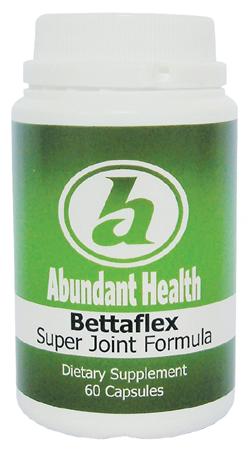
As an example, a person I am currently helping has had worsening osteoarthritis in both knees with X-rays showing significant deterioration in her right knee.

We started her on a programme that included a double dose of my joint supplement and 4000mg of Omega 3 fish oil. She has reported significant improvements over the past 4 months and is now able to walk freely again.
John Arts (B.soc.sci, Dip tch, Adv.Dip.Nut.Med) is a nutritional medicine practitioner and founder of Abundant Health Ltd. For questions or advice contact John on 0800 423559 or email john@abundant. co.nz. Join his newsletter at www.abundant.co.nz.



CANTERBURY FARMING August 2023 11
HEALTH ON THE FARM Abundant Health
enhanced formula
New
Optimising on-farm calcium conversion efficiency

Here at Optimise, we often ponder these questions… How well is your soil converting the calcium in your lime applications?
Article supplied by
CP Lime Solutions


If calcium is so important for proper soil function and plant nutrition, why is it not considered part and parcel of an annual fertiliser programme? And, how can we make the cost of applying calcium to your farm more affordable?
To answer the first question, particle size is a key determinant of a lime’s effectiveness – or any fertiliser ingredient for that matter. Each time the average particle diameter is halved the exposed surface area doubles – hence significant improvements in availability can be achieved by micronising limestone.



There is a school of thought that says that larger particles in traditional aglime will last for longer. This is very true: the issue is that a small piece rock remaining in the soil for a long period is of little agronomic benefit.
AMURI TRANSPORT

It’s all about physics… which makes the chemistry work more efficiently. To be of benefit the liming material must breakdown and release calcium and carbonate into soil solution. Larger particles can influence the bulk soil pH when tested in the lab, but on a paddock lime and the calcium it provides is of little benefit until it is broken down and available in soil solution.
This leads us to the second question, because recognising that improved calcium availability means improved nutrient availability, biological activity and legume performance.


Calcium is the pivotal nutrient to optimise soil, plant and animal function. It enhances fertiliser performance and builds soil resilience. It stimulates photosynthesis, increases nitrogen, potassium and phosphorus absorption and utilisation, improving the quality of plants and crops as well as feeding all-important soil biology. It makes sense to incorporate effective cal-
cium into an annual fertiliser regime to enhance the soil and plants ability to utilise all fertiliser inputs.


This sounds great, but it also needs to fit in with the cost of doing business on the farm. So, if the availability of calcium has increased because the particle size of lime has been reduced, the volumes required can therefore be significantly reduced as well.
That means, if you normally apply 2T/ ha of aglime and all its associated costs, as a general guide you can have the same


If the availability of calcium has increased because the particle size of lime has been reduced, the volumes required can therefore be significantly reduced as well. a

impact with as little as 200-250kg/ha of a finely ground aglime, with a lot less associated costs.
When those fine particles are bundled up into a tight package we not only make the most effective use of a lime resource, we also make the transport and spreading cost onto your farm a breeze (particularly when there is one) but the cost savings can’t be overlooked... and that’s how we Optimise the calcium conversion efficiency to your farm.

12 August 2023 CANTERBURY FARMING by CP Lime Three ways to healthier soil Call us 0508 678 464 or visit cplimesolutions.net.nz to book your test and find out which one is right for your soil. Optimise Fine Magnesium CO3 95% Mg 27.5% CO3 72% S 19.6% Ca 28.8% Optimise Fine Lime Sulphur CO3 95% Mg 27.5% CO3 72% S 19.6% Ca 28.8% CO3 26.5% S 19.1% Ca 9.1% N 12.3% Mg 1.1% Humates 3.6% Optimise Kickstart CO3 95% Mg 27.5% CO3 72% S 19.6% Ca 28.8% CO3 26.5% S 19.1% Ca 9.1% N 12.3% Mg 1.1% Humates 3.6% LivestockFertiliserFreightstock@amuritransport.co.nz fert@amuritransport.co.nz freight@amuritransport.co.nz 56 St Leonards Rd, Culverden www.amuritransport.co.nz Ph: 03 315 3033 F: 03 315 8413 For all your cartage requirements Stock | Accredited Deer Carriers | Wool | Bulk Grain | Weighbridge Daily Freight Service | HIAB Hire | General | Coal | Cement Premis & Shingle Supplies | Lime & Super Spreading (Spreadmark Certification) Bulk Fertiliser Store
]
]
Where does nitrogen come from?
There is a surprisingly large group of mostly young farm owners and operators that believe that if nitrogen is not supplied regularly in manufactured form there will be a deficiency which will limit growth.


] by Peter Burton
They cite the evidence of not applying nitrogen to one paddock or area of the farm and growth in that area almost immediately slows.
It is an accurate observation and reinforces the fact that if anything is removed from an existing programme and not replaced growth will slow, and that applies to all commonly applied nutrients.
There are farmers that have never embraced the philosophy that nitrogen must be applied regularly and when their properties have an abundance of pasture throughout the year the most frequent dismissal is that they are understocked.
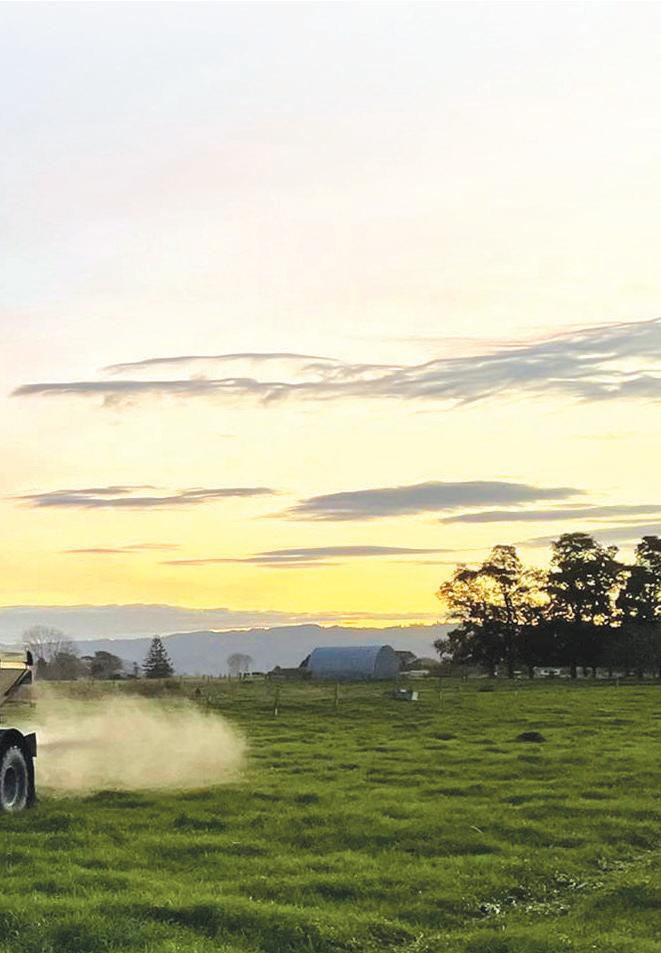

When stocking rate is measured in animal numbers that will often be the case however if stocking rate is measured in animal weight along with kilograms of milk solids, meat and wool produced, their stock units carried is often well above district average.
Where then does the nitrogen required for outstanding production come from? Primarily from two sources, soil microbes that fix nitrogen direct from the atmosphere, however most of it is fixed free of charge by clover.

78% of what we breathe is nitrogen so there is no shortage of this essential gas, it’s how to make it available for plant growth that is the issue.
Permanent grazed pastures were developed in this country with a mix of typically 3 clovers, two whites and one red, along with grasses that included rye, cocksfoot and prairie.
A photo of pasture in Grasslands of New Zealand by Sir E. Bruce Levy in 1970, has the following, “good clovers are essential to exploit phosphate, lime, and other mineral fertilisers and to ensure nitrogen-getting for the grasses of the sward”.
Annual pasture production was measured at between 14,000-15,000lb of dry matter per acre, the equivalent of 15,900kg and 17,000kg dry matter per hectare today.
There are few pastures today that produce anywhere close to that amount of dry matter, perhaps the key reason for farms having to increase in size to remain profitable.
Functional Fertiliser makes two products, CalciZest based on lime and DoloZest using Golden Bay Dolomite. They both contain a wide range of proprietary fungi and bacteria cultured onto soft carbons.
The use of beneficial microbes is to facilitate the uptake of nutrient by plants as it is only through the activity of biology that nutrient can enter plants.

The other important reason for the inclusion of microbes is to speed the rate at which nutrient is cycled i.e., nutrient taken up by roots is replaced.
This speed of cycling is particularly important for nitrogen availability. There is typically 5,000-15,000kg of nitrogen per hectare within reach of plant roots. It has accumulated naturally along with carbon and only a small fraction of that is necessary for annual pasture production of 18,000kg of dry matter per hectare and above.
Clover growing over the summer and early autumn can fix considerably more nitrogen than required for growth allowing for the further accumulation of soil carbon.
Clover flourishes when it’s too hot for
grasses, typically from late November through to mid-March, the reason for clover to be an essential part of pasture mixes. One of the ways to maximise the growth of long stemmed large-leafed clover is by increasing the amount of readily available calcium.
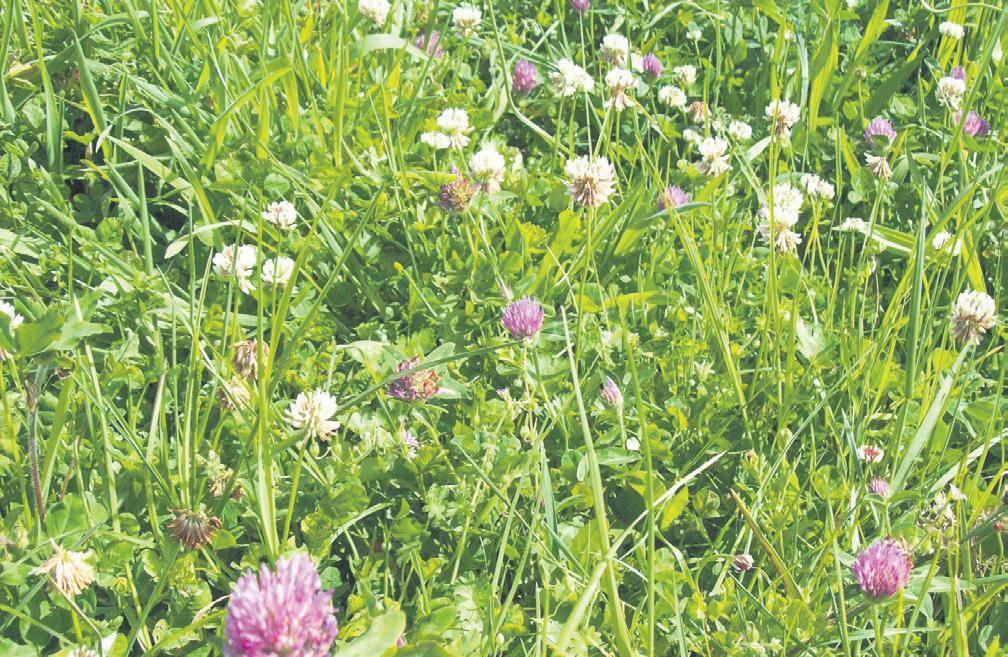

Both CalciZest and DoloZest contribute to the calcium rich environment necessary for strong pest free growth, and for optimum mid-season performance are best applied in spring. For more information call Peter on 0800 843 809.
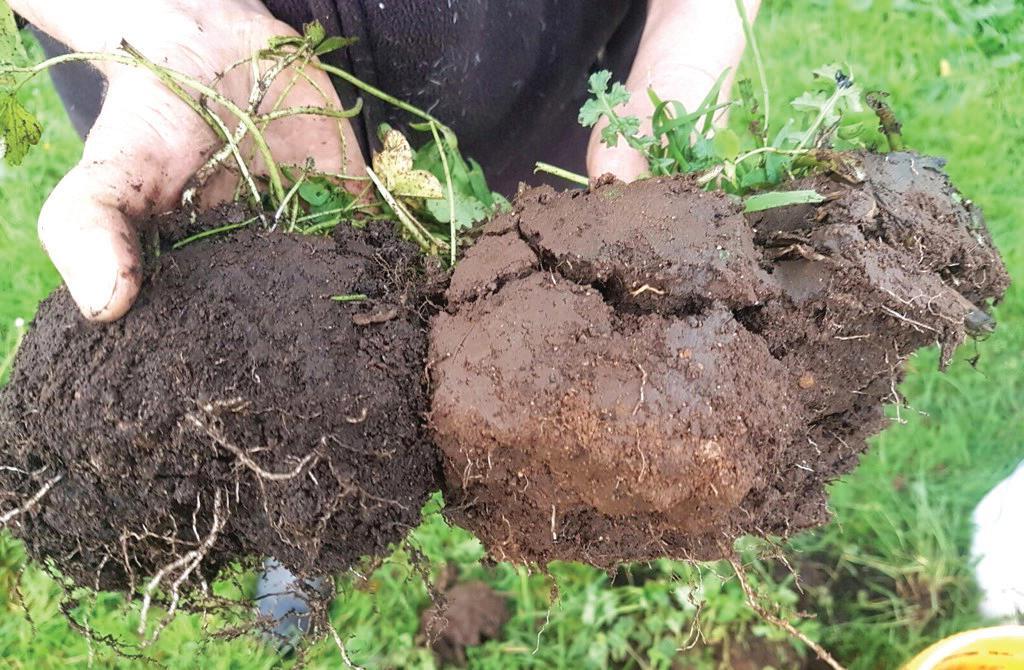
CANTERBURY FARMING August 2023 13
Nature’s way: Clover doing the nitrogen fixing for pasture.
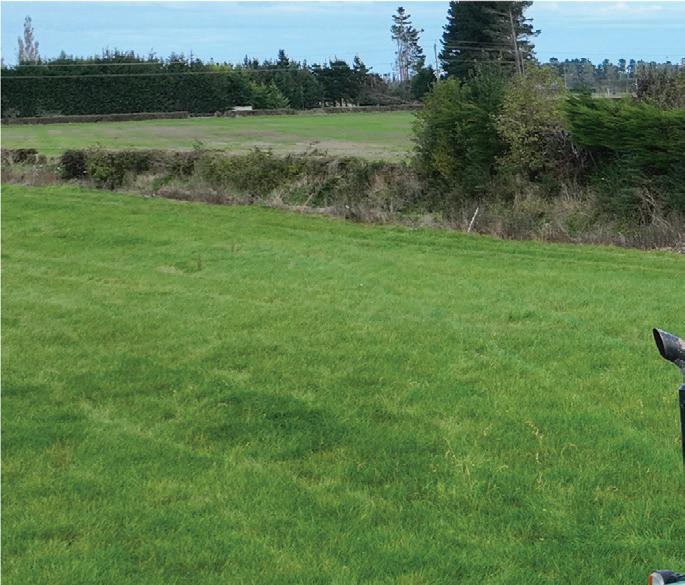
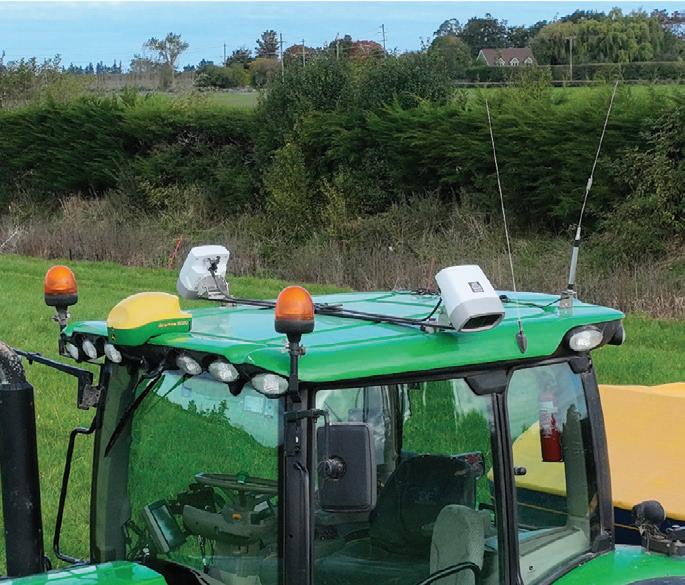
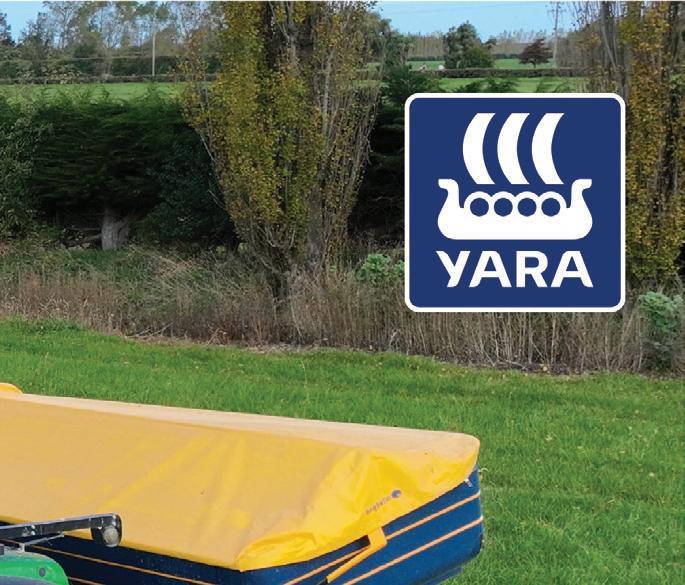
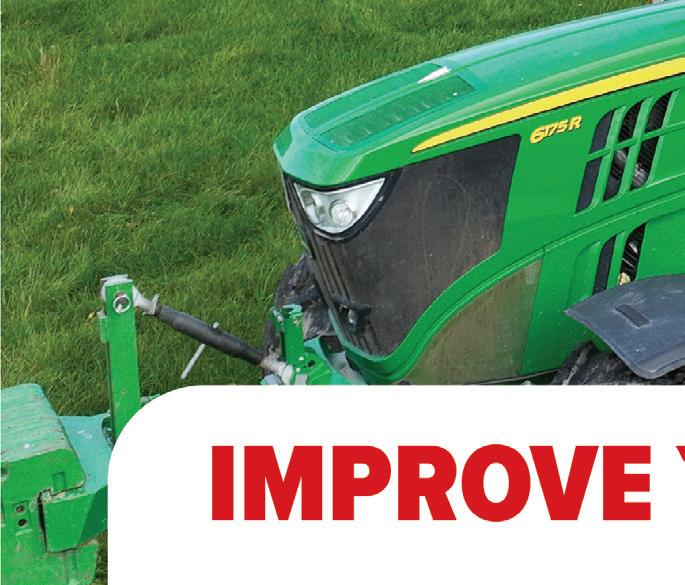


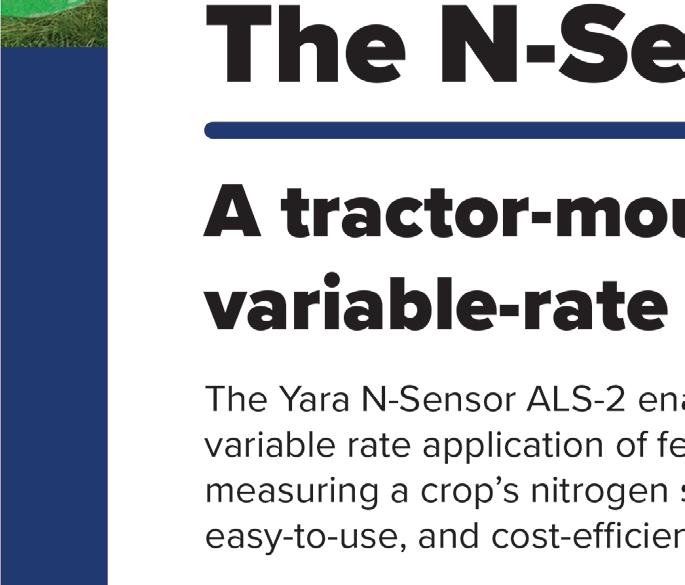
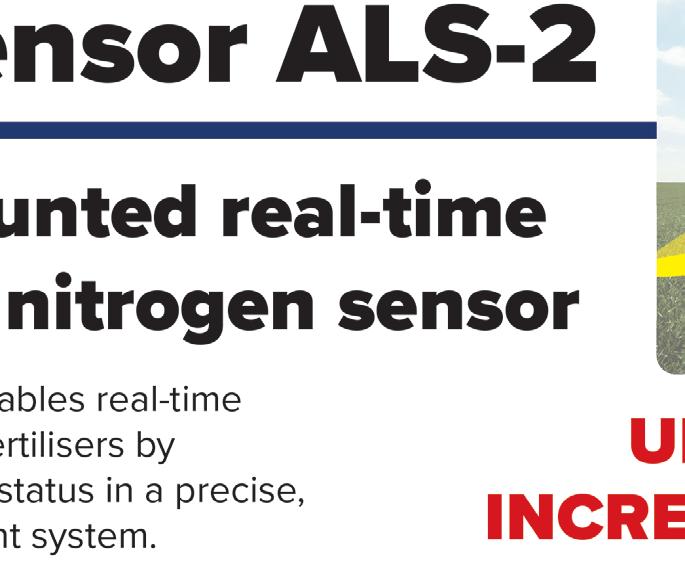
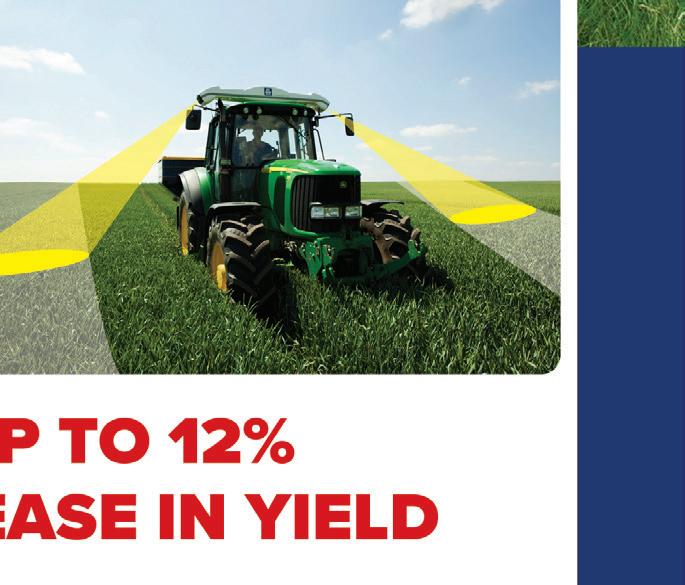

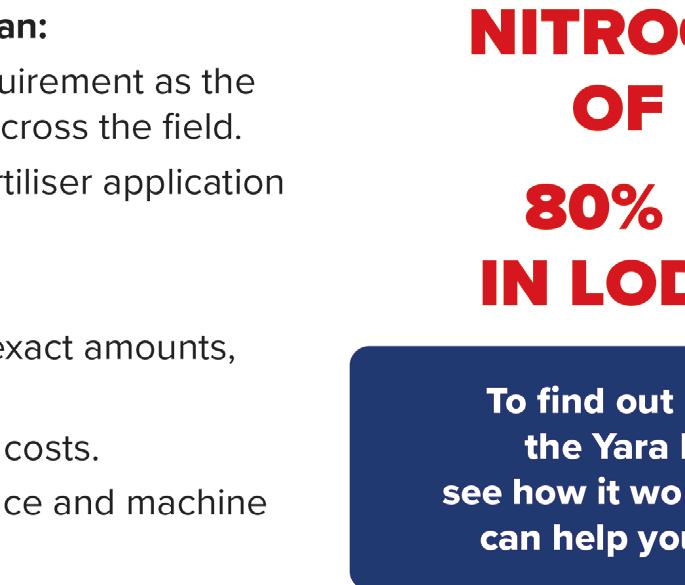



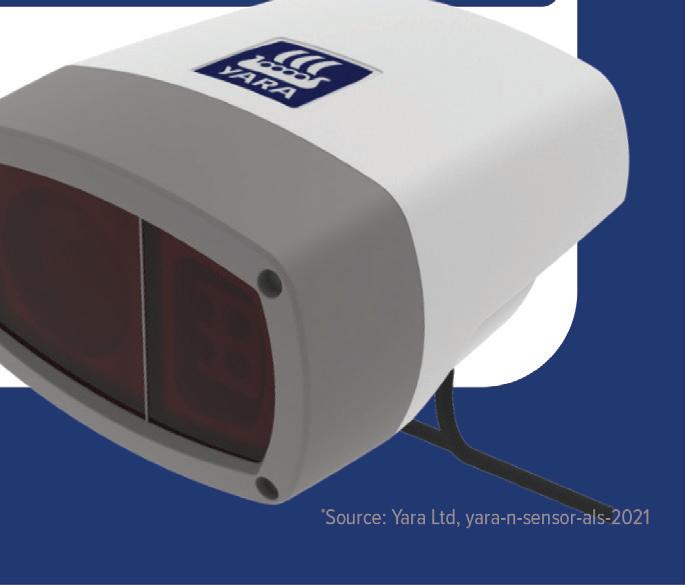
14 August 2023 CANTERBURY FARMING
Yara N Sensor twins science with sense
] Supplied by Drummond & Etheridge
To this end Yara NZ has appointed Drummond & Etheridge as the New Zealand distributor for the Yara N Sensors.

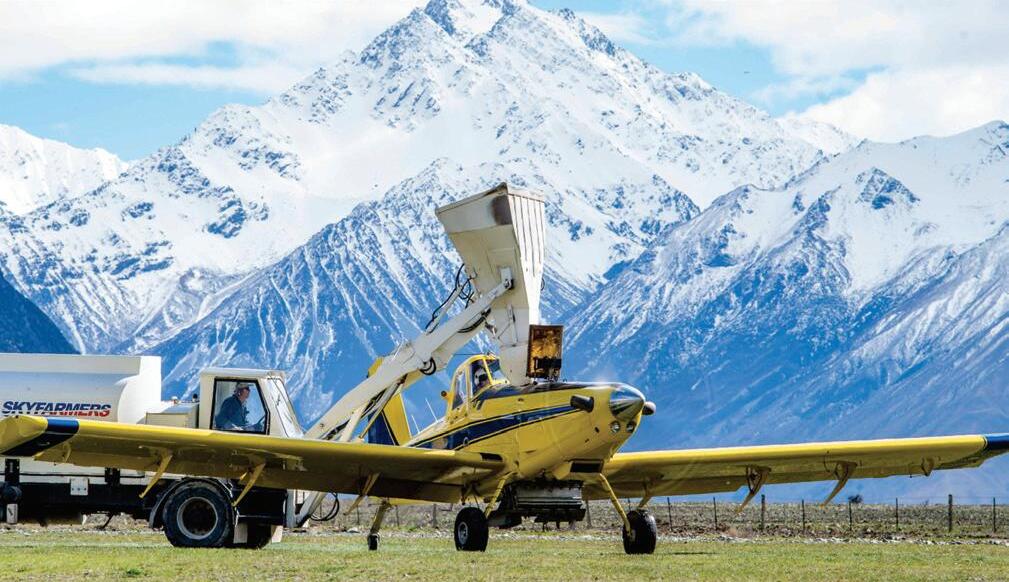

“We’re proud to offer customers another layer of precision ag solutions, and excited to partner with Yara NZ to bring the N Sensor to NZ,” says Paul Galletly, research and development manager for Drummond & Etheridge.
As part of a significant field trial, Yara NZ imported two reconditioned ALS-1 units from the UK and fitted them to tractors on Taggart Farms in North Canterbury and Adar Farming in South Canterbury. Both operators Roscoe Taggart and Andrew Darling were very satisfied with the amount of nitrogen saved, and resultant crops were more even and easier to harvest in a very trying season without compromising yields.
This is what Roscoe and Andrew had to say about using the ALS-1:
“The Yara ALS-1 N Sensor has been our best on-farm nutrient management tool to



date. It has proven to be a 100% return on investment in its first season, providing environmental and economic benefits while maintaining and potentially increasing productivity. “
“The Yara ALS-1 N sensor has fitted seamlessly into our arable operation, using it across all crop types, in real time and not waiting on satellite imagery which is often affected by cloud cover. We have significantly reduced our nitrogen spend and have more even crops with less lodging and easier harvest.”
The Yara N-Sensor ALS-2 offers farmers a solution to real-time variable rate nitrogen applications by adjusting rates according to crop growth whilst travelling across a field.

As a result, it delivers precise levels of nitrogen input according to the crop’s requirements, helping to both reduce environmental effects and maximisie potential profit.
A dedicated group of scientists at Yara’s R&D base at Hanninghof, Germany carry
out trial work annually to improve calibrations that exist currently and increase the range of options for use.


As such the N-Sensor truly is backed by science and results in improved gross margins and greater nitrogen efficiency.




The N-Sensor determines the nitrogen demand by measuring the crop’s light reflectance in real time. 20 images are captured every second with the system designed to operate at normal working speeds and all bout widths.
Most sensing technology applied to agriculture is based on the typical light reflectance curve for vegetation (NDVI). N-Sensor measures light reflectance at specific wavebands related to the crop’s chlorophyll content and biomass.
It calculates the actual N-uptake of the crop. Optimum application rates are derived from the N-uptake data and sent to the controller of the variable rate spreader or sprayer, which will adjust fertiliser rates accordingly. The whole process of deter-




mining the crop’s nitrogen requirement and application of the correct fertiliser rate happens instantaneously, with no time delay. This enables ‘real-time agronomy and application’ to be possible.
The single biggest benefit from using the N-Sensor is also the hardest to measure. However, Yara have conducted a large number of trials over the years looking at the yields of uniform compared to variably applied nitrogen in the UK and throughout Europe.
The average yield increase compared to uniform application was 3.2% with a maximum of 12% on some trials. Analysis has shown that where fields contain higher levels of variability due to changing soil types, manure application or topography, the benefit obtained from variable N application using the N Sensor was its greatest.
If you are wanting more information on N sensors and what they can do for you on your property visit www. dne.co.nz/yara, or phone Yara NZ on 06 877 6600.

Top Soils has over 25 years’ experience in the Kinsey-Albrecht system of soil fertility and has a proven record specialising in fertility programmes to make a real economical, sustainable difference to our farming clients. Based in Methven and Wanaka, and servicing the South Island, Top Soils offers a complete systems approach including consulting, comprehensive soil audits, analysing and providing balanced fertiliser mixes, liquid and solid products, ready for application on all farming types.
Our mission is to create healthy soils in a resilient, sustainable environment that will sequester carbon, produce nutritional food and profitable farmers.
CANTERBURY FARMING August 2023 15
James McCann 027 381 8856 james@topsoils.co.nz
Sally Sim sally@topsoils.co.nz
Don Hart 027 432 0187 don@topsoils.co.nz
With the price of nitrogen (urea) continuing to fluctuate, now is the time for farmers and contractors to look at what precision tools are in the market to help them make better decisions and use of the nitrogen they are applying to their crops.
Farmer confidence inches higher
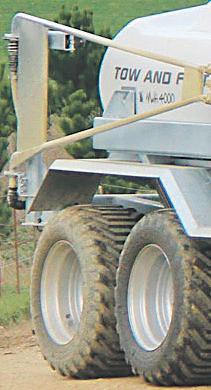

New Zealand rural sentiment has inched marginally higher, however it remains deep in negative territory overall due to a wide-ranging mix of farmer concerns.
 ] by Kent Caddick
] by Kent Caddick
That’s according to the latest Rabobank Rural Confidence survey undertaken in June. Conducted since 2003, the Rabobank Rural Confidence Survey is administered by independent research agency TNS, interviewing a panel of approximately 450 farmers each quarter.
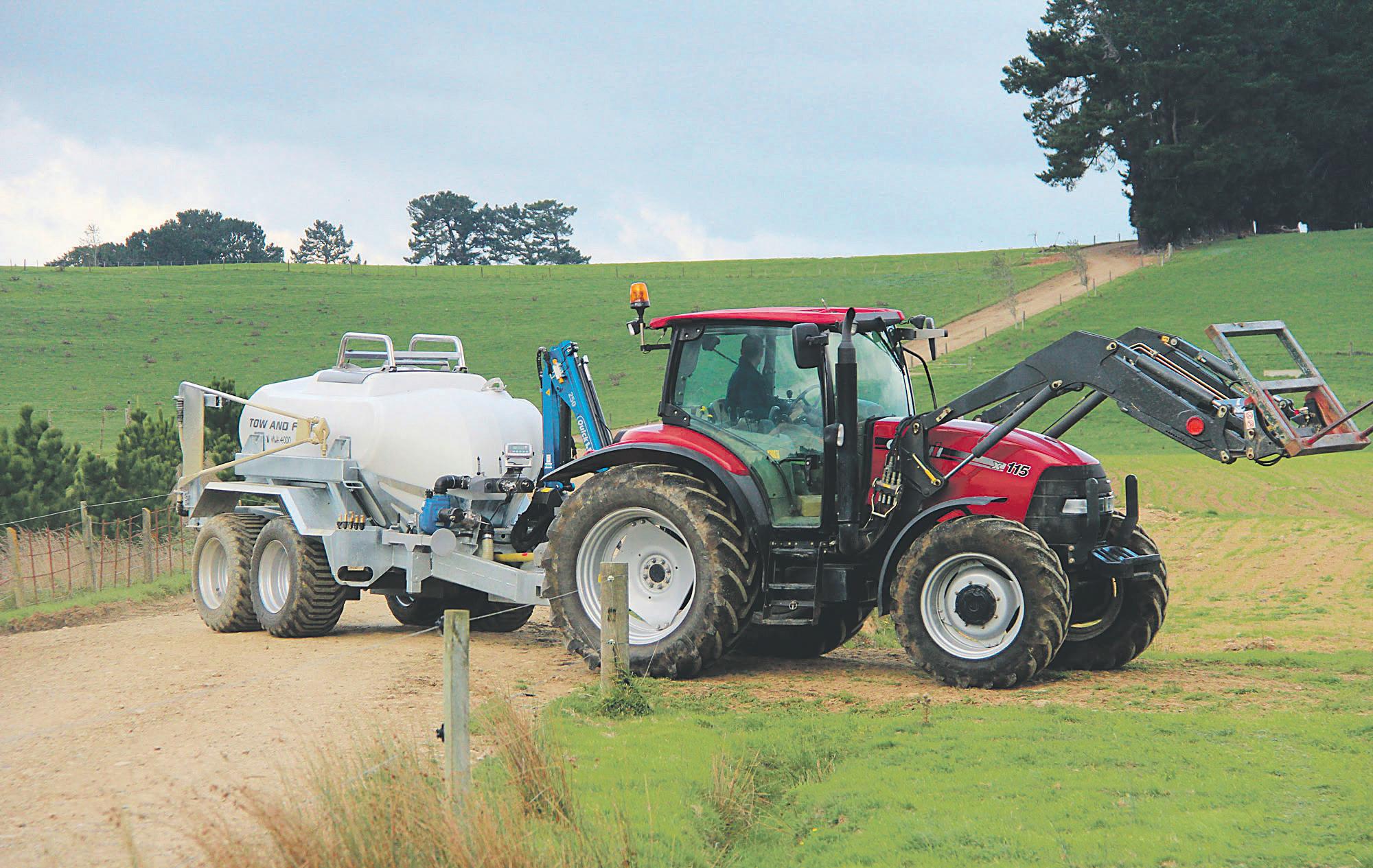
The latest survey found farmer confidence in the broader agricultural economy was up marginally on the previous quarter (March 2023), with the net confidence reading rising to -57%, from -58% previously.
Farmers were also more positive about the prospects for their own farm business performance, with the net confidence reading for this measure rising to -35%, from -45% previously.
Rabobank New Zealand CEO Todd Char-
teris said primary producers’ confidence in the broader agri economy, as well as their own farm business performance, had now risen for two consecutive quarters after both measures fell to historic lows in the final quarter of 2022.

“While it is pleasing to see confidence continuing to climb, albeit incrementally, it’s important to note that it’s coming from an extremely low base and that farmer sentiment across all key agricultural sectors remains incredibly fragile,” Charteris said.
He said farmers’ gloomy outlook for the year ahead was being driven by four key concerns.
“As with the last several quarters, the survey found the two most pressing issues were rising input costs and government policy.
“But we did see fewer farmers citing these factors as a concern than was the case in



March, with the percentage of farmers mentioning input costs as a reason for pessimism dropping to 57% (from 65% previously) and the percentage mentioning government policy falling to 40% (from 53%), the lowest reading we’ve seen for government policy as a source of concern since mid-2020.
“Easing farmer concern over input costs is likely to have been driven by the lower fertiliser prices that we’ve seen over recent months, while diminished concern over government policy may well be tied to some of the recent agri policy announcements made by the major political parties as they look to attract the rural vote in the lead up to October’s general election.”
While encouraging to see concern about these factors abating, Charteris said, reduced anxiety in these areas was being countered by rising apprehension about falling
commodity prices (cited as a concern by 36% of farmers from 30% previously) and rising interest rates (29% from 27%).
“Farmers’ investment intentions remain weak, but were slightly stronger than last quarter,” Charteris said.
“This was largely down to stronger investment intent from horticulturalists who recorded a positive net score on this reading for the first time since mid-last year.”

Results at a glance
• Farmer confidence in the broader agri economy has increased marginally, but remains deep in negative territory overall.
• For the two-thirds of farmers expecting agri industry conditions to worsen, the major concerns cited were rising input costs (53%, government policy (40%), falling commodity prices (36%) and rising interest rates (29%).
• Overseas markets (47%) and strong demand (28%) were the major sources of optimism for those farmers expecting agri economy conditions to improve.
• Farmers’ confidence in their own farm business performance rose from last quarter, largely off the back of improved sentiment among growers. Dairy farmers and sheep and beef farmers were also marginally more optimistic about the prospects for their own operations.
• Farmers’ self-assessment of their own farm business viability decreased, while investment intentions were slightly higher.
16 August 2023 CANTERBURY FARMING On-time, quality service – talk to us today. Ph 24hr 308 7772 162 Melcombe Street, Tinwald, Ashburton www.wilsonbulktransport.co.nz FERTILISER SPREADING / BULK, GENERAL & CONTAINER CARTAGE / GRAIN DRYING – STORAGE / STORAGE – WAREHOUSING
REDUCE YOUR ‘N’ BILL BY UP TO 40%! We are now offering application of your liquid fertiliser using our new Tow and Fert Multi 4000 unit. • Reduces the amount of fertiliser lost into the environment • Reduces the amount of fertiliser you require, saving you money • Large tank capacity makes light work of a large job. Golden Bay Dolomite NZ’s most loved magnesium. call 0800 436 566 or visit www.dolomite.co.nz
FARMERS
Leading the change to biological ag
New Zealand agriculture is experiencing significant change with heightened regulation across all operations.

Article supplied by ] Golden Bay Dolomite

The Albrecht soil approach, promoted by Golden Bay Dolomite (GBD), is a welcomed solution that makes a lot of sense. It is a way of farming that is productive and environmentally beneficial, meeting market and community expectations of the farming sector.
There is a greater demand for agriculture practices to minimise external inputs, reducing productive footprints and adverse environmental impacts, while at the same time being cost-effective.
As part of the Albrecht system, GBD provides a reliable source of both magnesium and calcium, two elements that are pivotal to soil health the world over.
International soil consultant Neal Kinsey has personally found over his 40-year career that the Albrecht soil fertility system works universally, across over 70 countries and numerous farming operations.
A key concept is that balancing the percentages of calcium and magnesium in your soil creates good soil structure due to the opposing effects of calcium (loosening) and magnesium (tightening) soil aggregates.
Benefits of good soil structure:


• Creates an environment for soil microbes to thrive
• Provides aeration while optimising water holding capacity, and
• Encourages deeper pasture root growth
To improve your farm health, step one is to apply GBD, supplying 39% magnesium carbonate (11% elemental) and 59% calcium carbonate (24% elemental). With its high magnesium content, it naturally improves New Zealand soils that are inherently deficient in magnesium.
The improvement in soil health, and associated benefits, flows through to improved plant and animal health. Albrecht consultants like Neal realise the value of GBD as a local source of Dolomite right here on our doorstep. In his opinion, there is no other Dolomitic limestones in the world that work as quickly or effectively as GBD in correcting soil magnesium levels.
The additional benefit of GBD is that it does not leach from soils and can be applied at any time. In preparation for spring, empower your plant chloroplasts with magnesium by getting your GBD soil program sorted with a soil consultation this winter.
A healthier way
All health starts in the soil
Golden Bay Dolomite is a premium calcium/magnesium carbonate source. Essential minerals for well-structured soils that support healthy pasture growth and animal production.
The benefits of good soil structure are three-fold for pasture farming systems:



• Providing aeration and preventing water logging or leaching




• Improving the capacity of soils to maintain and unlock key nutrients

• Creating an environment for soil microbes to thrive.
Good soil structure supports healthy nutrient-dense pasture growth minimising mineral deficiencies for both lactating animals and young stock. Set up your property this spring by working with a Golden Bay Dolomite representative.
We highly recommend discussing your soil tests with GBD to determine existing base saturation levels of magnesium and calcium and work out just what your soil needs.
As nutrient budget and farm environmental regulations impose restrictions under the regional authority and national planning frameworks for Canterbury, farmers can have peace of mind that GBD can provide
an option that:

• Minimises your environmental impact




• Provides an economical form of magnesium
• Comes from a reliable local source
• Improves your soil biology
Contact gBD today for a soil consultation on 03 525 9843 or sales@goldenbaydolomite.co.nz
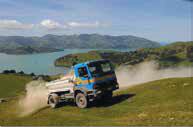
CANTERBURY FARMING August 2023 17
Book a free soil consultation today: 03 525 9843 | sales@goldenbaydolomite.co.nz www.goldenbaydolomite.co.nz
Soil base saturation levels Magnesium 10-12% Calcium 60-68% Perry Agricultural Laboratory (USA) ]
golden Bay Dolomite provides a reliable source of both magnesium and calcium, two elements that are pivotal to soil health.
Single


















































McIntosh gear is New Zealand made specifically for our tough conditions and operators. Heavy duty components make sure that their gear lasts longer and performs better. They have now teamed together with Power farming Canterbury to offer local farmers not only the best gear available but also the best service available. If you are looking for excellent quality and great support give us a call to see how McIntosh can make your life easier.
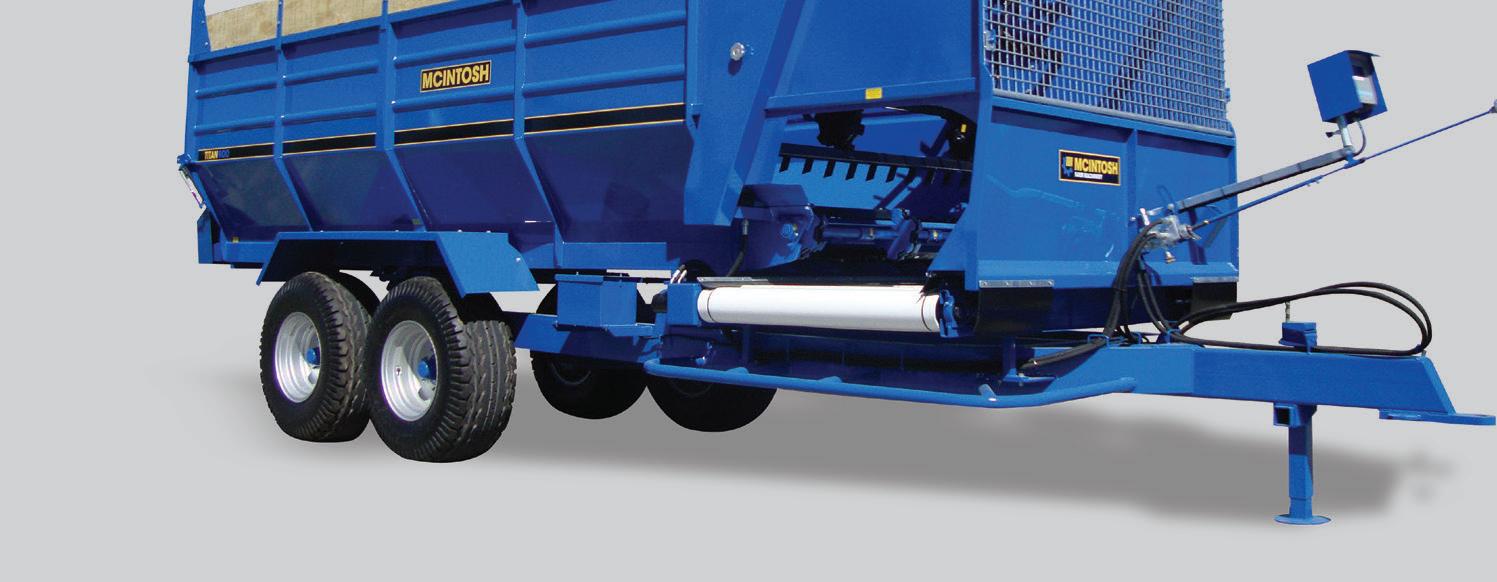
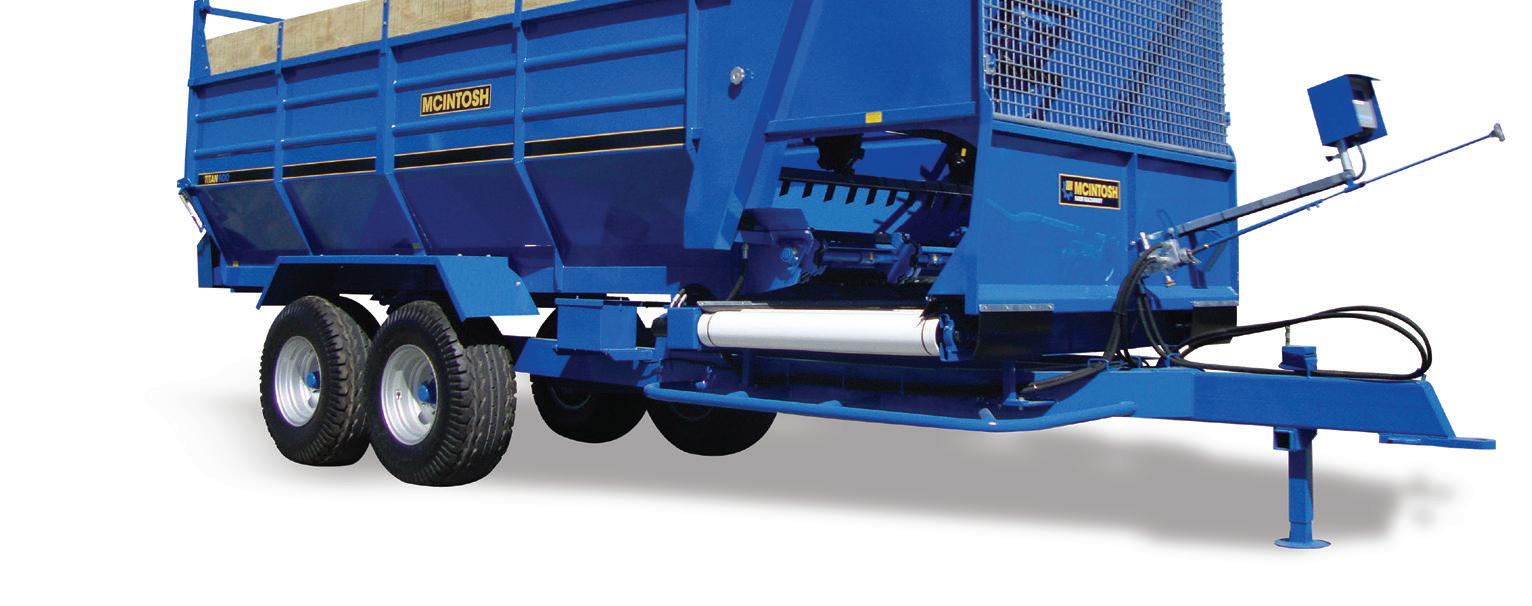
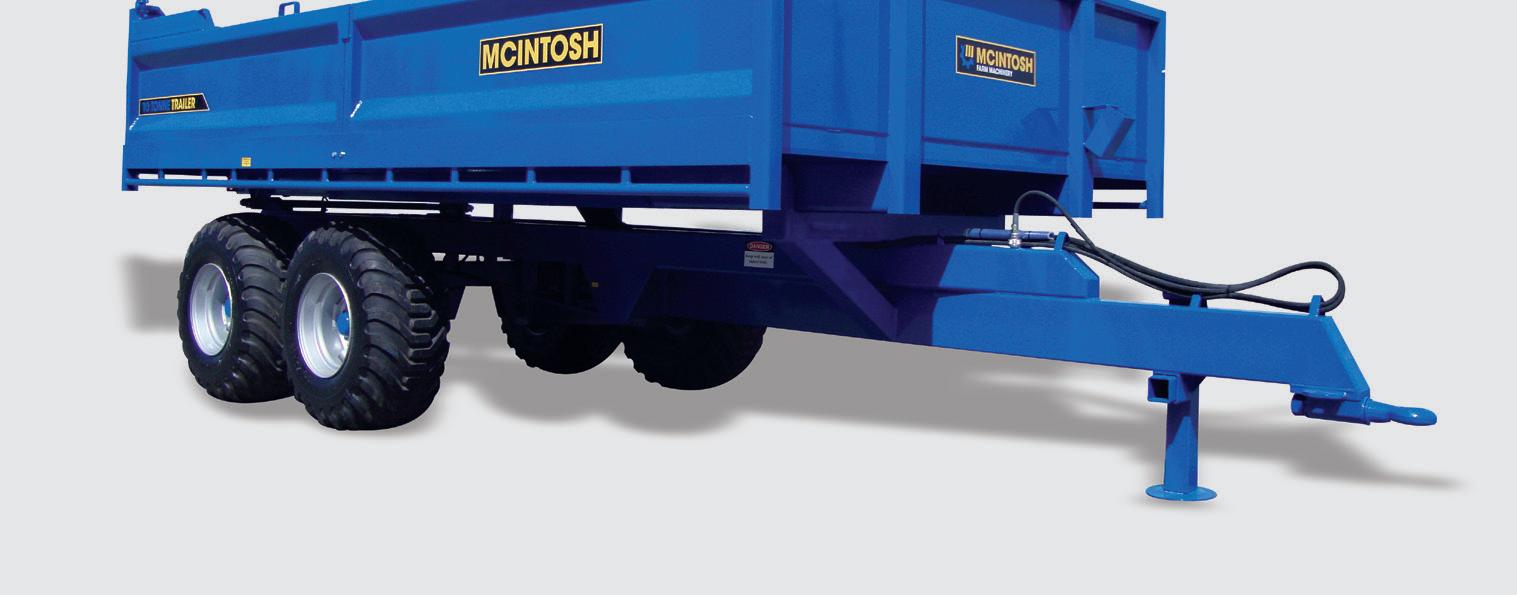

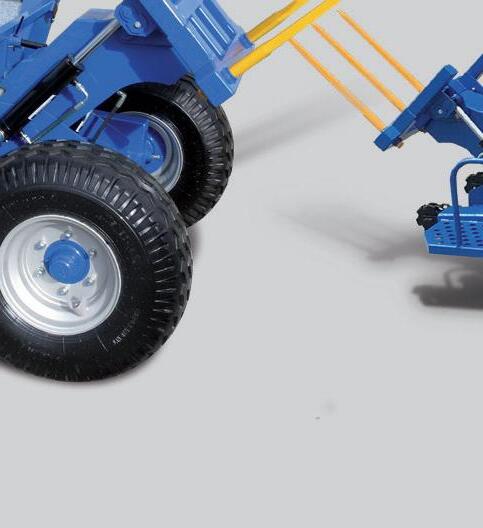

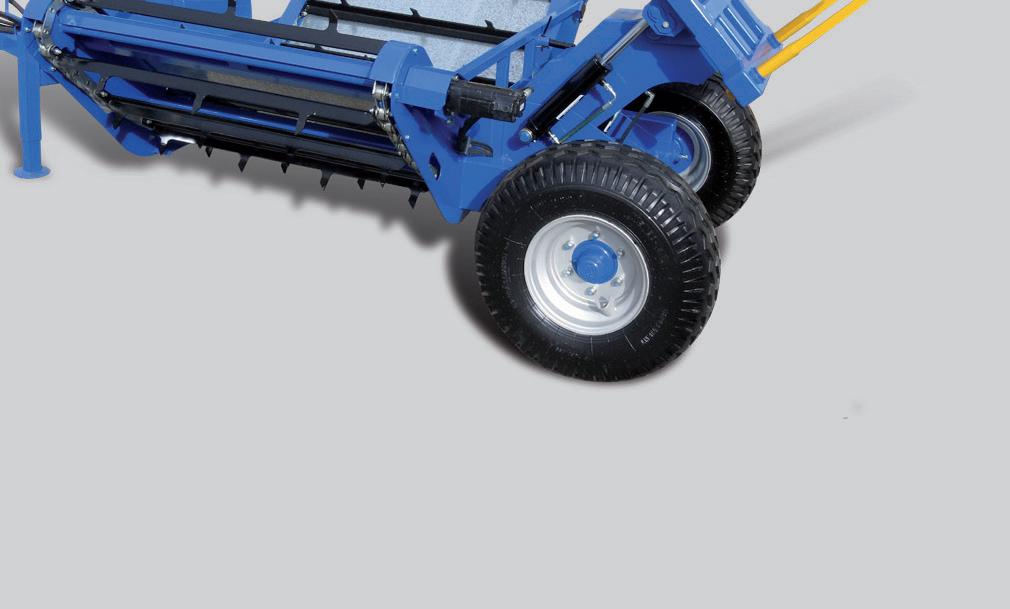


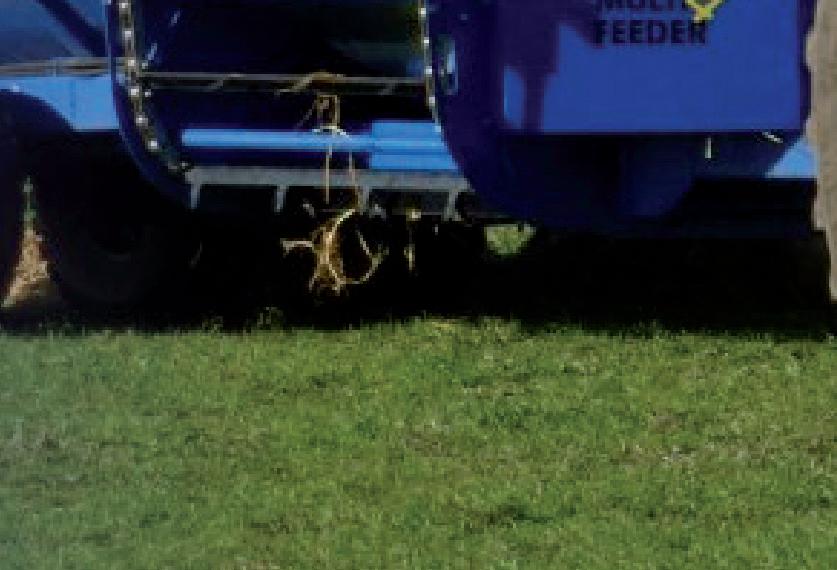
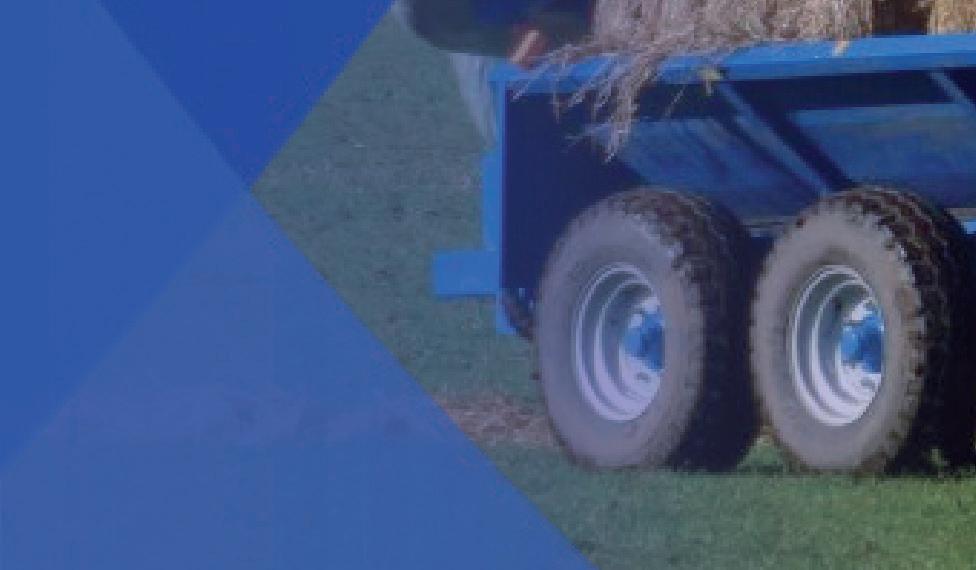
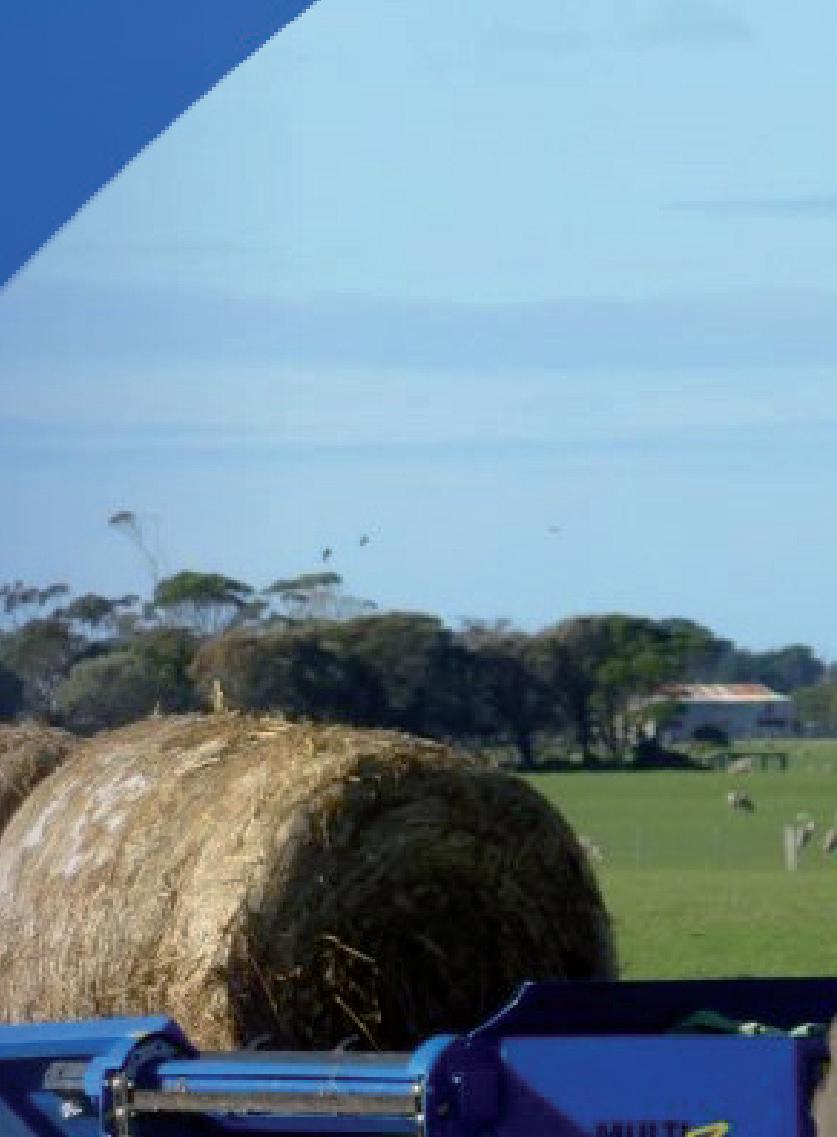
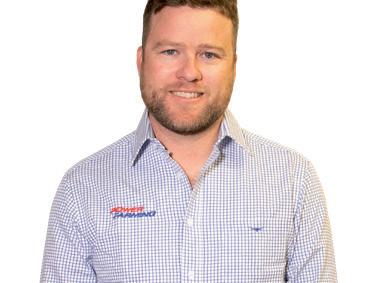
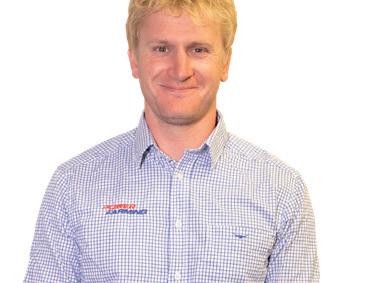
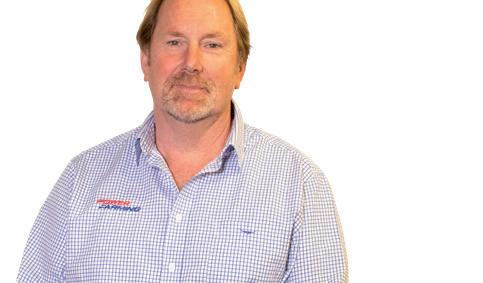
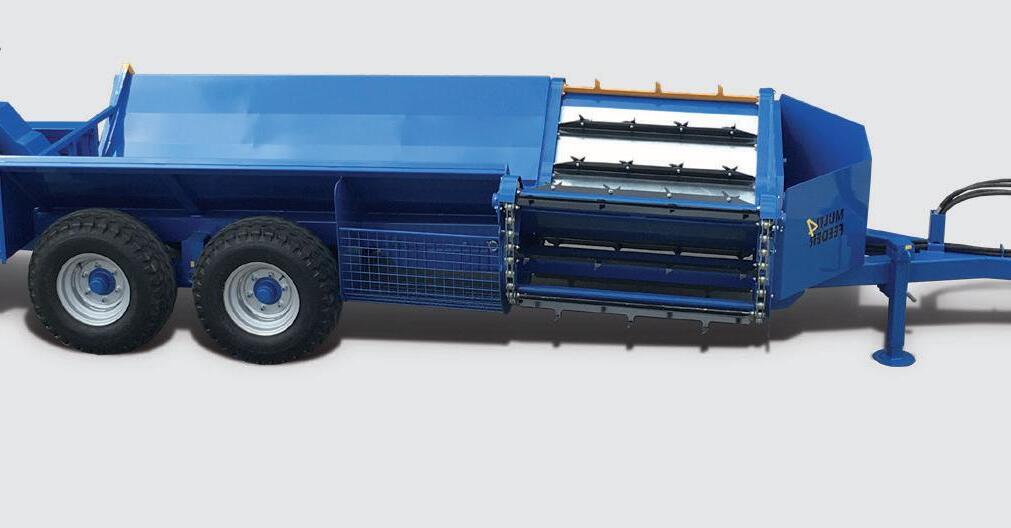
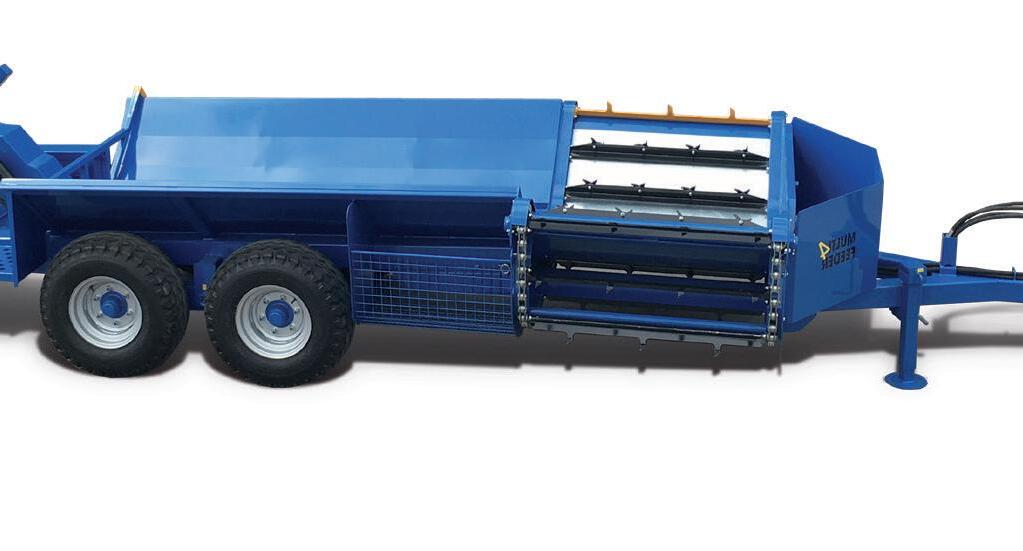
18 August 2023 CANTERBURY FARMING Jimmy Leigh Sales 027 405 6941 Geoff McCabe Dealer Principal 021 220 9544 Power Farming Canterbury | 1 George Holmes Rd, Rolleston Terms, conditions and lending criteria apply, 0% Finance 1/3 deposit or trade, 1/3 in six months and 1/3 in twelve months. Offer ends June 30th. Joel Parris Sales 027 435 0884
Canterbury
McIntosh chooses new partner in
Bale Feeder Heavy duty 1 ¼” drive motors for long life 8 tooth drive sprockets and 3” 12,000lb roller chain to last longer Larger deep and wide cradle for better bale retainment Optional square bale kit and trough extensions available Multi Bale Feeder • Choose from either 4 or 5 bale feeders • Same heavy duty components as the two units above • Feed out either side from the wide cradle Proven long lasting design Kiwi built trailers from 4.5 ton to 20t Larger tyres for better floatation 5mm corten or 40mm Plenty of options available to increase uses Sizes from 7.8cbm to 27.2cbm Choose from heavy duty Multicrop or extra heavy duty Titan models Up to 13mm floor and elevator chains with larger sprockets All designed with years of experience to trouble free operation and minimal maintenance
Bale Feeder Same heavy duty components as single bale feeder Wide 2300mm cradle to get feed away from the tyres Weighs an impressive 1100kg to last longer Square bale options available • timber decks, stronger decks to last longer 0% INTEREST * 1/3RD IN 6 MONTHS 1/3RD DEPOSIT NOW 1/3RD IN 12 MONTHS Take advantage of our McIntosh finance deal today!
Double
Cantabrian recognised for innovation
Culverden’s Shane Glassey of Glassey Spreading has taken out the Keith Andrews Innovation Award at the recent 2023 Groundspread NZ annual conference.

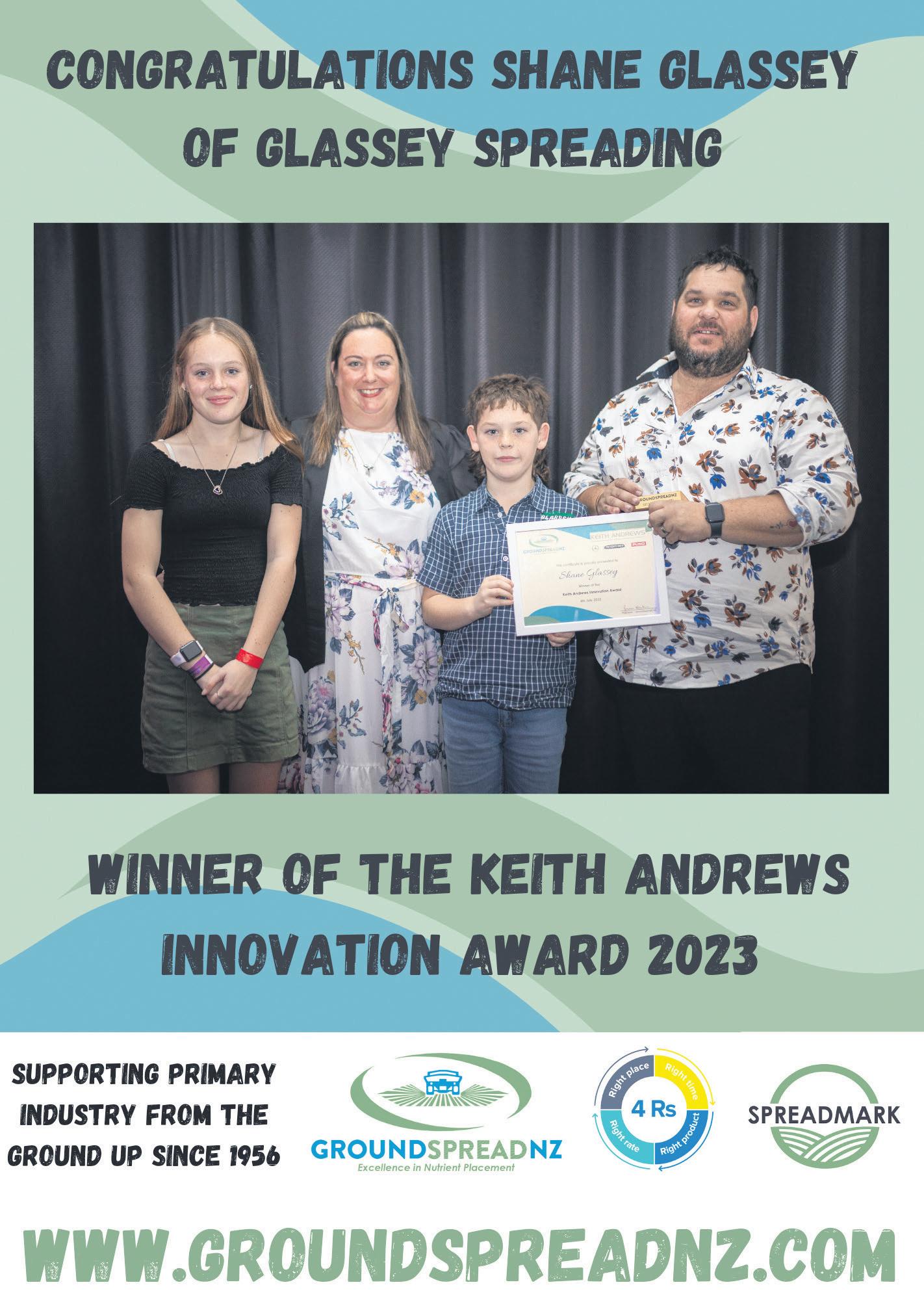
Supplied by Groundspread NZ

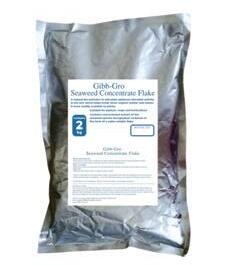




Shane is an easy-go-lucky guy to be around, yet he is extremely determined and adaptable, and these are real strengths of his. Shane is passionate about the benefits of fine particle application and shows a real determination to prove this.
There are very few Fine Particle Applicator (FPA) trucks in his Canterbury region so Shane has had to take on a huge amount of R&D off his own back to bring his truck up to a Spreadmark standard, and he is always happy to share the knowledge he gains in this process.
He is ahead of his game in all aspects and he leads by example and is always willing to work and help others too. He is VP of our branch and is a very selfless person who shares ideas and always encourages other people.
Shane is positive, adaptable and approachable. He runs a small but mighty business and is really leading the charge in the FPA arena. His efforts encourage others to do more, be better, no excuses.
Shane aspires to secure Spreadmark certification in his FPA truck, to grow his business, and use the R&D he is currently working on to elevate that sector of the industry and commercialise his product once he is happy with it.
He continues to invest heavily in innovation because he wholeheartedly believes in
the products he is spreading and the gear he is using. He could be flying under the radar and operate as is, but he is constantly pushing the industry forward with his R&D.
In the current Spreadmark COP, FPA is not included. This is largely due to the lack of a sufficient testing system for that type of application.







Most other FPA operators have shied away from joining Groundspread NZ because of this. However, Shane is so passionate about the scheme and FPA that he is constantly working on a testing system so that FPA can
Top job: shane glassey of glassey spreading based in Culverden receives the Keith Andrews Innovation Award from Keith Andrews sales manager Damien O’Hara.
be included in the Spreadmark scheme.
He has worked with national testers to adapt the system in many different ways to ensure testing to a high standard is possi-
ble. FPA inclusion in Spreadmark is now imminent largely due to Shane’s efforts and determination.



This has a huge impact on the industry as there are currently many unregulated FPA operators in NZ making claims they cannot prove, soon they will be able to join the Spreadmark scheme which is of huge benefit to growers and farmers in New Zealand.

Shane encountered several issues with his truck in this process that engineers were not able to solve.

Subsequently, Shane (as a small twotruck business) has now employed his own R&D specialist, as well as buying the patent for his trucks crushing system so that he can adapt and modify the system and bring his ideas to life and ensure a final spread job that he is finally happy with.
This has been a huge process and Shane is constantly striving for excellence in this relatively new application method.
His dedication is admirable and will benefit many.

CANTERBURY FARMING August 2023 19 ]


















20 August 2023 CANTERBURY FARMING The planet’s favourite slug bait Ironmax Pro®: Powerful. But gentle on the earth. Ironmax Pro is next gen science that’s building on the toughness of Metarex® Inov. And it’s a great fit for all farming and growing practices – conventional, sustainable, regenerative, and organic. Talk to your local merchant to find out more. Registered pursuant to the ACVM Act 1997, No. P009801 See www.foodsafety.govt.nz for registration conditions. Approved pursuant to the HSNO Act 1996, Approval Code HSR000143 See www.epa.govt.nz for approval controls. Ironmax Pro Snail and Slug Bait and Metarex Inov Snail and Slug bait are registered trademarks of De Sangosse SAS. UPL-LTD.COM
Beating slugs with something old and something new
Sometimes, the old ways are the best and Mike Goodwin, Central South Island Regional Manager UPL NZ Ltd, says that’s particularly true when it comes to monitoring slug populations.

]Advertorial supplied by UPL NZ “Slugs’ mottled colour enables them to blend in with the soil. We’d recommend putting down a slug mat or a damp hessian sack. Leave it there overnight and check it the next morning. Even one slug could mean you’ve got a problem,” Goodwin says.
That’s where, he says, new science kicks in.
Ironmax Pro molluscicide, with BioGro NZ organic certification, is highly efficacious slug solution which is gentler on the planet, people, and non-target animal species.
Manufactured by French company DeSangosse, the global leader in molluscicide technology, Ironmax Pro is as effective as sister product, and industry leader, Metarex® Inov, with the added value of green credentials.
“People are looking for products that are safer for the environment, and more pleasant to work with, without compromising efficacy.”


Gerard McCarthy, Technical Field Representative at PPG Wrightson, also recommends monitoring slugs. And he’s seen the benefits of Ironmax Pro first hand.
Last season, he says, 45 hectares of high value SovGold Ultrastrike treated kale seedlings in Central Otago were under attack by slugs. With average potential yields of around 10-14 t DM/ha, and suitable for


cattle or sheep grazing, it was a crop the farmer was keen to protect.

Gerard had the solution. Ironmax Pro was spread by helicopter at 6 kg/ha.
He says it did an extremely good job and supported the crop getting established. “The client rang me three days later. They saw an almost instant result.”
Ironmax Pro’s breakthrough Colzactive® technology gives it exceptional palatability. Colzactive is made up of specially selected oil seed rape extracts. Mike says the De Sangosse R&D team evaluated 20 different plant species and identified 50 potential molecules for their attractiveness to slugs.
“They ultimately selected down to just two molecules. These are the basis of the technology, which enhances the Ironmax Pro bait taste and the speed at which the baits work compared to others.”
Ironmax Pro pellets are manufactured with the finest durum wheat, which ensures slugs ingest sufficient quantities of the active substance to cause death.
Ironmax Pro contains the optimized active ingredient 24.2 g/kg ferric phosphate anhydrous, referred to as IPMax. Iron (ferric) phosphate is a natural component of soil. In Ironmax Pro, it works as a stomach poison on slugs and is fatal once ingested. Feeding stops almost immediately.
Manufactured using a unique wet pro-
Hybrid Pole Sheds!



cess Ironmax Pro is also rain fast.


Ironmax Pro is IPM friendly and, Mike says, is safer around stock, companion animals, and farm dogs.

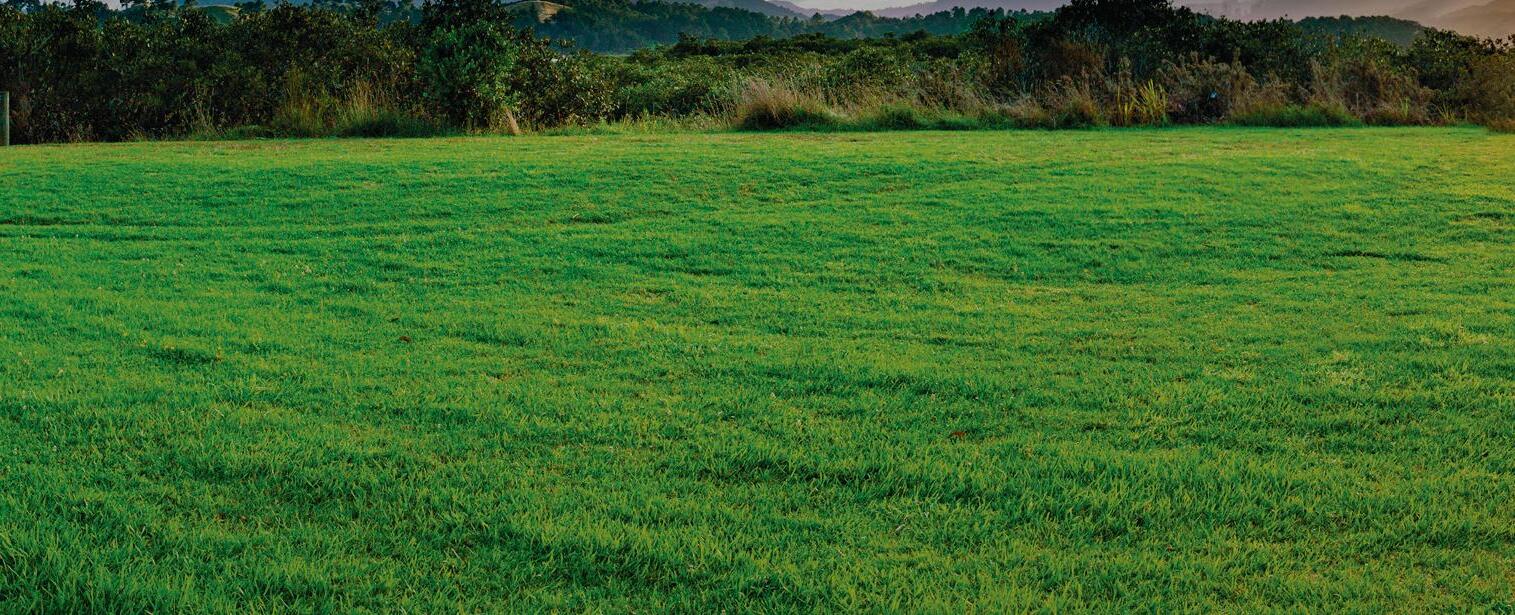
Ironmax Pro has a recommended application rate range of 5 to 7 kg/ha. With 60,000 baits per kilogram, it has excel-
lent ballistic properties. The uniform pellet size and innovative Ironmax Pro manufacturing process means bait can be spread at widths of up to 24 m.
And, for those who don’t have old sacks – some good news. Ask your local merchant for an Ironmax Pro hessian sack.

CANTERBURY FARMING August 2023 21
Hybrid sheds mix timber and steel components. 9.0 wide bays no problems! Clear span no issues! Selw yn 15 Station Street, Leeston 7632 Phone: 03 324 3385 Email:info@buildlinkselwyn.co.nz 133A King Street, Kensington 7910 Phone: 03 688 4944 Selw yn Timaru Email:timaru@buildlink.co.nz www.buildlinkselwyn.co.nz www.buildlinktimaru.co.nz
Pole Sheds &
PGG Wrightson technical field representative
Gerard McCarthy inspects the kale crop treated with Ironmax Pro last season.
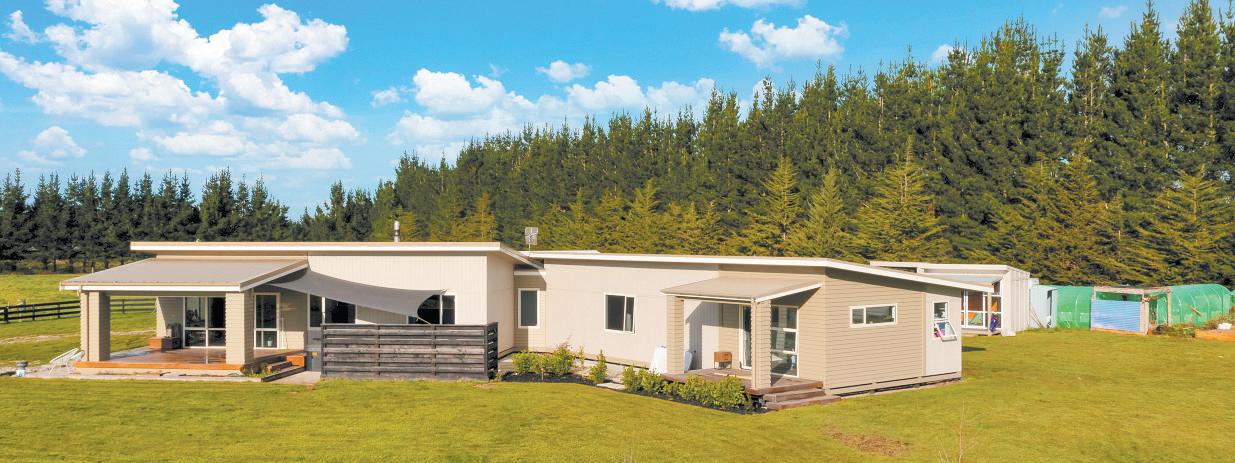















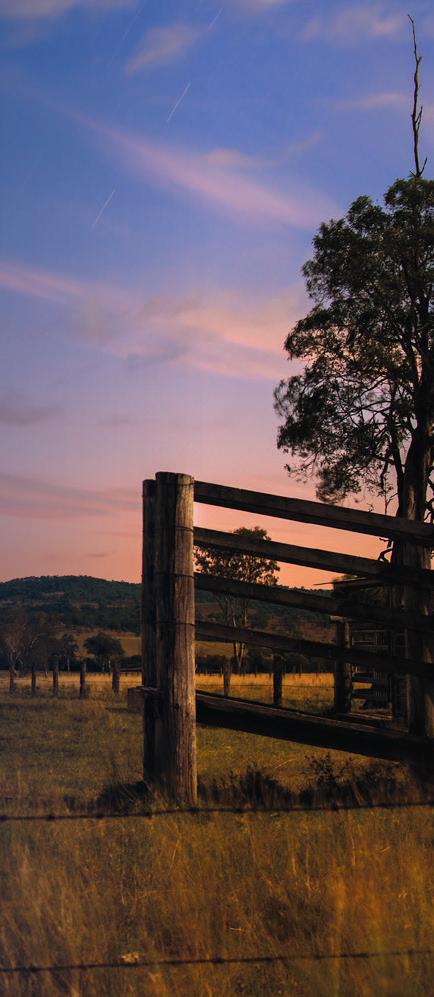




22 August 2023 CANTERBURY FARMING Four Seasons Realty Four Seasons Realty Your home for local property Four Seasons Realty 2017 Ltd Licensed Agent REAA 2008 0800 789 1011 fourseasons@harcourts.co.nz CHECK OUT ALL OUR AVAILBLE PROPERTIES harcourts.co.nz WE SELL RURAL & LIFESTYLE RURAL LIFESTYLE HARCOURTS No. FRANCHISE CANTERBURY 2017 - 2023
Four Seasons Realty Four Seasons Realty




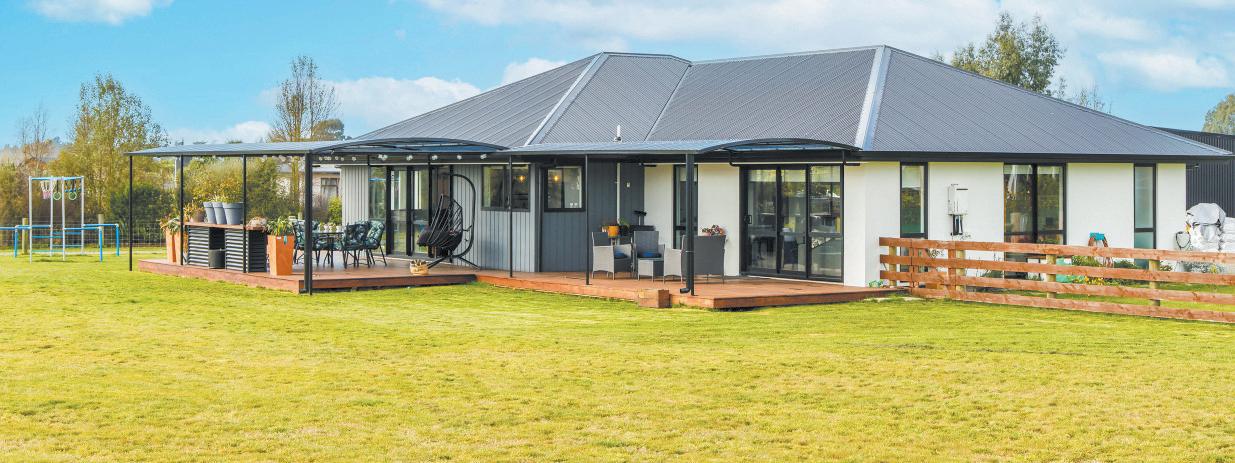

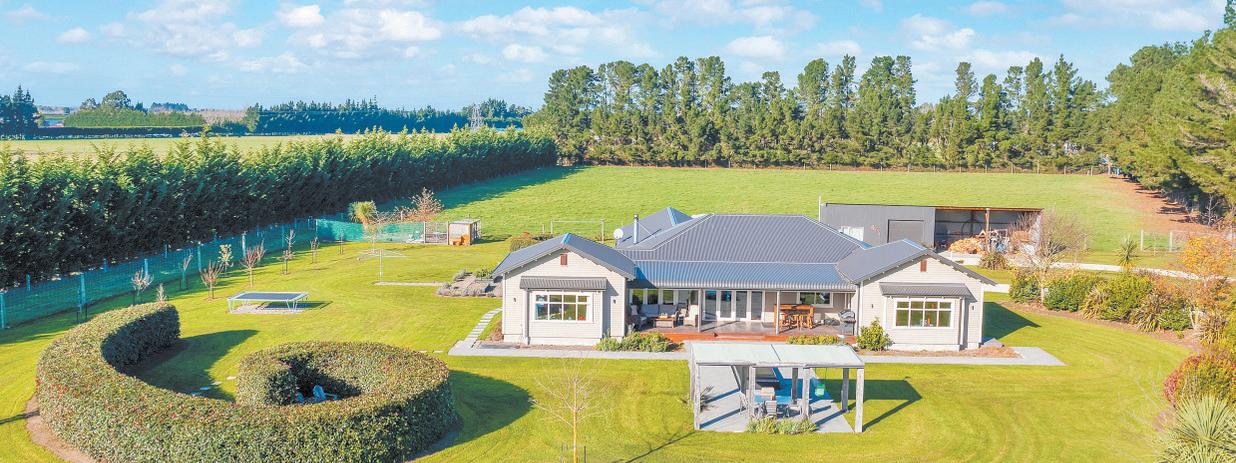



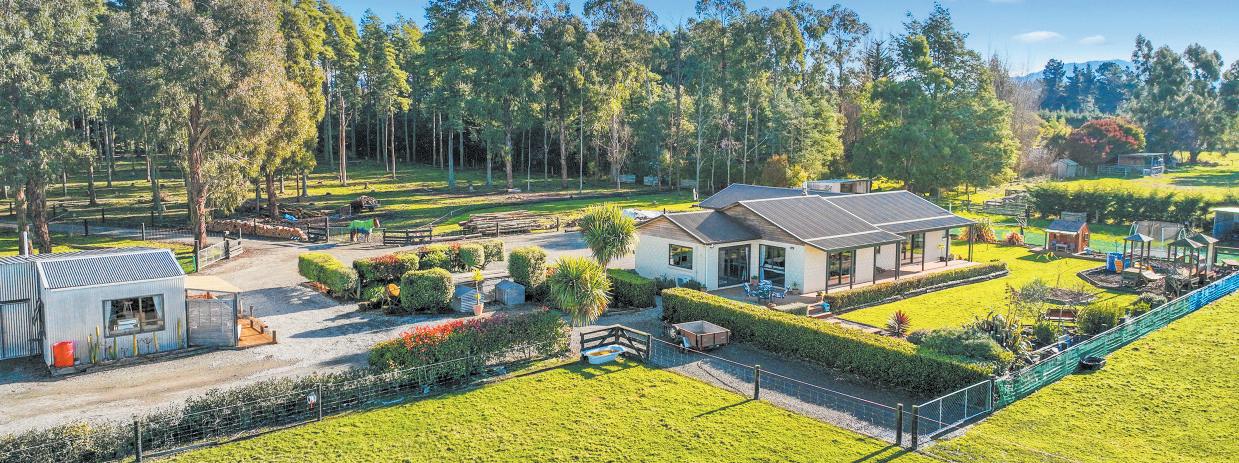






CANTERBURY FARMING August 2023 23
Locals to have a say on farm to forest conversions
The Government is to tighten up rules on farm-to-forestry conversions by giving communities
] by Kent Caddick
The changes follow extensive public consultation on the national direction for plantation and exotic carbon afforestation last year.
Forestry Minister Peeni Henare said the changes were about getting the right tree in the right place, by seeing fewer pine forests planted on farmland and more on less productive land.

“We are empowering local councils to decide which land can be used for plantation and carbon forests through the resource consent process,” Henare said.

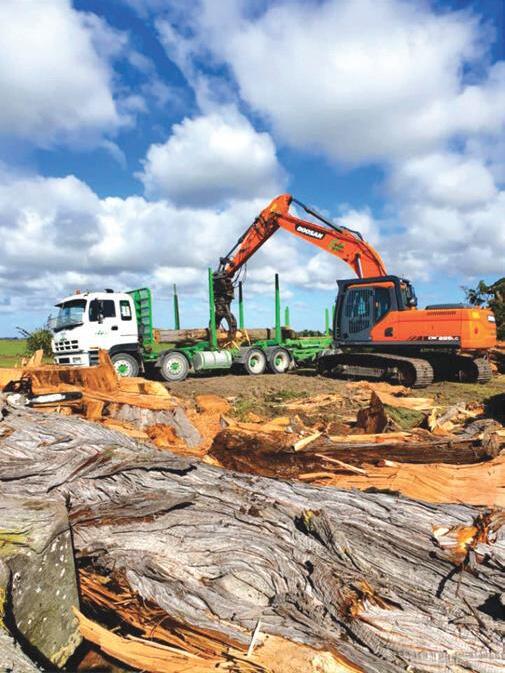
“This gets the balance right by giving communities a voice, while not restricting the purchasing of land or ability for farmers to choose to sell their farms to whomever they want.
“Amendments to the National Environmental Standards for Plantation Forestry will see the environmental effects of permanent pine forests being managed the same way as plantation forests.
“This means many standards such as ensuring firebreaks, rules planting next to rivers, lakes and wetlands will now be required for any new forestry conversions.”
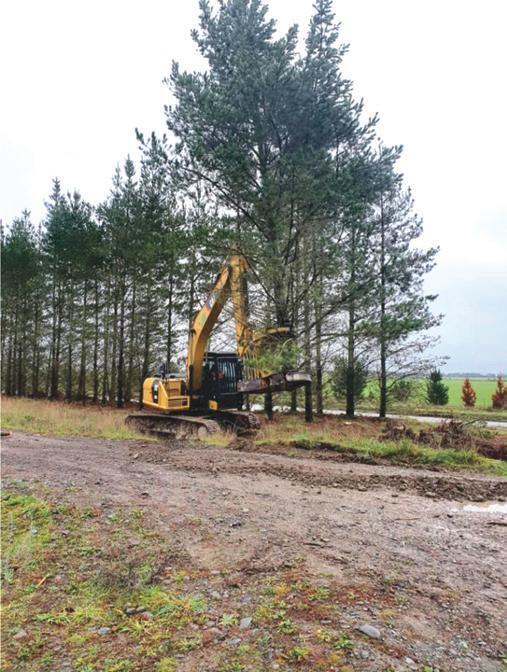
Henare said the forestry sector is important to local economies, contributing over $6.5 billion annually and providing over 35,000 jobs. It’s also important for the environment and meeting our emissions budgets and targets.
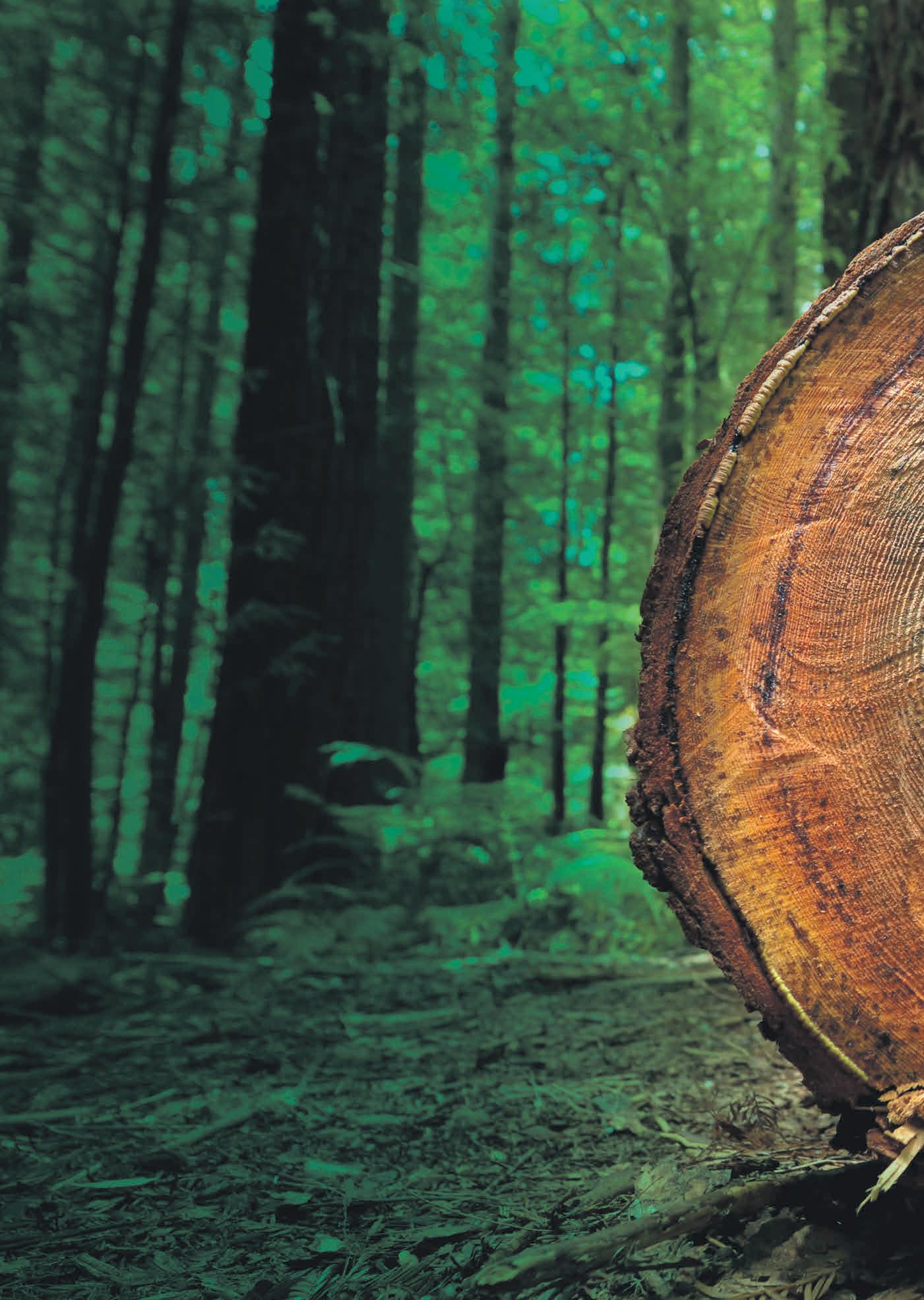
“Afforestation provides sequestration to offset gross emissions, bioenergy to support a low carbon transition and substitution for higher carbon materials.

“However, large-scale change in land use for exotic carbon forestry, if left unchecked and without any management oversight or requirements, has the potential for unintended impacts on the environment, rural communities, and regional economies.

“The devastation that unfolded in Te Tairawhiti during Cyclone Gabrielle was a stark reminder what can happen if we get land-use settings wrong. Today’s changes help us towards addressing the findings and recommendations in the recent Ministerial In-
greater control over the planting of forests.



Amended: Changes to the rules on farm-to-forestry conversions will give local councils the power to decide which land can be used for plantation and carbon forests through the resource consent process which could see fewer pine forests planted on farmland and more on less productive land.
quiry into Land Use.
“For example, the proposal to enable councils to have more stringent rules for afforestation will clarify their ability to make plans and rules to control the extent and location of plantation and exotic continuouscover forestry within their communities.”
He said the Government is also progressing further work to redesign the permanent forest category with a goal of enabling a successful transition from exotic species to indigenous forests.
24 August 2023 CANTERBURY FARMING FORESTRY & LOGGING Forest Management LTD With 25 years experience in the industry, the Forest Management Team offer services in: • Woodlot and shelterbelt harvesting • Timber sales to domestic and export markets • Forest establishment of harvested and greenfield sites • Forest valuation • Emission Trading Scheme advice and management • Trainer/Assessor in NZQA forestry related units Our highly experienced teams aim to ensure value optimisation in all aspects of forest management. To find out more call us on 03 343 4101 or visit www.forestmanagement.co.nz
‘today’s changes help us towards addressing the findings and recommendations in the recent Ministerial Inquiry into Land use.
Peeni Henare Forestry Minister
Some positive signs out of China
I have been marketing trees and logs for famers and forest growers since November 1989 and for the last 18 years of that I have been marketing logs directly to China through both New Zealand and China based agents.
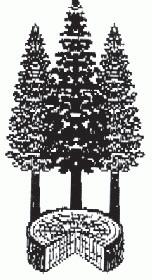


] with Allan Laurie MNZIF ] Laurie Forestry Ltd


Compared to the last 34 years, May, June and July 2023 are standout months by a significant margin in terms of the net negative impacts across the NZ Forest Industry from an export market price crash.


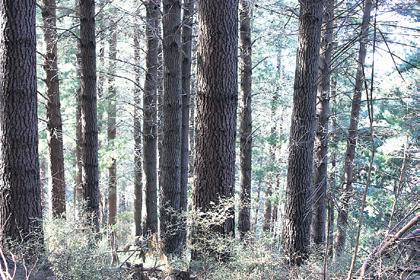
It has been a salutary tale of many of our great people having to take a forced holiday and it is even sadder if not catastrophic, the reports of those walking away, likely never to return.
Whilst some of the reasons for the current situation might lay firmly at the feet of a few, there is no question the perfect storm that we have encountered could not have been countered by a few mere mortals. Indeed, divine intervention may not even have helped.

August looks like it might have some better numbers attached with swing indicators suggesting we are through the bottom of what has been three months of low prices.
It is very heartening to see a drive to get industry leaders in to meetings to at least start the process of trying to build a better future. Perhaps it took a crisis to get us to that point so ultimately some good may yet come from all of this.
For change to how we (NZ Forestry Inc) collectively conduct ourselves, in what might loosely be termed a marketing strategy, is certainly needed of we want to achieve consistently good stable returns





for our wood fibre in the future.

Some of the swing upward signals we are seeing in China as at mid-July, include improving demand and domestic pricing in some regions. Daily sale sales are running at 66,000 cubic metres, a good improvement since May. Some commentary is suggesting off port sales increases are a function of sawmill owners buying in stock ahead of price increases. Time will tell.
In the first two weeks of July, the softwood log inventory, mostly Radiata pine from NZ, reduced by 150,000 cubic metres, confirming the delivery rate in to China had slowed. China traders can now see daily deliveries to NZ ports slowing dramatically, in fact many are close to a standstill. This is adding significantly to the positivity starting to pervade the market generally.

As we might have expected, Shipping companies have already started to un-sharpen their pencils saying they want a slice of the general improvement cake. But this is on the back of basically zero demand. For the moment, daily hire rates for Log vessels continue to ease as the Handy class segment internationally remains well over supplied.


In terms of our near future, the market speak is for CFR settlements in a US$105110 per JAS cubic metres range with the top end of that looking more and more likely. If shipping costs remain subdued, the US$5-7/m3 upward tick should then get us back in to some reasonable wharf gate
New Zealand numbers in August.
Our domestic sawmills are also not swamped with domestic orders at present and their export sales are certainly not happy hunting grounds. Two large NZ sawmills have 250,000+ cubic metres of framing lumber stock with nowhere to go at present. This then likely means the national total will be well over 400,000 cubic metres. As so it is for those back in 2022 who believed we needed more domestic sawmills the answer is very clear... yeah, right!
I could not be more critical of the ineptitude of the ETS policy makers over the last few weeks. The Government has ignored the multi-million dollar Climate Change Commission report on the 2030 get out of jail close to free card options whilst also talking less reliance on offsets (carbon sequestration) and more reliance on gross emissions reductions, without a plan.
This has singularly wrecked the confidence


of the market. Carbon prices have plummeted and our chances of some cheap alternatives to the $18 billion, and growing, problem we have in 2030 just became very murky.

Do not let this beat you people, there is a carbon future and solutions are just around the corner, hang in there.
As always, please remember the thoroughly important message, “it remains, as always, fundamentally important, the only way forward for climate, country and the planet, is to get out there and plant more trees”.
CANTERBURY FARMING August 2023 25 FORESTRY & LOGGING Office: Phone 03 359 5000 Email: admin@laurieforestry.co.nz Unit 3 337 Harewood Road Bishopdale Christchurch 22 Shearman Street Waimate Phone 03 689 8333 • Cell: 027 432 1420 See our website for information including Market Reports and Log Price Tables www.laurieforestry.co.nz FORESTRY SERVICES - CONSULTING
MANAGEMENT
Specialists in: •Woodlot and Forest harvest - at any scale •Direct log sales in both domestic and export segments •Top quality H&S systems and management •Forest right or cutting right purchases •Planting and silviculture management •Top advice, top people, top service Laurie Forestry Ltd
&
&
THE PEOPLE AND THEIR TREES COMPANY www.laurieforestry.co.nz
-
- MARKETING
Harvesting
Marketing, Consultants
Managers
‘
For those who believed we needed more domestic sawmills... yeah, right!
Maize harvest affected by weather events
The latest AIMI Maize Report which reflects a survey of maize growers in New Zealand undertaken in June shows most of country experienced a very wet growing season.
Above average rainfall and a tropical cyclone caused flooding and wind damage in the North Island, with some crops completely destroyed.
The average yield of maize grain for the 2023 NZ harvest, at 9.7 t/ha (including estimates for the crops yet to be harvested), was down on last season (at 11.5 t/ha).
The average yield of maize silage (19.0 t dry matter (DM)/ha) for the 2023 NZ harvest was also down on last season (at 20.9 t DM/ ha). These are averages across New Zealand and there will be differences across regions, especially in cyclone effected areas.
The New Zealand maize grain harvest was 63% complete as at June 1, which was less than normal (ten-year average was 79% complete),and some of the unharvested area may not be harvestable due to continued wet
Palmer
Agri Parts Direct Ltd

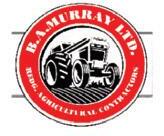



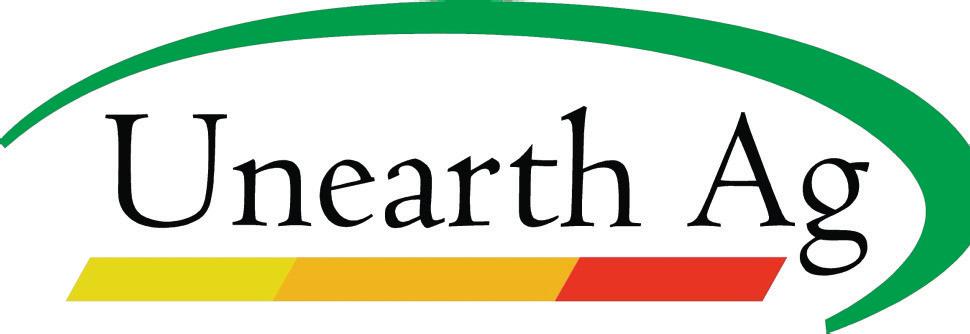
Kverneland • Overum • Kuhn Lemken• Dowdeswell•Vogel & Noot•Gregoire Besson• Clough • Duncan •Terradisc • Maxitill •Yeoman•Vibroflex •Connershea•Goliath• IHC•
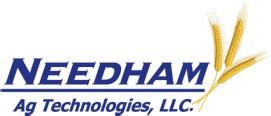
Sunflower•Topdown •Salford• Kongskilde•Napier •Vaderstad
Article supplied by AIMIweather, which means NZ tonnages could be over-estimates.
The estimated total tonnage of 164,400 tonnes (including unharvested grain) was down on last season’s harvest tonnage (down 13%), as a result of a reduced yield (down 16%) from an increased harvest area (up 4%).
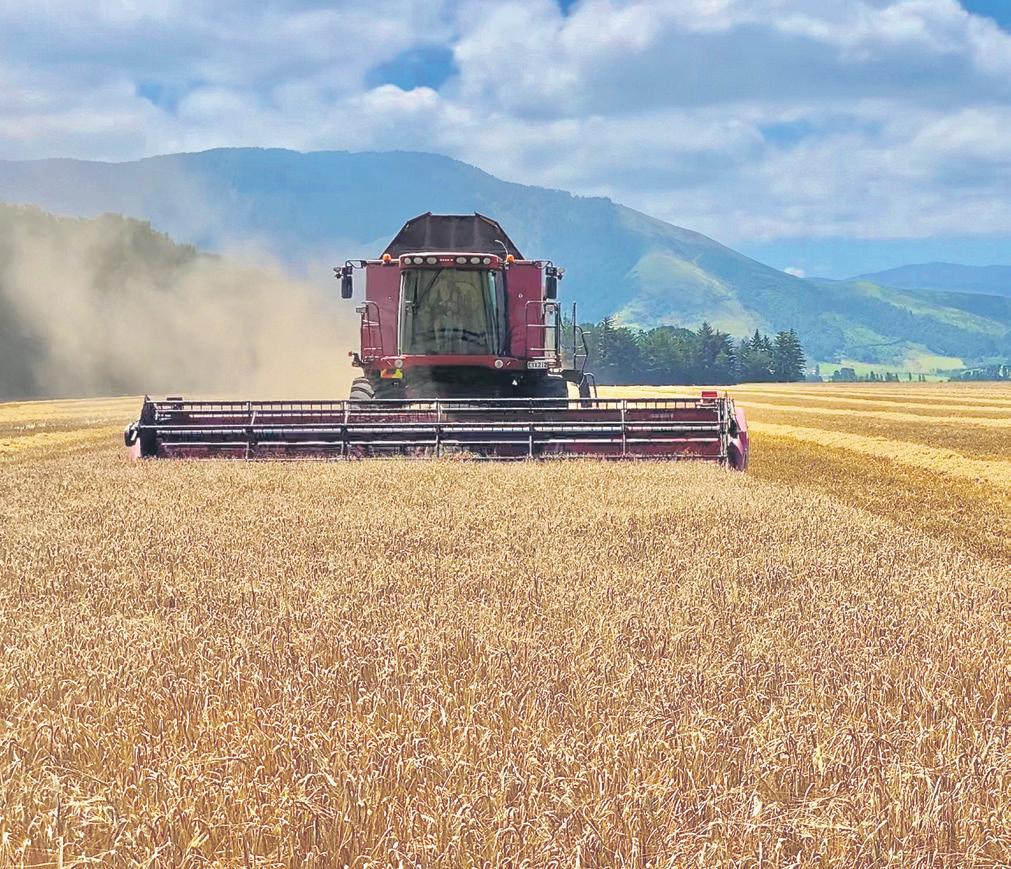
Most (89.8%) of the total crop had been sold, leaving 16,700 tonnes unsold, though most of the unsold tonnage was unharvested as at June 1. This compared to 5,600 tonnes unsold at the same time last year, and higher unsold tonnages at the same time in five of the eight previous years.
The quantity of maize grain held by merchants was not determined in the survey). Spring 2023 sowing intentions were estimated to be12% lower than last season. The New Zealand maize silage harvest was 99.7%
0800472
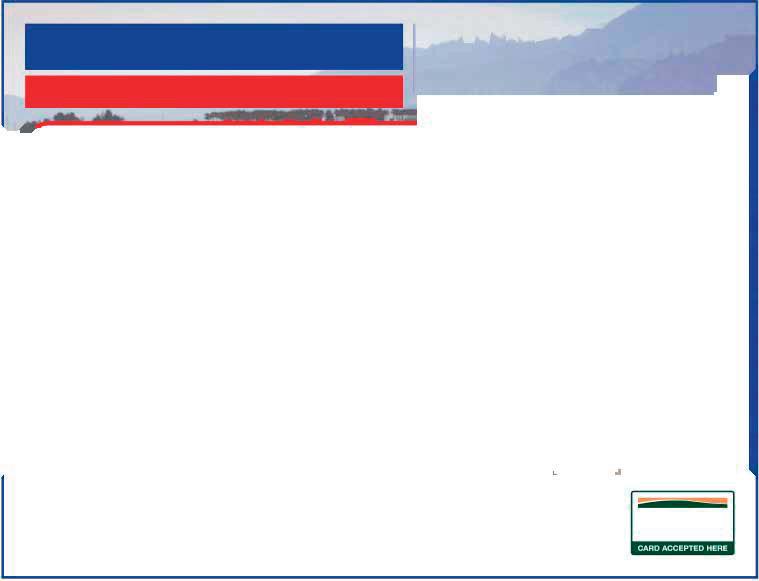
Tough season: A very wet growing season including some extreme weather events has meant this season’s maize grain harvest tonnage was down by 13% on last season (as of June 1) according to the latest AIMI Maize Report. Photo by FAR.
complete as at June 1, which was normal.
The estimated total tonnage of 1,051,600tonnes DM was down 7% compared to last season’s harvest, as the result of a lower yield (down 9%) from an increased harvest area (up 3%).

About 65% of the total silage crop had been sold or used, leaving 363,100 tonnes DM unused/unsold as at June 1, compared
to 390,200 tonnes DM at the same time last year, and 477,000, 390,400, 456,000, 349,000, 456,700 and 365,100tonnes DM at the same time in the six previous years). Spring 2023 sowing intentions as at June 1, were similar to last season (down 3%). For the full report go to: assets.far.org.nz/AIMI-MAIZEJune-2023-REPORT.pdf
Farmlands

Needham Ag JD750a Seeder parts
Pivot rebuild kits

Bonilla seed tabs, Seed boot mounting repair kits
Boots, Discs, V8 firming wheels, HD gauge wheels and Martin closing wheels
•Maize Planter No -till hardware, Clutches and Controllers
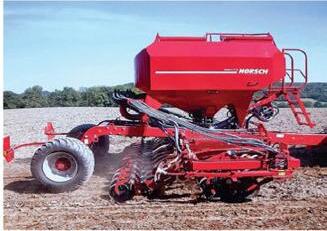

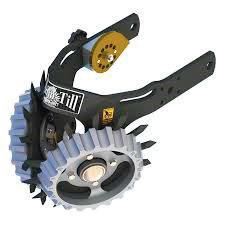
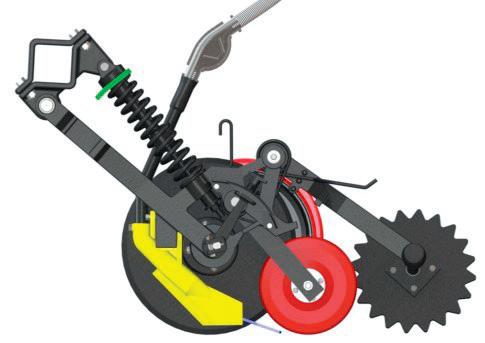

• Shop at our online store!

26 August 2023 CANTERBURY FARMING
0275 083 789 unearthag.com
'" .. ... .,__...
563 0800 4 PALMER
admin@palmeragriparts.co.nz I 34
Industrial Park,
We can also manufacture any point you need! Palmer Agri Parts Direct imports and manufactures quality parts that fit machines indicated. These parts are not sold as genuine parts.
Robinson Street, Riverside
Ashburton
co-operative
]
Performance and comfort in hands of NZ farmers
Case IH’s new AFS Connect Optum, Magnum and Steiger tractors are relative newcomers to the market.
Article supplied by ] Cochranes of Canterbury
AFS (Advanced Farming Systems) is the name of Case IH’s precision farming range, and AFS Connect denotes the brand’s telematics solution, which is now an integral part of the Optum, Magnum and Steiger ranges.



Wireless connectivity allows for instant communication and two-way data transfer between the machine and its manager, with AFS Connect technology makes it possible for remote display viewing of the tractor’s AFS Pro 1200 operating screen by farm owners, managers and, with permission, the dealer supporting their equipment, providing exactly the same screen view the operator is seeing in the cab.
CNH Industrial NZ Product Manager James Perry said the AFS Connect portal is the key to these new tractor series, giving the customer a view of the field operations, fleet information and agronomic data from their preferred device, wherever they are,
and also allowing for the sharing of this information with trusted third parties.
For more than 60 years, Steiger series tractors have helped producers get more from the job in demanding conditions, and now with the power of AFS Connect, James said it meant new means for producers to maximize yield potential and return on investment, while minimising fuel consumption, work hours and stress.
Available in Quadtrac, Rowtrac and wheeled configurations from 400 to 600 horsepower, the AFS Connect Steiger features a redesigned cab with an all-new armrest with ergonomic controls, automotive-grade design elements and a 12-inch display configurable to each operator’s needs. There is also a new operating system and receiver.
The cab, like that of the AFS Connect Magnum, has been completely redesigned, blending simplicity, control and comfort, no matter the conditions or crop.
Some of the features include ergonomic MultiControl Armrest with eight control but-
tons; multiFunction handle with four programmable hot keys and an encoder knob for total control at the operator’s fingertips; newly-designed heating, ventilation and air-conditioning; standard leather seat with ventilation; an advanced steering system with adjustable steering rates to increase performance and manoeuvrability; and 360-degree performance lighting that can be grouped to turn on and off as required.
The AFS Connect Magnum series is available in Rowtrac and four-wheeled configurations, from 250hp all the way up to 400hp, the first time a 400hp option has been offered in the Magnum range in Australia/New Zealand. The tracked units are available for 340-400hp models, while wheeled machines go from 250-400hp.
CHOOSE A SOLUTION. CHOOSE
Connected: AFs Connect wireless technology allows for instant communication and two-way data transfer between the machine and its manager.
The Case IH Optum CVT tractor is the latest in the Case IH tractor range to be reengineered to create the new Optum AFS Connect range, with a new cab, interior and connectivity package designed to enhance its operation, comfort and efficiency.The Optum AFS Connect range, like the line-up it succeeds, contains two models, with rated power outputs of 270hp and 300hp, each featuring the Case IH continuously-variable transmission (CVT).
“The inclusion of AFS Connect takes the Optum’s capabilities to a new level, giving users a versatile 270-300hp tractor with continuously-variable transmission that offers even more in terms of comfort, capability and connectivity,” Perry said.

MOUNTED TRIO GLS SUBSOILER
As its name suggests the Sumo Trio consists of 3 parts to help develop and create an ideal seed bed in all soil conditions.
First stage: Staggered row of subsoiler legs with a maximum working depth of 400mm.
(both hydraulic and shear pin protection systems available)



Secondary stage: Two rows of 500mm concave discs equipped with triple sealed bearings and Sumo’s famous double drive system giving unrivalled performance when working in adverse conditions.
Third stage: Sumo’s 760mm multipacker roller with replaceable shoulders leaves a weatherproof level finish in the most challenging soil conditions.
The Sumo Grassland subsoiler improves and revitalises compacted grassland that is suffering from the effects of continual livestock, rainfall and heavy machinery.

• Leading row of adjustable individually suspended discs allow minimum disturbance on the pasture surface.
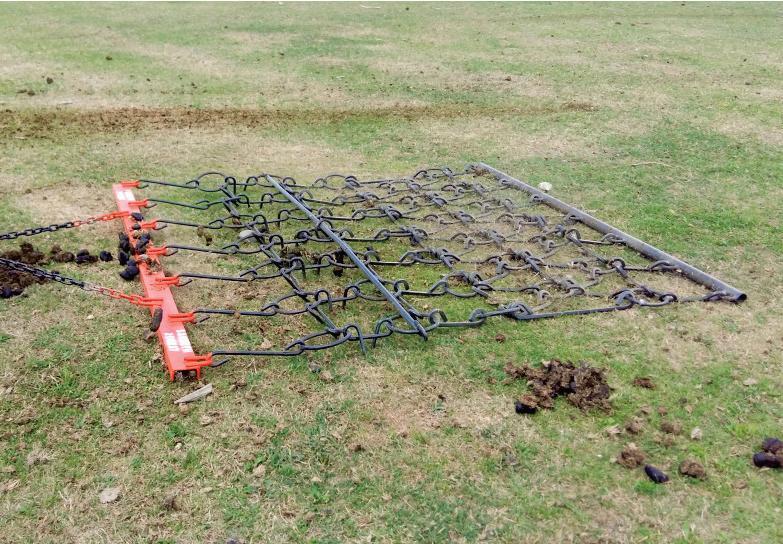
• Hydraulic Subsoiler legs with working depths from 100-350mm to suit all types of compaction layer depths with quick change points.
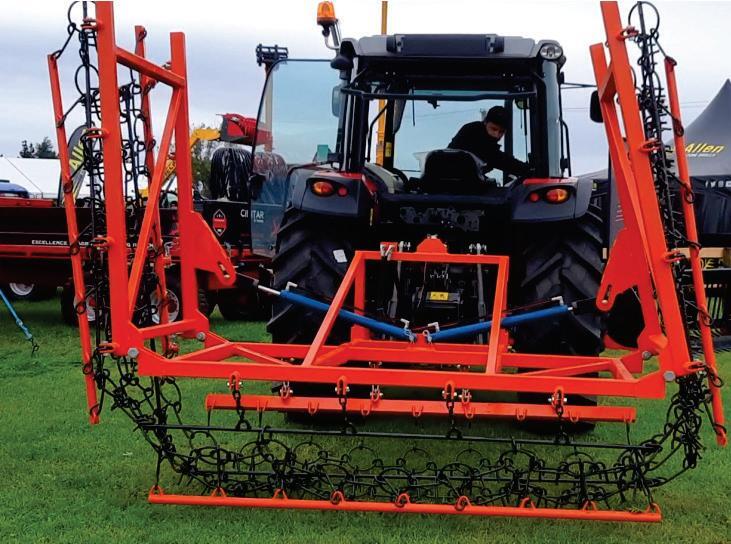

• Rear flat packer roller with scrapers to leave an aerated consolidated level finish across the full working width.
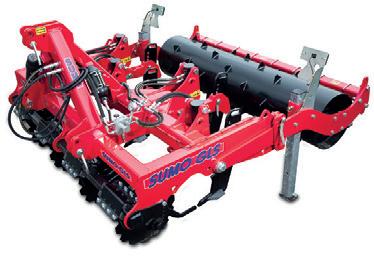
CANTERBURY FARMING August 2023 27 SOUTH ISLAND www.cochranes.co.nz Call Alastair Robertson | 027 435 2642 AMBERLEY | LEESTON | ASHBURTON TIMARU | OAMARU
THE UK
SUMO. MADE IN
OVER
@gmail.com Call: David Dolamore 021 861 604 SERVICINGWITHIN YOURAREA SERVICINGWITHIN YOURAREA CULTIVATION DIRECT DRILLING
technology
efficient seeding — Special seed mixes available — Paddock Topping Lawn Care Supply of animal bedding and landscape supplies ]
3000 SOLD WORLDWIDE dolamorecontracting
Latest
for
Canterbury dairy farmers urged to be vigilant for coccidiosis

Canterbury dairy farmers are being urged to be vigilant for coccidiosis by planning their calf feeding regimes and using nutrition to combat the potentially fatal disease.
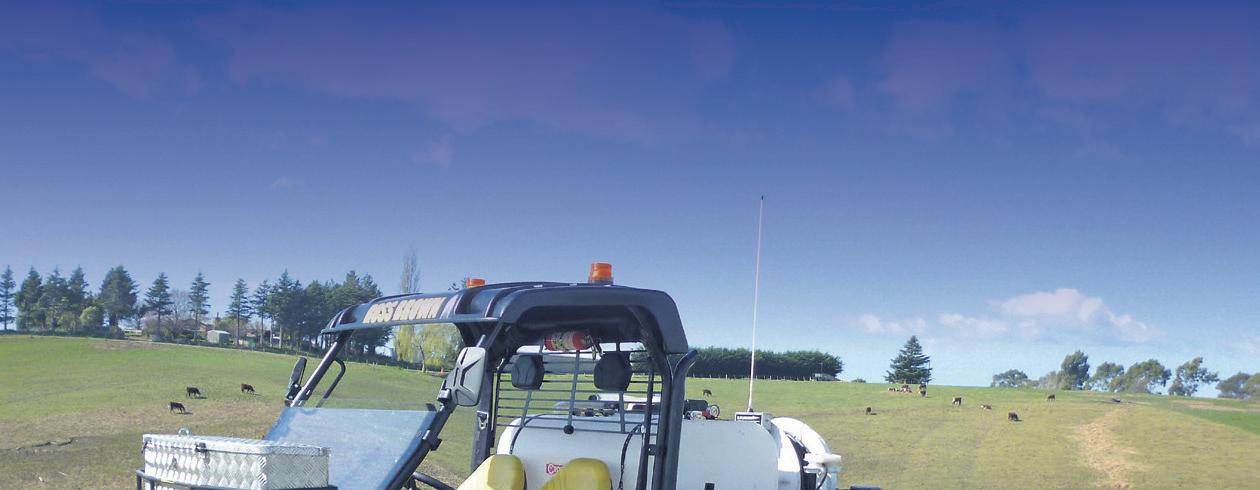
 ] by Kent Caddick
] by Kent Caddick
Coccidiosis can attack calves from four weeks old, causing scours and can result in death. The disease is prevalent throughout New Zealand and thrives in warm moist conditions. It often surfaces during periods of stress, like moving or regrouping calves or when calves face reduced immunity.
SealesWinslow Nutrition and Quality Manager Paul Drew said while no vaccine is available for the coccidia parasite that causes the disease, a good nutrition plan can help prevent it and improve calf growth rates.

“Any farmer who has had coccidiosis knows it’s a disease that needs to be avoided,” Drew said.


“A big part of prevention comes down to using a calf feeding programme that includes a coccidiostat fed at the correct daily dose. To reduce the risk, it’s important to keep feeding a meal with coccidiostat until calves have built up their own immunity.”
Drew said maintaining good gut health by encouraging beneficial bacterial development in the calf’s gut through feeding prebiotics and phytobiotics is also important to minimise gut health challenges and reduce scouring.
“Calf-rearers should be aiming to get calves onto a good calf feed containing prebiotics and phytobiotics as early as possible to develop good rumen function and gut health.”

Phytobiotics are compounds from herbs and spices. Their extracts help stimulate appetite and offer antimicrobial properties. Prebiotics foster the growth of beneficial microorganisms in the gut to make sure it’s working efficiently.
“Gut health diseases and coccidiosis highlight the need for calf-rearers to get their calves onto a good feed as soon as possible. It not only helps prevent disease, but it will also help fire up the rumen and get calves to their target weights faster.”
He said a good feeding plan that graduates calves onto calf muesli or pellets as soon as possible not only helps fully develop a calf’s rumen, but it also improves digestion and feed efficiency.
“The faster we can develop that rumen, the faster we can get the calf consuming more and fully utilising solid feeds, improving digestion and its daily weight gain. This is crucial to meet body weight targets and to the calf’s future productivity.”
He said while farmers are watching increasing feed costs closely, products like high quality calf muesli and calf pellets mean more energy is available to the calf to achieve growth rates. This means less feed is need-
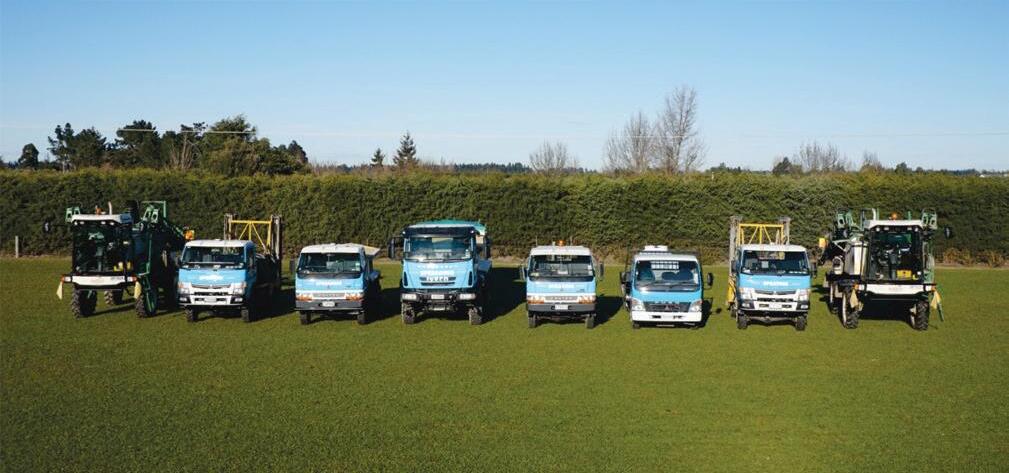
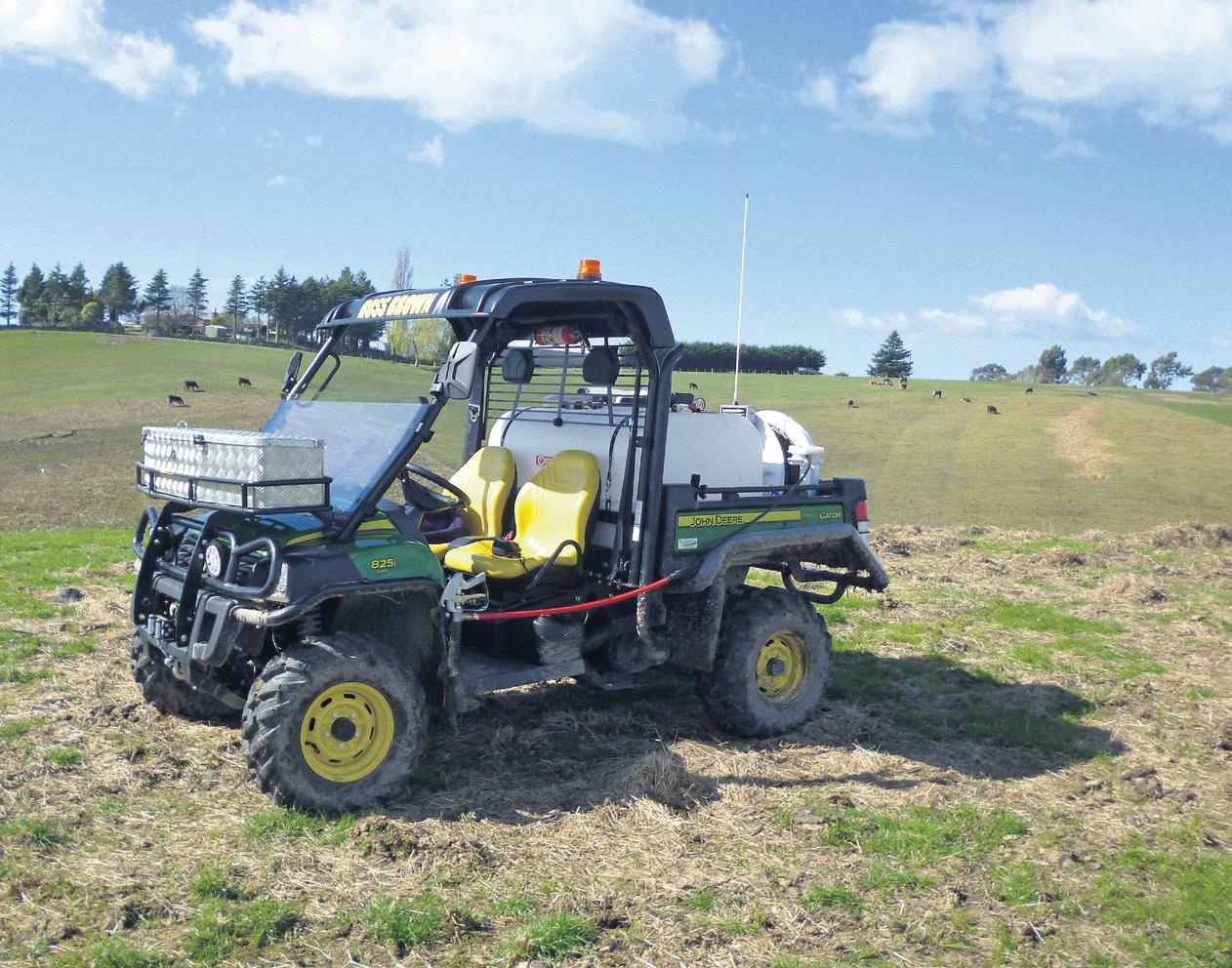


Planning: sealesWinslow Nutrition and Quality Manager Paul Drew says while no vaccine is available for the coccidia parasite which causes coccidiosis, a good nutrition plan can help prevent it and improve calf growth rates.
ed to achieve target weights and help the calf reach its full potential.

“The higher the quality of feed the better the weight gain. There are certainly efficiency gains to be had by feeding a higher quality product and providing protein and energy that is more available to the calf.”
He said by using a compound feed like calf pellets with effective starch levels helps fire up the calf’s rumen and drive the development of its absorptive area improving nutrient utilisation.


“Pellets ensure consistency in every bite meaning there’s no chance additives or minerals are lost at the bottom as in the case of a loose blend.”

28 August 2023 CANTERBURY FARMING OUR SERVICES → Aerial Spraying → Sowing & Spreading → Mustering → Heavy Lifting → Pilot Training → Wild Animal Management e: info@chchheli.nz | ph: 03 359 0470 | w: christchurchhelicopters.co.nz Get in touch now for local knowledge and cost effectiveservices FOR ALL YOUR GORSE AND BRUSHWEED SPRAYING CALL ROSS BROWN 03 689 8171 OR 027 481 9190 Email gorseman@hotmail.com • www.gorsespraying.co.nz Now Running a UTV vehicle for steep and wet country –low impact Registered Chemical Applicator
Over 40 years of service to the farming community
Noble-Adams Machinery was started back in 1981 by Peter and Mary Noble-Adams and originally included a range of tractors and associated equipment and has progressed into specialising in agricultural spray equipment.
Advertorial by ] Noble-Adams Machinery

Being locally owned and operated they take pride in supplying the correct piece of equipment for the job required.
They carry a large range of sprayers and spares in their Christchurch warehouse and have an extensive supplier network which means they can often find what you are looking for if they don’t have it on the shelf.
Noble-Adams are agents for many wellknown spray brands including Croplands, Hardi, Solo, Bertolini, Farmgem, Teejet, Arag and Comet to name a few.


However, Noble-Adams Machinery has frequently found that the specifications of a sprayer that a customer may need sometimes falls into the ‘off the shelf’ category. Noble-Adams stands by being able to offer the expertise and facilities to manufacture a machine to fit the exact requirements for their customers to be able to spray accurately, economically and safely.
• Noble-Adams Machinery sprayers: 12 Volt Spot Sprayers; Backpack Sprayers; Deck Mount Sprayers; Fire Fighting Sprayers; Hand Operated Sprayers & Accessories; Linkage Sprayers; Small Wheeled Sprayers – 12 Volt; Small Wheeled Sprayers – Motorised; Spreaders & Seeders; Trailed Crop Sprayers;
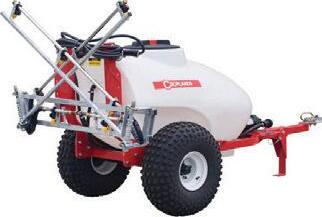

• Vineyard & Orchard Sprayers.
• Other equipment: Electric Waterblasters; Petrol Waterblasters; Generators; Heaters; Mulchers.

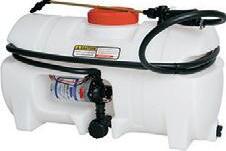
• Accessories: Baler Applicator Kits; Booms; Construction Equipment Accessories; Consumables & Safety Gear; Foam Markers & Chemical Fillers; Hose Reels & Hose; Lights; Rate Controllers & GPS; Spray Guns & Lances; Spraying Systems & Dust Control; Trailer Accessories.
For more on how Noble-Adams Machinery can help you visit their website: www.nobleadams.co.nz, or give them a call on 03 349 7862.

CANTERBURY FARMING August 2023 29 ]
Noble-Adams Machinery specialises in agricultural spray equipment and has the ability to manufacture a machine to fit the exact requirements for their customers to be able to spray accurately, economically and safely.
South Island Dairy Event a huge success
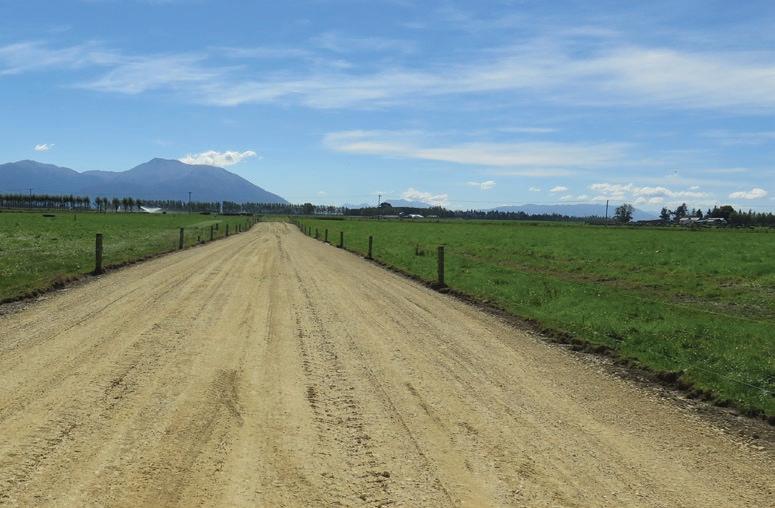


The South Island Dairy Event (SIDE) which was held in Invercargill recently proved to be a successful 24th year for the event.
by tineka Johnstone
SIDE

Over 400 farmers and rural professionals attended the two day event which began with a keynote address rugby sevens Olympic medalist, former NZ Black Fern and current Dragons rugby league player Tyla Nathan-Wong.
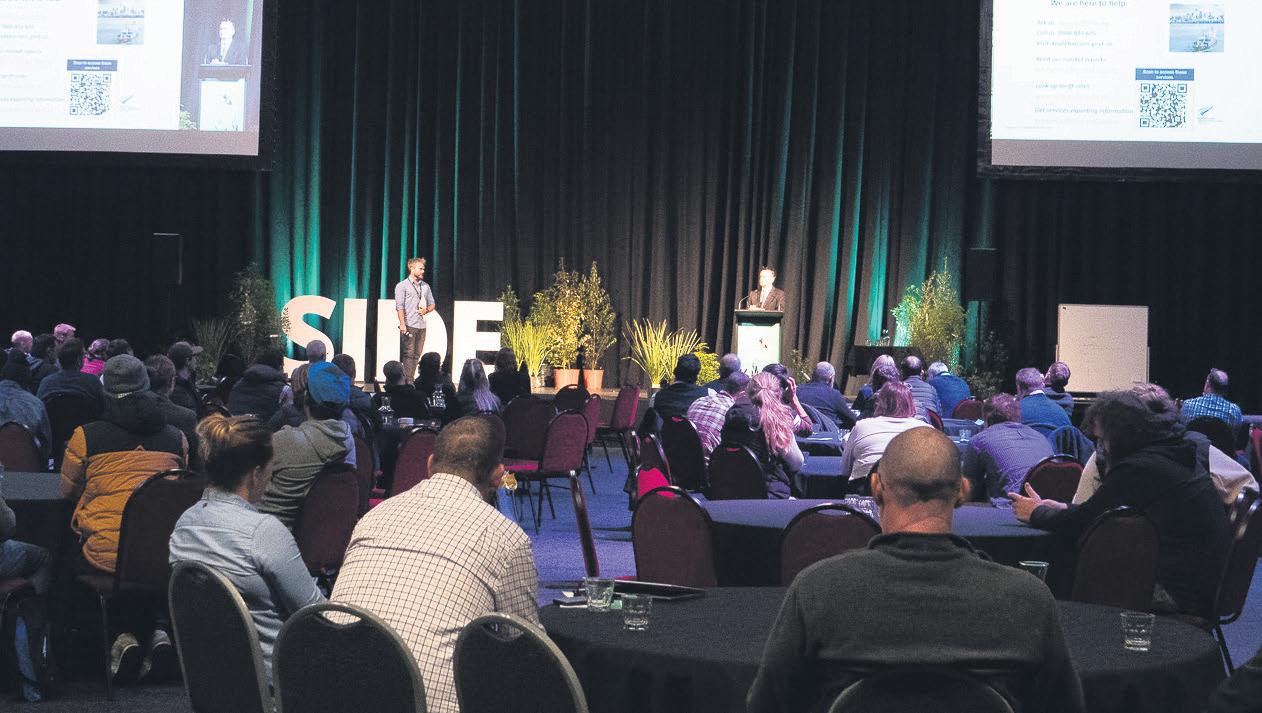

Ministry of Foreign Affairs Deputy Secretary, Trade and Economic, Vangelis Vitalis, was the second key-note speaker who gave attendees an insight into the trade agreements and conversations with the major trading powers of the US, EU and India.
The final key-note speaker who closed out the conference was Feilding athlete Shaz Dagg who received a standing ovation from the audience for sharing her inspiring story of courage and determination after losing her arm in a farming accident.
With 13 interactive workshops designed to explore the latest knowledge, research, innovation, and products specific to the dairy industry, attendees of all skill levels, ages, and experiences enjoyed the informative experience. The goal of this two-day conference is to connect leaders, producers and staff in the dairy industry and to learn the newest updates in the industry as well as network and make connections with like-minded people.
Event Chair Emma Hammond from Winton in Southland said she was was delighted with the turnout.
“The quality of speakers and presenters was outstanding this year and exceeded my expectations. Thanks to all those who attended, and the local event committee who came up with the ideas for each workshop and then made them informative and interesting.”
Success: the 24th south Island Dairy Event was well attended with 13 interactive workshops designed to explore the latest knowledge, research, innovation, and products specific to the dairy industry.
BrightSIDE, which is in its fourth year, ran in conjunction with SIDE, and is a forum designed specifically for young people wanting to jump start or to better progress their career in the dairy industry.
Kane Brisco from Farmfit talked about
getting fit for calving followed by Tom Hartmann from Sorted, talking about compounding interest and personal finance, providing invaluable insight to those new or progressing in the industry, arming them with the knowledge and skills necessary to find successes.

Attendees at SIDE, who came from all parts of the South Island, as well as one
from the North island and a few from as far as Chile and Australia, had a chance to explore the 38 different products and services offered in the Trade Expo area.
the 25th south Island Dairy Event will be held at Lincoln university in June 2024. For more information, visit www.side.org.nz
30 August 2023 CANTERBURY FARMING DAIRY Farm Maintenance Done Right We’ve been getting things Done Right for decades by always stepping up to the plate and getting it right the first time, every time. Get in touch today and get the job Done Right. DAIRY LANEWAYS DRAIN CLEANING RUT BUSTING TRACKS & YARDS DRAINAGE & MORE tarbotton.co.nz 03 307 7065 NEED A NEW LANEWAY? Experts in dairy lane construction and capping. Our work is not driven by price, its driven by quality and customer satisfaction. At the end of the day, it’s about giving the herd the best surface to walk on & helping to reduce the number of lame animals. CALL WARREN 0272 502 502 | 03 308 4039 1 Range Street, Ashburton www.ashcon.co.nz ]
]
] with Peter Burton
The models are wrong and why that matters

I recently attended a meeting where Dr Tom Sheahan spoke on the importance of methane and nitrous oxide. In essence the message was that both are irrelevant greenhouse gases, atmospheric CO2 has little effect on climate warming, and there is no climate emergency.
If science is incontrovertible fact, how is that there are two completely opposing points of view? Having grown up with ‘science’ at the forefront of everything we learnt and believed in, my experience is that scientists seldom agree.

I’ve therefore always been sceptical of an argument that is claimed to be supported by over 90% of scientists but been prepared to accept that the thesis contained useful and relevant information.
Models are currently being developed around CO2, nitrous oxide, methane emissions as well as the loss of nitrate to groundwater. However, if they contain at their base wrong data the conclusions will be false and standards formulated unenforceable.
Knowing that science in this space is far from settled we need to accept that fixed figure standards won’t work and there needs to be a concerted effort by politicians and councils to work together firstly to ensure farming survives and thrives.
Farmers accept that no-one has a right to make a mess, and when there are alternative technologies and management practices they will comply with necessary changes.
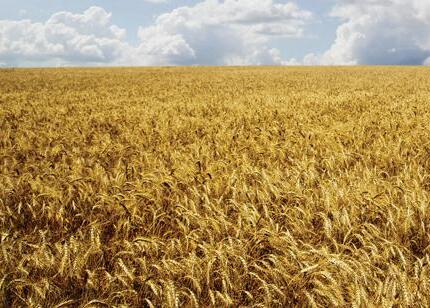

Learning from experience is essential and there is in this country information from both past and present scientists that should be taken seriously.
Tom Walker, Professor Emeritus at Lincoln, was held in great esteem by his professional colleagues and the students that attended his lectures over many years.
He championed Golden Bay Dolomite as the most effective magnesium fertiliser available at the time.

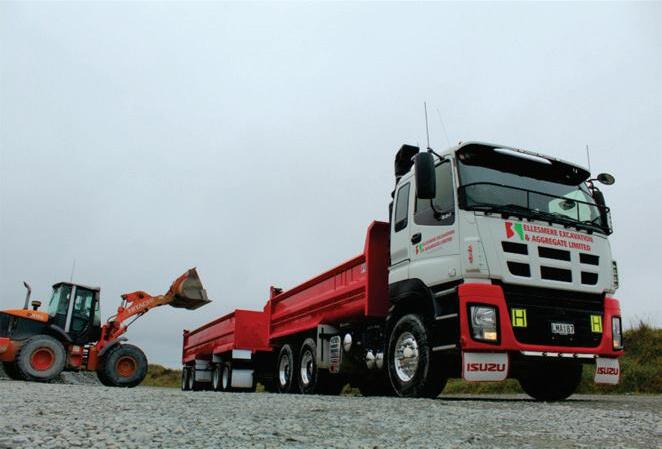



Although other magnesium fertilisers have entered the market, an annual application of dolomite direct to pasture remains the most effective way of minimising calcium/magne-
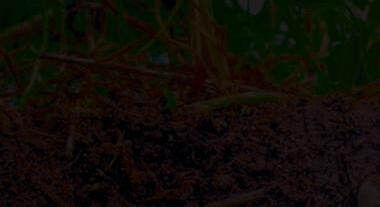
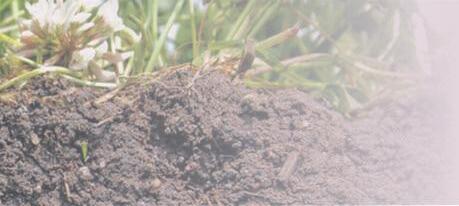
sium related metabolic disorders in dairy and beef cows.


When fresh clean drinking water has magnesium chloride and/or sulphate mixed with it, it becomes bitter encouraging animals to drink from puddles, negating the intended benefit.
Magnesium oxide dusting is somewhat hit and miss depending on wind at the time of application and rainfall soon after. Its application requires the use of protective clothing to ensure the health of the applicator.
Dolomite is completely safe and there are many that take dolomite in tablet form regularly to ensure optimum health.
Although the mine at Golden Bay, the only dolomite deposit in the country, is above ground it was originally a seabed deposit and therefore contains a wide range of essential trace elements.
Magnesium deficiency symptoms in cows in spring are seldom if ever a single element issue. Calcium and magnesium are always linked and the ratio of the two elements in dolomite is one of the reasons for its unique effectiveness.
Because dolomite varies in cost in different parts of the country due to cartage every farmer will have to make their own calculation.
Application: Although other magnesium fertilisers have entered the market, an annual application of dolomite direct to pasture remains the most effective way of minimising calcium/magnesium related metabolic disorders in dairy and beef cows.

Add the value of cow, its production for the season and the cost of applying dolomite at 250kg/ha makes it probably the best value animal health investment available.
Think also about the time when cows are down behind hedges at five in the morning. It coincides with a wet miserable southerly wind drenching staff and those attempting to revive the animal.
time is money and the frustration of trying to decide whether to treat immediately or wait till after milking is one that can be largely eliminated with a single phone call. For more information, call 0800 436 566 (0800 4Dolomite).
CANTERBURY FARMING August 2023 31
DAIRY Golden Bay Dolomite NZ’s most loved magnesium. call 0800 436 566 or visit www.dolomite.co.nz Electrical problems or maintenance? Use our unrivalled industrial electrical service for: • Dairy sheds and irrigation • Power reticulation • Effluent control • Dryers, conveyors and generators • Switchboards and central supplies North Canterbury 03 313 6104 Leeston 03 324 3752 Nairn Electrical, proudly supporting rural Canterbury since 1975. www.nairnelectrical.co.nz 7 day breakdown service
Dairy survey shows resilience despite high farm costs
DairyNZ’s annual Economic Survey report has shown dairy farmers remained profitable in the 2021-22 season due to a high milk price, although this was partially offset by increases in operating expenses due to on-farm inflation.
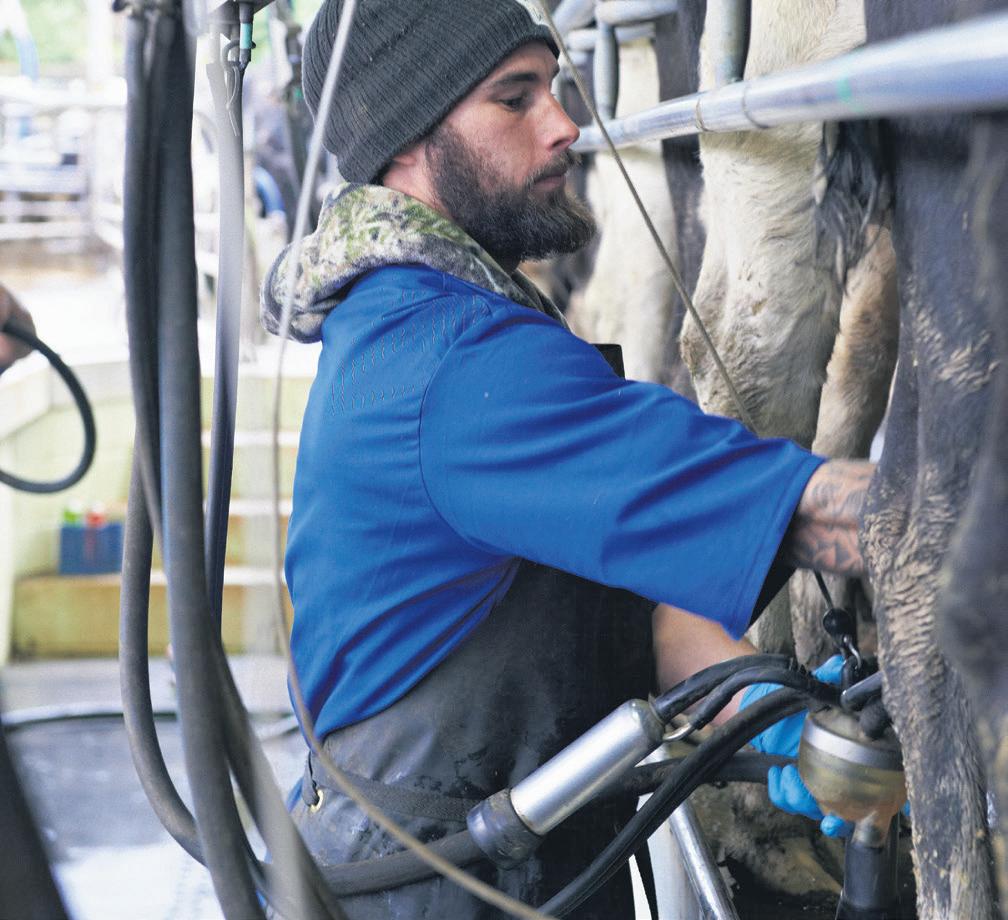
Article supplied by DairyNZ DairyNZ head of economics, Mark Storey, said it was positive to see operating profit at the time was up on previous years, with an increase to $4,150 per hectare for owner-operators.
However, at the same time, a record-high was occurring for operating expenses – and, more than one year on, it remains a key challenge for farmers.
“It is good to see farmers managed increased expenses and, with careful management of costs and inputs, still being able to achieve higher-than-average operating profit,” Storey said.
“For the 2021-22 season we were fortunate to see an above-average milk price of $9.19 per kilogram milksolid (kg MS) which helped enable this success. However, farmers also experienced record-high operating expenses per kg MS.”
This was the second consecutive recordhigh for operating expenses, with an increase to average $6.35 per kg MS for 2021-22. On a per hectare basis, the most notable increases included fuel fertiliser and feed.
“Looking ahead, we are seeing many of these high costs, including high interest rates, being carried into this season, with operating expenses forecast to increase to around $6.78 per kg MS.”
“Feed continues to be the largest cost on dairy farms and has been since the 2007-08 season, which is an important consideration
for farmers looking to control farm costs,” Storey said
“Those farmers can consider strategic planning to reduce the cost of purchased feed by looking at opportunities for planting more crops or forward buying imported feed.”
Sharemilkers also recorded an increase in operating profit per hectare, although the higher milk prices were partially offset by a decrease in milksolids per cow, a slight reduction in herd size.
“The difference between the farms with high and low operating profit is that top farmers are more efficient, with lower operating expenses per kg milksolids. That’s why it is important farmers are making a budget and considering how they will manage costs for the season ahead, with more operating expense increases expected.”
Storey said DairyNZ’s new Econ Tracker will help farmers as they look to plan for the season ahead and better understand the current economic environment.
“Farmers can use the data in the Econ Tracker to observe trends and consider the application to their farms and then apply this to their budgeting and farm business planning.”
Farmers looking for support are encouraged to reach out to their rural professionals and their DairyNZ regional team or visit dairynz.co.nz/budgeting for more information. the new DairyNZ Econ tracker is also available from dairynz.co.nz/econtracker
“Gladfield

STOCK FEED PELLETS


–
“Happy
32 August 2023 CANTERBURY FARMING DAIRY
Pick up available from Gladfield Malt, 721 Hororata Dunsandel Road, Dunsandel
General purpose pelleted feed from Gladfield. Ideal for calves, pigs, horses, hens, sheep, goats and deer.
stock
has been a favourite at our farm for some time. We love the simplicity of the pellet form. Our chooks,
and
crazy for the tasty brew! Thanks, Gladfield
we appreciate your innovation!”
food
calves, cattle,
sheep go
–
Vic, Rosaleigh Farm, Hororata
animals, happy customer, great accessibility, great product. Highly recommend!”
Farm, Leeston 20 kg bag $15+GST ORDER NOW: orders@gladfieldmalt.co.nz Phone: 03 325 4447 Mobile: 027 259 9461 Find us on Facebook ]
– David Marshall, Holly
Turning a profit: Dairy farmers remained profitable in the 2021-22 season due to a high milk price, although this was partially offset by increases in operating expenses due to on-farm inflation.
Photo by DairyNZ
Forever chemicals in groundwater
The Environmental Protection Authority has released a report with results from the first large-scale survey of per-and-polyfluoroalkyl substances (PFAS) in New Zealand groundwater wells.



Article supplied by EPA
The EPA commissioned the tests for PFAS in 2022, as part of the Institute of Environmental Science and Research (ESR) four-yearly survey of pesticides in groundwater.
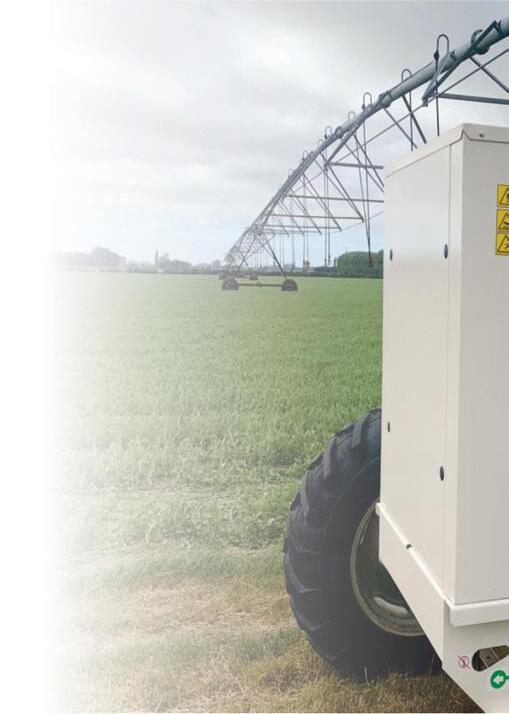
PFAS were found at very low levels in 15 of the 131 groundwater wells tested around the country - well below New Zealand’s safety limits for drinking water.

Groundwater is fresh water found underground in aquifers and is used for purposes including irrigation, stock water supply, or drinking water.
Commonly known as forever chemicals, PFAS are a group of synthetic substances that do not break down easily and are used in a wide range of products.
Some of the chemicals are toxic at high levels, and can accumulate in people, animals and the environment.
“The aim of testing these wells was to find out whether there is PFAS contamination in New Zealand groundwater, and to better understand the background levels of these chemicals in our environment,” Dr Chris Hill, EPA’s general manager of Hazardous Substances and New Organisms, said.

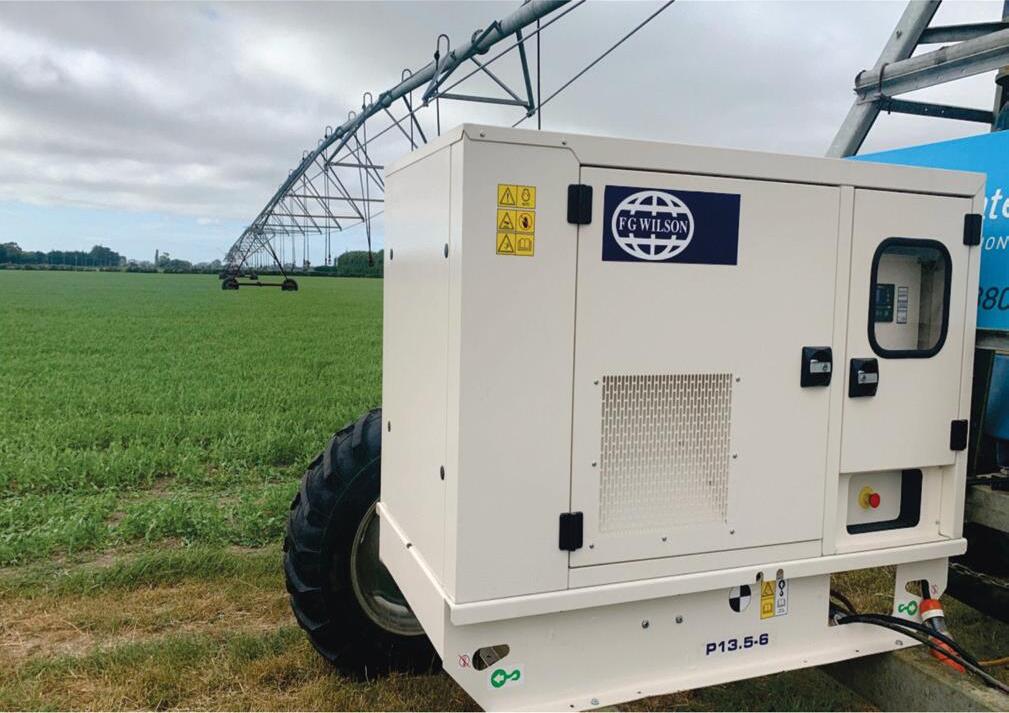
“While the majority of sites tested are considered low-risk for PFAS contamination, due to location and no obvious sources of the chemicals, we wanted to confirm whether this assessment is accurate.
“The results show there is very little PFAS contamination of groundwater in the areas tested, and a low level of potential risk from these chemicals.”
Staff from regional councils and unitary authorities collected the water samples tested for this survey. These groups are responsible for managing groundwater quality in
their areas and regularly carry out monitoring programmes.
“Councils, authorities, and communities are becoming much more interested in finding out whether these synthetic substances are reaching groundwater supplies,” Dr Hill said.
“We will continue to work with local authorities to ensure we understand and manage any potential risks associated with PFAS.”
The survey is part of the EPA’s ongoing response to potential risks from these sub-
stances. This work includes phasing out all PFAS firefighting foams and proposing a ban on using any PFAS chemicals in cosmetic products.
Eleven of the country’s 15 regional coun-
cils and unitary authorities carried out sampling for PFAS. The four regions that did not participate in sampling were the West Coast, Hawke’s Bay, Manawatu-Wanganui, and Northland.

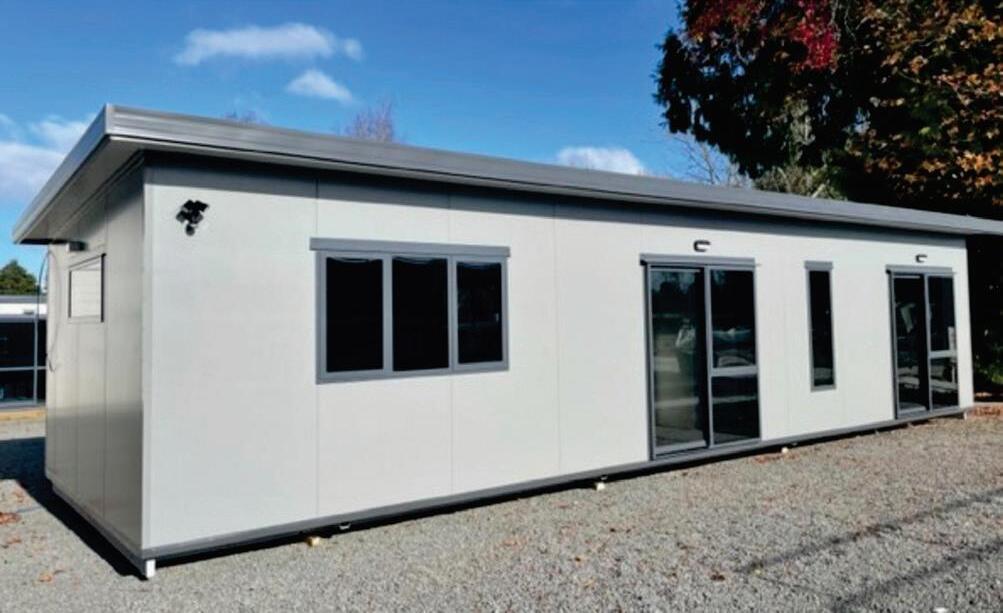
CANTERBURY FARMING August 2023 33 WATER & IRRIGATION FOR ALL YOUR WATER WELL DRILLING & WELL SERVICING REQUIREMENTS Submersible Pump Installation & Removal Potable Water Testing Pump Testing FOR PROFESSIONAL SERVICE FROM AN EXPERIENCED TEAM Rural Water Supply Lifestyle Block Supply Ph - 027 222 1587 / Email - Malcolm@hydrill.co.nz ]
Result: A new EPA groundwater survey has found the majority of the 131 groundwater wells sites tested were considered low-risk for PFAs contamination. Photo courtesy of Encyclopedia Britannica
Counting the cost of cyclones
B+LNZ has worked with a range of groups to calculate the direct on-farm impact on sheep and beef farmers of Cyclones Hale and Gabrielle, and the Auckland Anniversary weather event.
] by Kent Caddick
The report will help inform Government consideration of what further support farmers may need to get back on their feet quickly and to ensure impacts don’t spread beyond the farm gate.
B+LNZ chief executive Sam McIvor said the direct on-farm impacts of the extreme weather events in January and February on North Island sheep and beef farmers are in the range of $367million to $422 million.
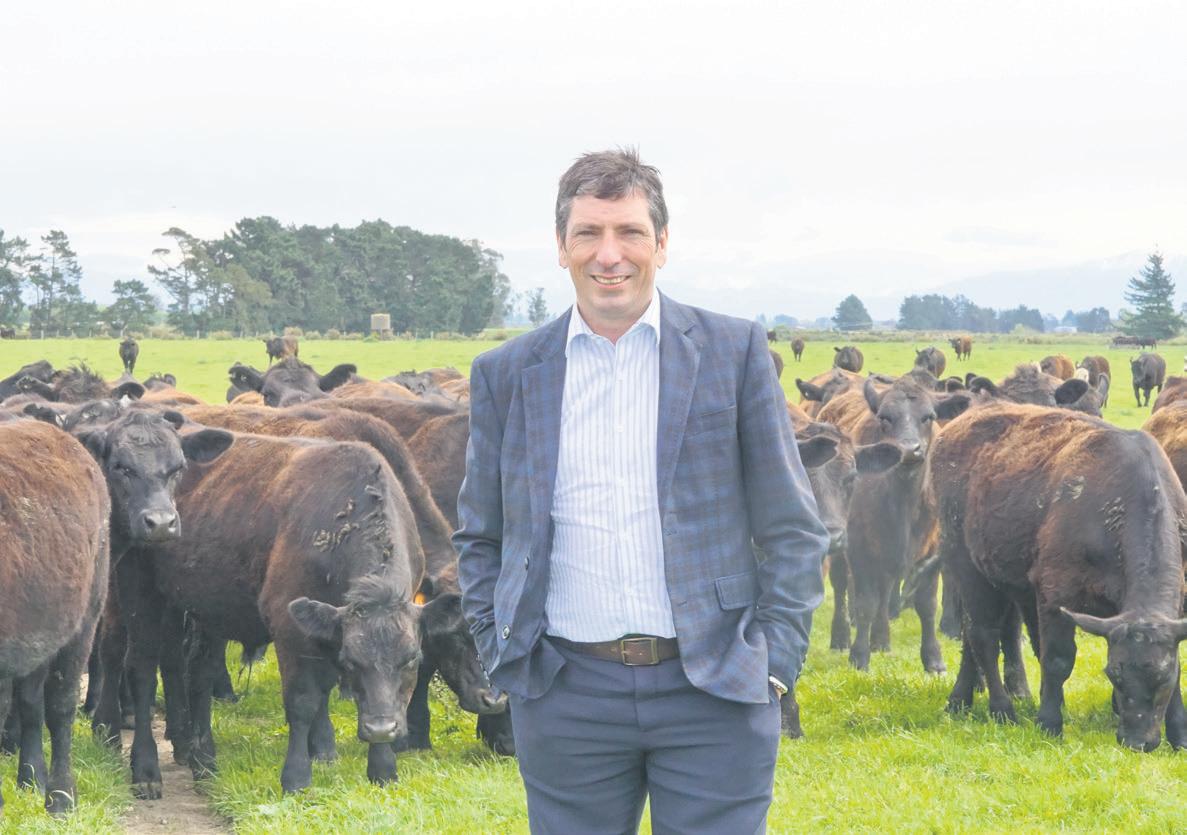
“The results of these events will have a significant impact on farming businesses and communities for a number of years, but those impacts are unlikely to be easily identified in industry-level statistics,” McIvor said.
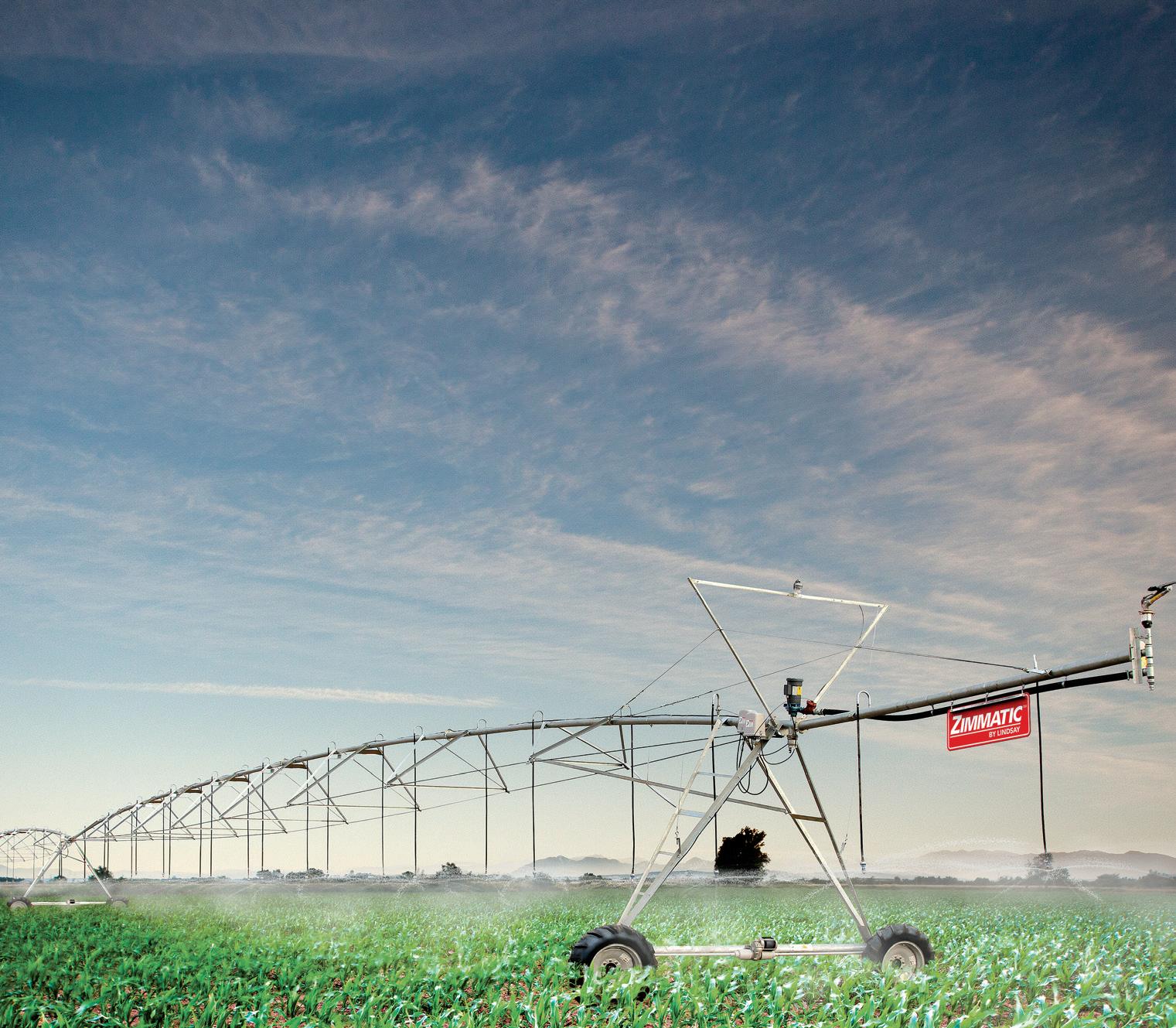
“That’s why it was so important for us to quantify the impacts and inform the Government.
“As New Zealand’s biggest manufacturing sector and second largest goods exporter, a bedrock for rural communities and a major employer, a rapid recovery of these sheep and beef businesses is vital as it impacts all New Zealanders and the economy.”
McIvor said that while farmers and growers appreciate the financial assistance made available by the Government in the aftermath of Cyclones Hale and Gabrielle and the Auckland Anniversary Weekend event, it is clear that considerably more financial investment is necessary.
“Farmers are in a critical recovery phase. The Government is looking at what that investment might look like, so they have asked for a more complete picture.
“More than 90% of the estimated impact was due to infrastructure damage because livestock losses were expected to be low at a
regional or industry level, although some individual farmers suffered high levels of livestock losses,” McIvor said.
“The damage has primarily been to onfarm infrastructure such as fences, tracks and accessways, dams, culverts, bridges, water reticulation, and slipping which causes revenue losses through destocking. Most of these costs are not insurable.
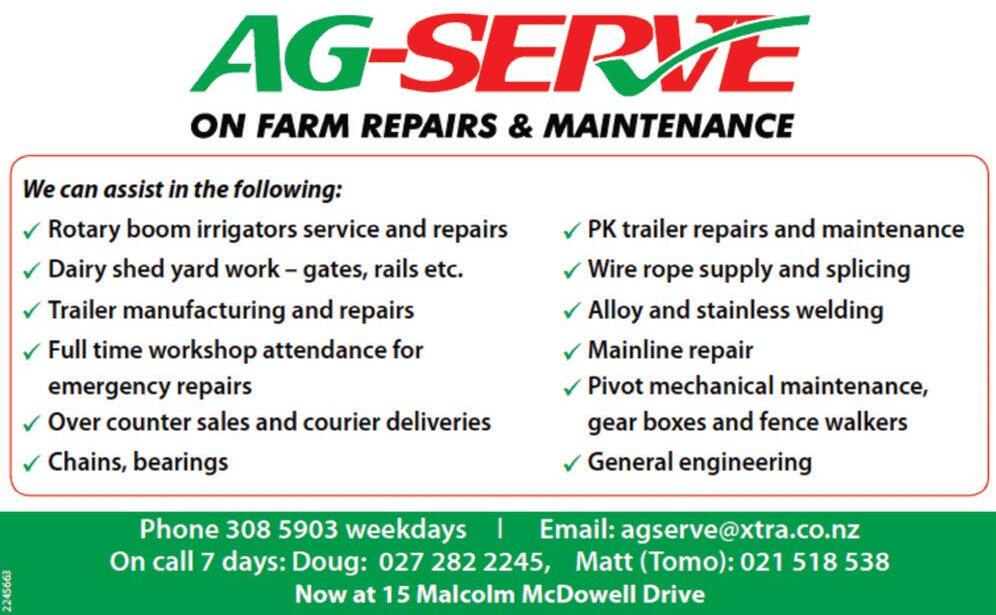

“Where infrastructure damage is significant, the impacts can be varied and both short and long-term. Farmers had to deal with imme-
The experts in farm water allocation

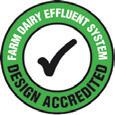
Cost: B+LNZ chief executive sam McIvor says the on-farm impact on sheep and beef farmers from this year’s extreme weather events is between $367million and $422 million.
diate concerns such as livestock welfare but are also facing ongoing implications around land management and financial stability.
“It’s important that farmers have some certainty so they can manage through the coming months and beyond. Anything that can be done to ease the fiscal burden of, and speed up, the recovery, will mean that farmers can more quickly get back to contributing to their local communities and New Zealand’s economy.”
The range identified is made up of
$12-16million for Northland, $18-21million for Waikato-Bay of Plenty-Coromandel and $336-385million for the East Coast, Hawke’s Bay, Tararua and the Wairarapa.
B+LNZ estimates that 1,200 farms in these areas were affected and suffered damage.
McIvor said the report does not consider infrastructure outside the farm gate, such as robust rural roading, although it is a critical aspect of recovery as it is a vital enabler for farmers and communities.
34 August 2023 CANTERBURY FARMING WATER & IRRIGATION Talk to the leaders in water technology 03 307 9049 | rainer.co.nz
Maximise your resource efficiency and production for 2023-24. Talk to us about irrigation systems - book a service for the best farm performance. Flow meters Soil probes Sprinkler upgrade
Will El Nino impact water supplies this summer?
The World Meteorological Organisation (WMO) is predicting a 90% likelihood of at least moderate El Nino conditions next summer, stating that “early warnings and anticipatory action of extreme weather events associated with this major climate phenomenon are vital to save lives and livelihoods.”
] with Dr Andrew Dark ]
Aqualinc



El Nino and La Nina (which has been in driving seat for the past two summers) are the two extreme ends of the El Nino Southern Oscillation (ENSO), which is a fluctuation of sea-surface temperatures in the Pacific Ocean that occurs on a cycle of three to seven years.
While some parts of New Zealand can experience drought under both El Nino and La Nina, the last two summers in Canterbury have been wetter than average, which has taken the pressure off for water users.
The weather patterns generated by El Nino in New Zealand tend to be westerly flows, with more rain in the west. A strong El Nino can lead to drought in eastern parts of New Zealand.
While this typically doesn’t create the life-threatening conditions that the WMO is warning about, it can have a significant impact on water demand and supply, particularly for non-alpine water sources: demand is high, and supplies can be on restrictions for long periods.
El Nino’s impact on atmospheric conditions tends to be greatest from December to
February, coinciding with the peak of our irrigation season. It is too soon to say for certain that Canterbury will experience drought conditions next summer, however previous El Nino events have caused severe droughts.
These include 1972-73, 1982-83, 199798 and 2015-2016 – years that will feature in the memory of farmers who experienced them. In simulations of water supply and demand in Canterbury, combining historical climate and river flow data with current levels of irrigation and municipal supply, 197273 stands out as the summer in which the greatest pressure was put on water resources.

The Canterbury Strategic Water Study was initiated by local and central government following the 1997-98 drought, due to concerns that Canterbury was “running out of water”. One of the key findings of this study, is that Canterbury has sufficient water, but it is often in the wrong place at the wrong time.

Water storage is a critical part of addressing this issue, and while some progress has been made on building storage in Canterbury, there is a long way to go if we want water supplies across the whole region to be resilient to severe drought.
Improving resilience to shorter-term cli-


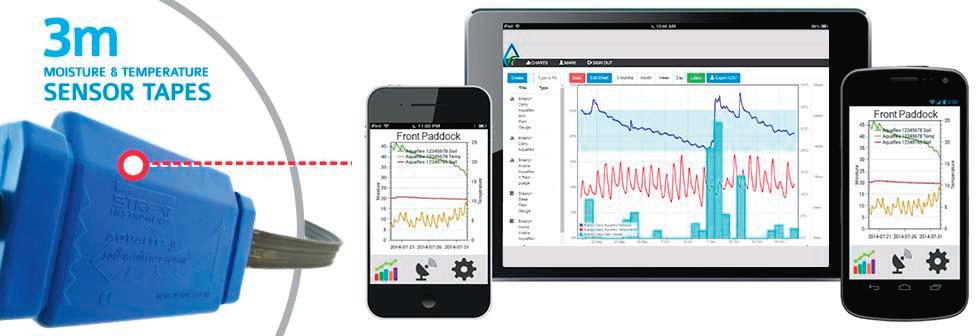
mate variability puts us in a much better position to deal with longer-term climate change.
In the 2015-16 drought, irrigators with access to water from the alpine rivers coped well, particularly those who also had access to stored alpine water. In contrast, some foothills-sourced water supplies were on either full or partial restriction for much of the time from Christmas through to the end of the irrigation season.
The following summer, groundwater supplies were under pressure due to the succession of several years with high demand in

summer and low recharge over winter, causing low water levels.
While we don’t know for sure what the 2023-24 summer will bring, it is best to be prepared by managing water from the beginning of summer as if a drought is a certainty.
Unlike floods, droughts can sneak up on us: we often don’t know we’re in one until it is well underway. Water users with annual volume limits on their resource consents will need to keep a close eye on water use, as there is a higher chance of limits being reached.
T h e l a r g e s t s o i l s a m p l e r e f e r e n c e a r e a o n t h e m a r k e t t o d a y
( 6 l t r s o r 3 7 0 c u b i c i n c h e s ) .
H i g h l y s e n s i t i v e T D T t e c h n o l o g y t h a t i s h i g h l y a c c u r a t e i n a l l
s o i l c o n d i t i o n s
M u l t i p l e i n s t a l l a t i o n m e t h o d s t o c a p t u r e t h e r i g h t d a t a
U n i q u e l y a d a p t a b l e t o d i f f e r e n t c r o p p i n g , o r c h a r d , v i n e , a n d
i r r i g a t i o n s y s t e m s t y p e s
T h e l o n g e s t s e r v i n g i n s i t u s e n s o r i n N e w Z e a l a n d ( O u r o l d e s t
CANTERBURY FARMING August 2023 35 WATER & IRRIGATION
S Y S T E
D E S
T H E
M I N C L U
:
q
a
x
2
y
l d a n d g o i
t r o
) www.onfarmdata.com Andrew: 022 183 2018 Lyall: 021 223 8666 andrew@onfarmdata com lyall@onfarmdata com
A
u
f l e
i s
0
r s o
n g s
n g
Be prepared: It is too soon to say for certain that Canterbury will experience drought conditions next summer, however previous El Nino events have caused severe droughts.
Using a reliable soil moisture monitoring service
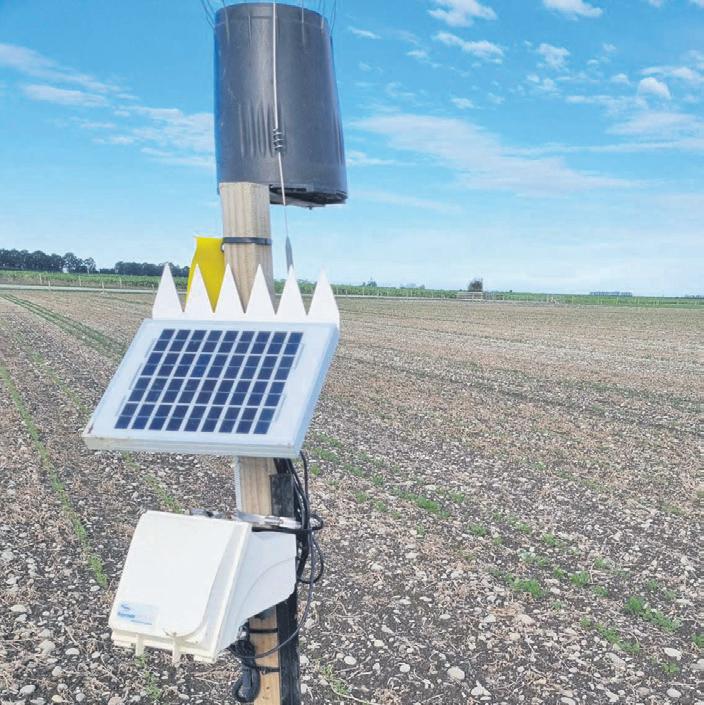

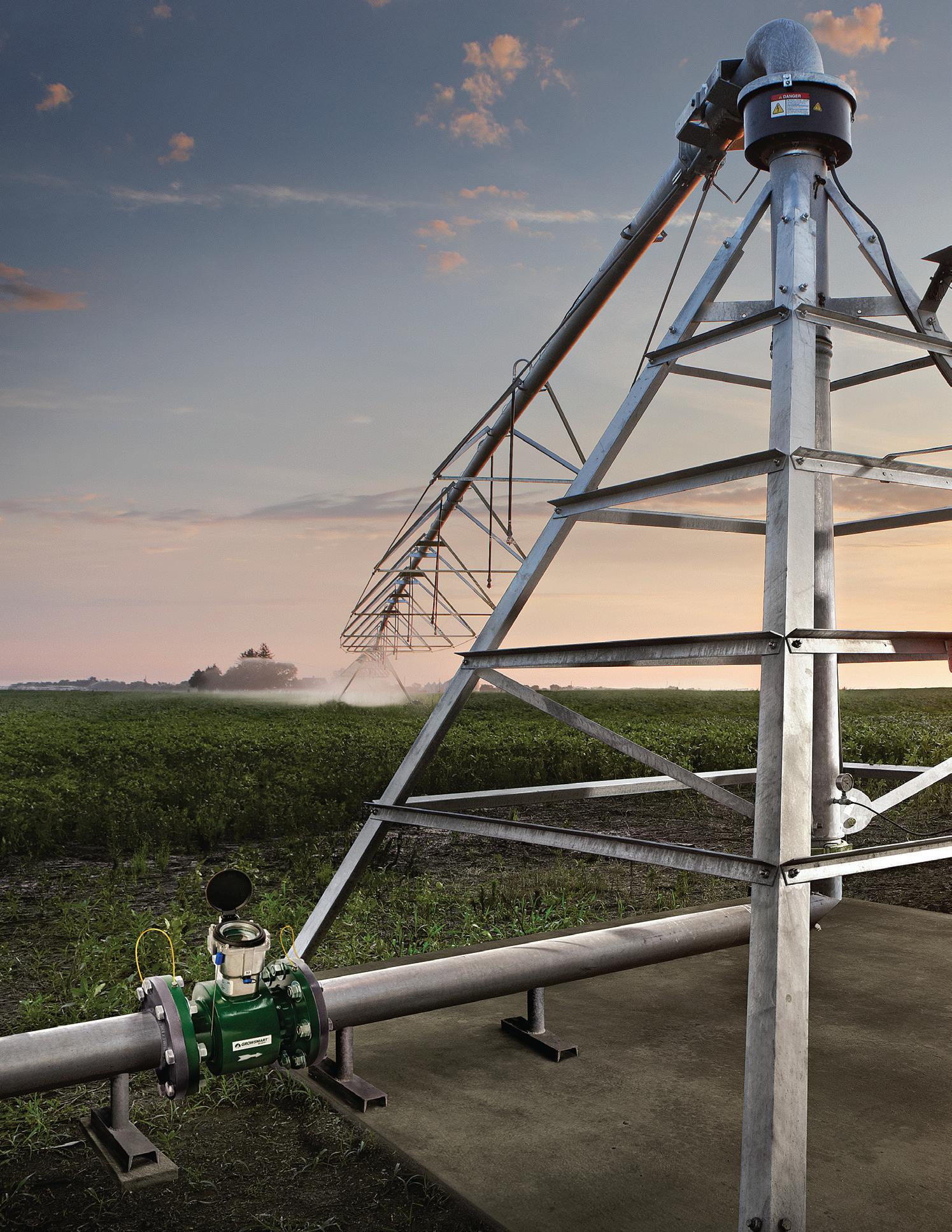





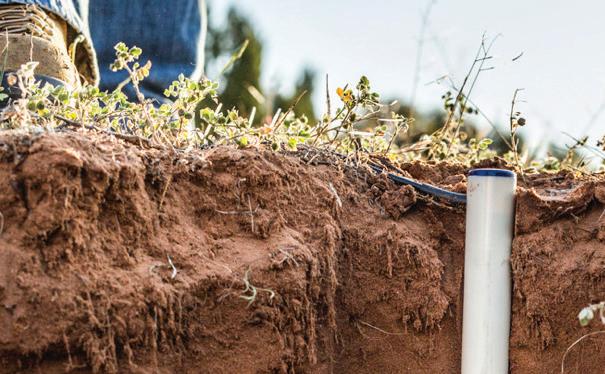
The NIWA seasonal climatic outlook confirms we are moving into an El Niño season for 2023-24.
] by Andrew Curtis, Primary Insight

While the Southern Oscillation Index is still neutral, the Pacific Sea Surface Temperatures have now exceeded the El Niño thresholds.
For Canterbury El Niño typically means stronger or more frequent winds from the west, leading to an elevated risk of drierthan-normal conditions.
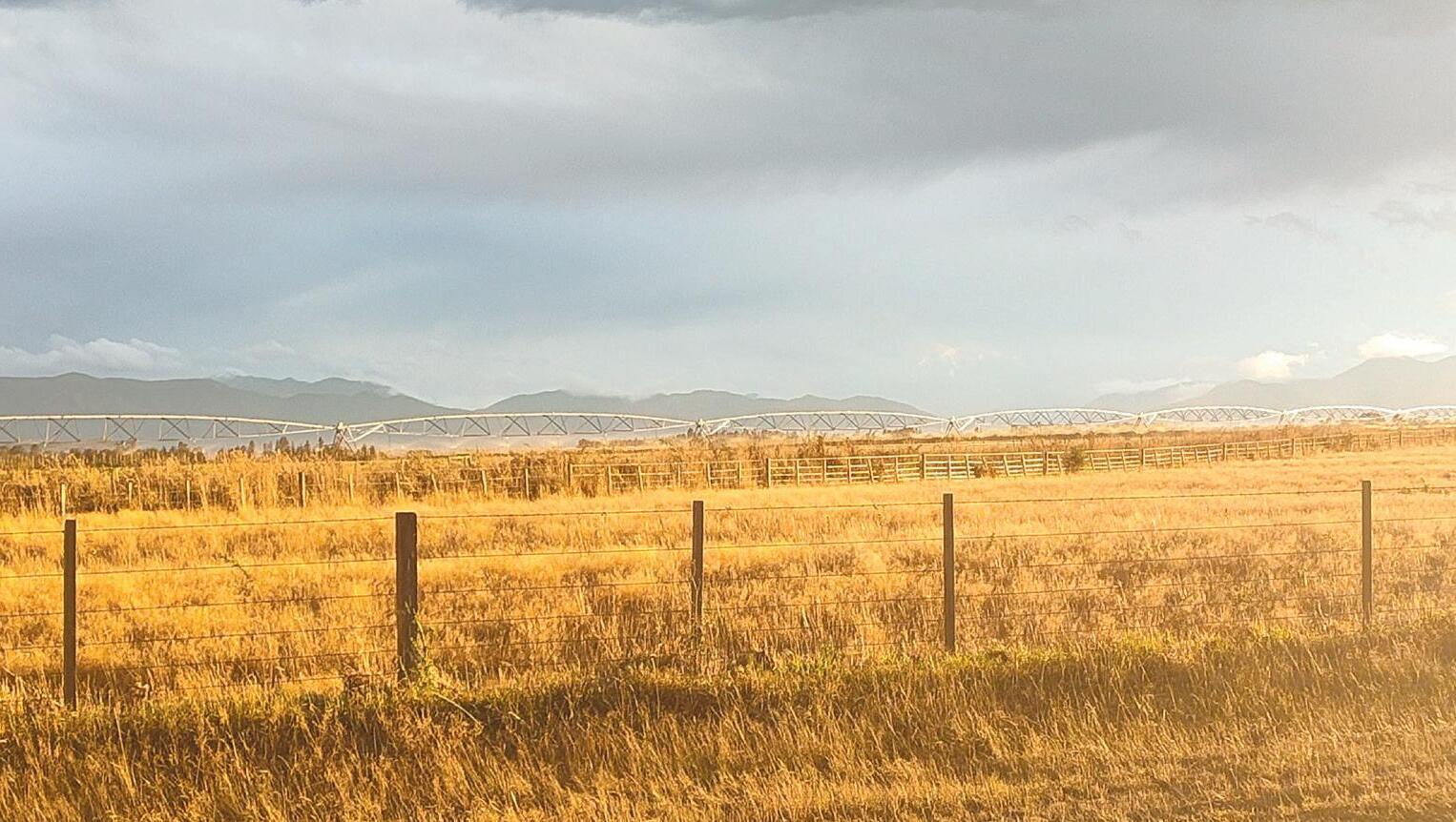

The risk of a dry season means managing the amount and timing of irrigation is crucial. For cropping farmers it’s about ensuring crops have enough water at critical growth stages.


Seed fill is particularly important, closely monitoring your irrigation at this time will typically increase yields by 5-10%.
For pasture farms it’s about careful management of seasonal allocations, avoiding overuse early in the season so there’s enough water left to continue grass production through a dry autumn. The best way to achieve this is using a reliable soil moisture monitoring service.
So what constitutes a reliable service?
Primary Insight believes there are three key components farmers should be looking for in their soil moisture service provider: An


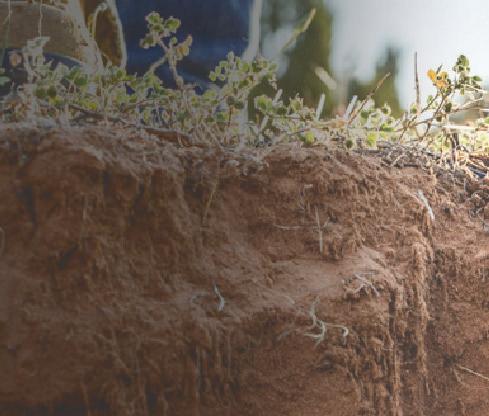
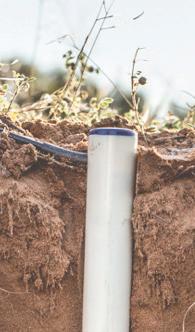

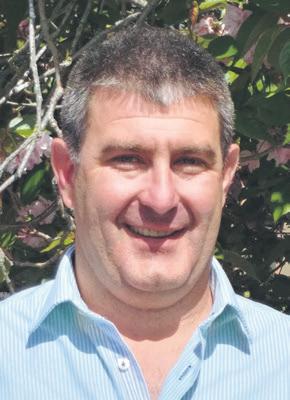
understanding of agronomy and soils

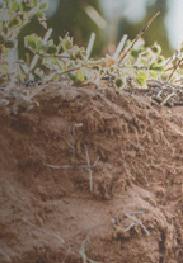
For a soil moisture trace to be useful the full-point and irrigation trigger point need to



be set correctly. This needs an understanding of the crop and soil, otherwise the trace is just a pretty picture.
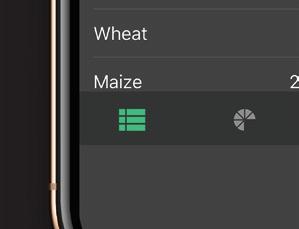



A proven reliable sensor



The adage of ‘you get what you pay for’ very much holds true. Cheaper probes have a limited lifespan and their traces drift over
For a soil moisture trace to be useful the full-point and irrigation trigger point need to be set correctly.

time. Recently a farmer asked us to look at the traces from eight probes they’d purchased at the beginning of last season (at a price of $800 each).
Unfortunately only four were still useful as two had flatlined, and two had drift issues.


They are now switching over to Sentek
probes which are proven to provide reliable readings for +10-years.



An understanding of where to locate and how to install the probe
It’s always frustrating when we go on farm and the existing soil moisture probe is installed under the fenceline, just inside the gateway, or has been caged or fenced off.
The sensors within a probe only read a very small volume of soil around it so to be useful it’s paramount they are installed in a representative location.

The team at Primary Insight will help you make money from soil moisture monitoring while tick your Farm Plan compliance box as a side hustle. We understand agronomy and soils alongside how to correctly locate and install a probe.
While Sentek probes are our preferred monitoring option (as it’s the most reliable probe on the market) we can also support you with the use of other probes.

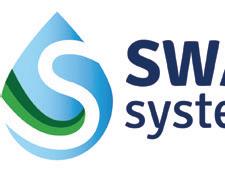

Phone Andrew or Cindy to find out more or join us in person at one of our free irrigation workshops this spring. Check out the event listings on our website for more information on dates and locations www. primaryinsight.co.nz. You’ll also get a certificate of attendance that satisfies your Farm Environment Plan irrigation training requirements (the side-hustle).
BY LINDSAY
36 August 2023 CANTERBURY FARMING WATER & IRRIGATION
IRRIGATION
IRRIGATE WITH CONFIDENCE.
SYSTEMS REMOTE MANAGEMENT PRECISION VRI
Installation tips and in-season irrigator maintenance
When designing and installing a new irrigation system, it needs to fit your land, business and water restrictions. A well-designed system means efficient use of water, energy, labour and capital.
]Article supplied by DairyNZ
A new system is a major investment and should be thoroughly researched. Use a ‘Blue Tick’ accredited operator for installation work and advice.
IrrigationNZ has a range of resources to help in the design and installation of a new irrigation system. When designing a new irrigation system, consider installing a soil moisture monitoring system. This will help with irrigation scheduling and allow you to irrigate efficiently. IrrigationNZ has information on soil moisture monitoring equipment and how to install it.
When installing a new irrigation system or pump, make sure you get the performance specifications from the supplier which will be a benchmark for future checks and testing. Failures of pumps and irrigation equipment during the season can waste a lot of time, restrict pasture growth and create stress.
Regular equipment checks and ongoing maintenance is vital in preventing breakdowns and reducing the chance of serious damage. Having a weekly or monthly and annual task list for irrigation maintenance, where you can check tasks off easily, ensures maintenance is kept up-to-date.
Below is a summary of some essential maintenance procedures for most irrigation systems. For more detail specific to your system, contact the service provider. If you install a new pump, ensure the supplier provides the specifications and a pump commis-
sioning report. This will serve as benchmarks for future checks.

Maintenance checklist during irrigation season
At the pump:
• grease pump and motor
• check flow readings, operating pressures and amp readings to compare with initial readings or specifications.
At the irrigator:
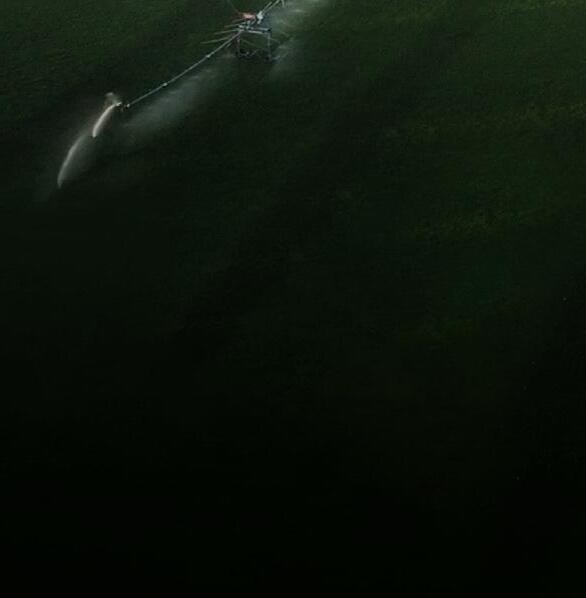


• check sprinklers for condition, rotation, blockage, nozzles not hooked up, wear
and tear
• check irrigation speed and operating pressure
• check application depth and compare against design specifications
• check hoses and pipes for damage or leaks
• follow maintenance schedule for regular greasing of travelling irrigators
• have a plan to manage travelling irrigators in high winds. This may include turning water off but keeping the irrigator filled with water; parking the irrigator be-
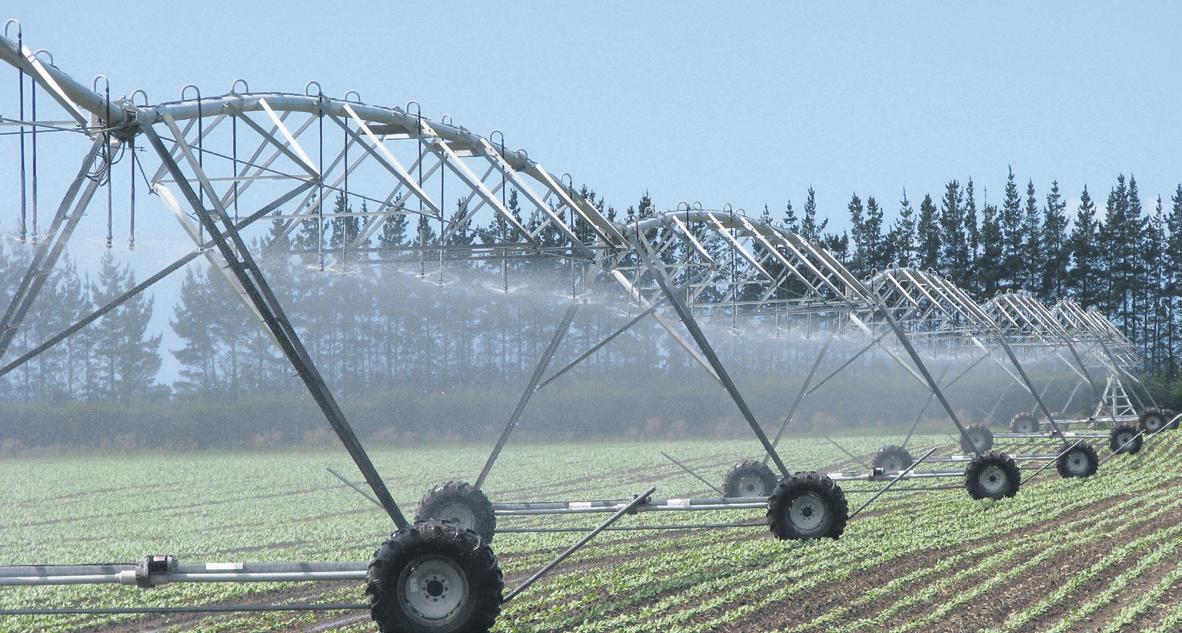

Check it: Regular equipment checks and ongoing maintenance is vital in preventing breakdowns and reducing the chance of serious damage to your irrigation system.
hind shelter; or in the same direction as the wind to minimise the contact area.
Tie down rotary booms.
Problems which occur with irrigation can range from minor issues which take time to fix, through to major problems that cost time, money and loss of pasture production (from delayed irrigation) or loss of nutrients (through over watering).
It is important that any problem is fixed quickly and the cause identified to stop it happening again.
CANTERBURY FARMING August 2023 37 WATER & IRRIGATION Talk to your local Zimmatic dealer today www.zimmaticanz.com www.lindsay.com/irrigateanz Zimmatic ® is a registered trademark of the Lindsay Corporation. © 2021 Lindsay. All Rights Reserved Innovation is at the root of everything we do. Talk to your local Zimmatic irrigation dealer today to find out how they can help make every drop count. ZIMMATIC Built for today to keep pace with tomorrow. Big picture solutions to match big picture thinking
] with Rob Cochrane ] Wool Procurement Manager, ] PGG Wrightson Wool







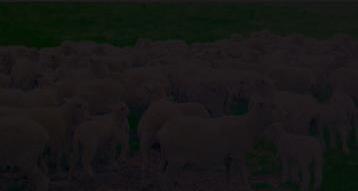

Super styles command widespread interest
The past few weeks have drawn substantial quantities of wool to the auction arena with several extremely attractive pre-lamb shorn, super-style, coarse wool breed, fleece lines commanding wide-spread interest from exporters, resulting in very good returns to those growers who have insisted on best possible preparation standards within the wool shed.
Any lines of similarly bred and well grown fleece showing poorer skirting levels affecting tested colour and vegetable matter contamination data, were certainly discounted compared to the super-style wools.
A good supply of Halfbred and Corriedale types drawn from Canterbury and Marlborough have also been catalogued recently with mixed results returned to growers, reflecting the difficult global market conditions experienced for these types.
Both second shear and full length coarse wool breed types have enjoyed good support of late with particular interest shown towards the best style wools. Several lots of super style pre-lamb shorn fleece achieved prices from 400 cents clean up to 445 at each of the July South Island wool auctions.

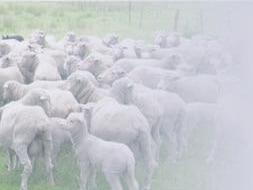
While trade requirement has focused mainly on the better styles recently, some of the average to poor styles have been well supported from time to time, with no apparent reason other than two or more exporters battling to secure a particular lot.
From a broker perspective trying to predict an expectation of price for their grower client prior to auction day, based on the most recent sale price information, the task has been difficult when samples representing two different sale lots of average to poor style wool physically look identical and carry almost identical test data, however when one lot gains a significantly better price than the other in the auction room, heads are scratched.
A disappointing feature of recent South Island wool auctions has been the extremely limited interest from the global wool trade towards a wide selection of Halfbred and Corriedale wool types, resulting in the current market delivering less per clean kilogram for 28 micron or coarser Halfbred/Corriedale types, than 37 micron coarse wool types! Globally there are reports of stockpiles of similar wools in several countries indicating that price recovery for that sector could be some way off.


Finer types, measuring pproximately 25.5

microns and finer, however, have gained reasonable support from the trade with most interest remaining towards the better style wools in these categories.
Merino shearing season began recently and at time of writing wool clips were beginning to arrive at our wool stores across Canterbury and Otago.

With mainly only Merino oddment types including a few lines of second shear having been sold through the auction arena during July, the healthy prices received would indicate that another reasonable selling season should be experienced, provided that wools are prepared correctly on farm and in particular that tender wools are removed from otherwise very sound wools.
There are several contributors to the rather confused market at present as exporters struggle with wool scouring capacity due to the Napier floods wiping out an entire scouring facility meaning that operating scouring schedules are very strict.


Economic issues impacting consumer spending globally are likely to slow production of some apparel goods into 2024 or beyond which could dampen fine wool prices compared to last year, and with continued limited enquiry from Chinese mills for poorer coloured crossbred types as well as many mid-micron types, returns for these wools are expected to remain challenged. I guess time will tell?
That’s my view.
38 August 2023 CANTERBURY FARMING LIVESTOCK
‘
With continued limited enquiry from Chinese mills for poorer coloured crossbred types, returns for these wools are expected to remain challenged.
Confidence returning
Hind sales are underway and, with good prices being achieved for good quality animals, confidence is returning for venison, as marketers create opportunities for sales too.
] with Ali spencer
Tom Macfarlane of Fairlie-based breeder Melior Genetics was very happy with the prices they gained at their seventh annual in-calf hind sales earlier this month.
Melior, had offered 450 rising two and three-year old high growth rate (HGR) hinds for sale, all pregnancy-tested in calf to HGR sires with breeding values of over 30.

All of the “ready to go hinds” sold at very good prices, with the average of $738 up $90 on last year, he reports.
They had “great interest from around the country”, with successful buyers paying between $700 and $770 per head at the public auction run by PGG Wrightson, supported by Rural Livestock.
“It’s great to see confidence in deer farming increasing again even in the face of other challenges such as high interest rates and input costs and subdued complementary stock class prices,” he says, adding he felt the results reflected current commercial realities.


The confidence is coming through as New Zealand venison marketers are busy capitalising on opportunities around the world, now borders have re-opened and restaurants are getting busy again.
In Sweden, New Zealand venison got a boost last week , when Prime Minister Chris
Hipkins and minister of trade and export growth Damien O’Connor met with their Swedish trade counterparts at a special event, a day after signing the NZ-EU free trade agreement (FTA). Mingling guests at the 45-minute food and tasting event, which got much media coverage, hosted by the New Zealand Ambassador to Sweden David Taylor and arranged by Mountain River Venison, sampled New Zealand venison canapés, NZ Pies and various New Zealand wines.
Plenty of other events have been taking place in the Northern Hemisphere winter and spring, keeping Deer Industry NZ (DINZ)-contracted chef Shannon Campbell very busy supporting exporters’ promotional activities for New Zealand venison’s new and existing
Growing: some of Melior’s high growth rate hinds on hill country where they spend 12 months of the year with minimal inputs.
customers in Germany, Benelux and Switzerland too.






Here in New Zealand, pan-ready venison cuts are in demand from foodservice outlets struggling with staffing pressures, “so need products that are easy to handle and don’t need further preparation,” DINZ executive chef Graham Brown has noted. Marketers are finding the same in other markets.
Positive news about the emerging China market for venison, is also carried in the latest edition of Deer Industry News (June to September 2023), copies of which can be downloaded for free from the Deer Industry NZ website https://bit.ly/3Dgm6HN
In the editorial, Silver Fern Farms’ chief customer officer Dave Courtney notes intro-






ducing customers to venison through minced product “is driving interest in other cuts,” and that “increasingly we are getting customers proactively contacting us about venison and its availability in China.”
Another article notes New Zealand venison companies’ sales teams are keenly starting to get out and about in that vast country, now its borders have re-opened, and are working to keep up with more fast change underway there.
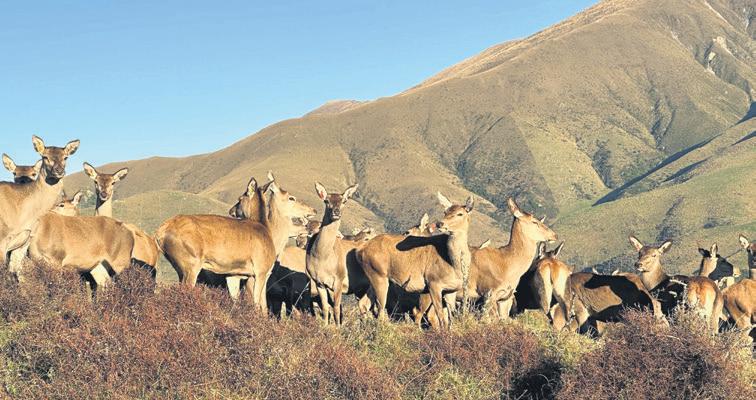

Meanwhile, here at home, advocating for New Zealand’s deer farmers continues to be the priority for DINZ, which is currently focused on the government’s proposals for Freshwater Farm Plans. A joint submission from it, Beef + Lamb NZ and Federated Farmers calls on government to work with the sector on a “fair and workable solution to keep beef cattle and deer away from waterbodies.”
“Assessing and managing high-risk areas through stock management will result in a better outcome than stock exclusion,” DINZ CEO Innes Moffat explains.
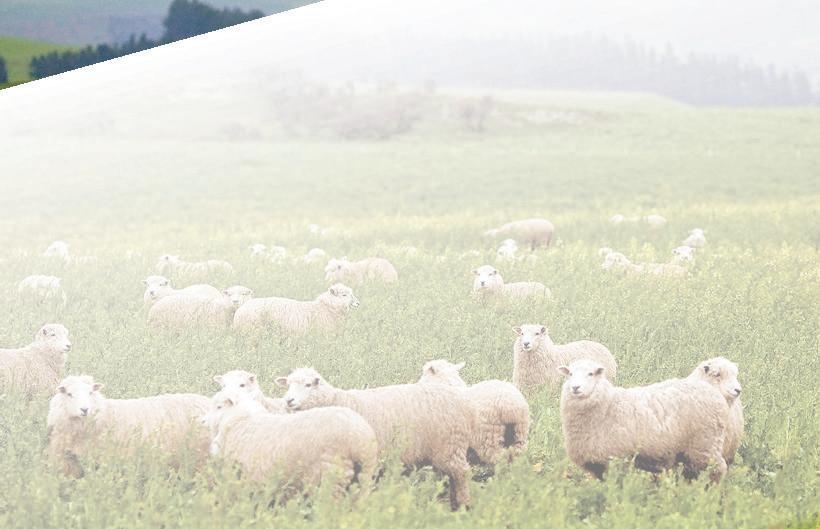
“Government must allow time to work through the options with farming groups to arrive at the best outcome, for the environment and for livestock farming.”
So, it’s busy times but positive vibes are starting to come through for deer.
CANTERBURY FARMING August 2023 39 LIVESTOCK

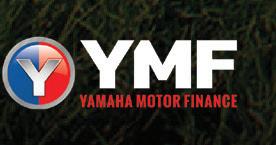




40 August 2023 CANTERBURY FARMING OFFER AVAILABLE FROM 1 JULY TO 30 SEPTEMBER 2023 REAL WORLD TOUGH *FINANCE DISCLAIMER: Zero deposit; annual repayments only with first repayment due after 12 months and 6.95% p.a. fixed interest rate on a 24 or 36 month loan term. Asset backed commercial applicants only with NZBN registered for minimum of 1 year. Maximum amount financed is $35,000 and applies to AG125, AG200, TTR230/A, YFM350FA, YFM450FB, YFM450FB/P, YFM700FA, YFM700FB/P, YXC700P, YXE850P, YXF850, YXM700, YXE1000PSEM, YXF1000PSEM. Offer available from 1 July, 2023 to 30 September, 2023 with final settlement date of October 31, 2023. Credit criteria, fees, charges and conditions apply including an establishment fee of $325, $10 PPSR fee and a dealer administration fee. Finance to approved applicants by Yamaha Motor Finance New Zealand Ltd. (YMF) NZBN 9429036270798 FSP 9622. ^ Warranty cover is subject to a range of requirements including following the service schedule & applicable vehicle load/towing limits. Service Intervals are dependent on usage and environmental factors. www.yamaha-motor.co.nz FIND YOUR LOCAL DEALER AT: $4,608 EXC GST FINANCE AVAILABLE YAMAHA RELIABILITY YAMAHA SERVICE INTERVALS AG125 RIDE AWAY $15,086 EXC GST KODIAK 450 EPS RIDE AWAY $26,782 EXC GST WOLVERINE X2 UTILITY RIDE AWAY ZERO DEPOSIT ZERO REPAYMENTS FOR 12 MONTHS 3 YEAR GENUINE^ FACTORY WARRANTY UP TO 150 HOUR^ SERVICE INTERVALS $325 ESTABLISHMENT FEE APPLIES 6.95% P.A FIXED RATE* ON SELECTED ATV + ROV ON SELECTED ATV + ROV 24 & 36 MONTH LOAN TERMS AVAILABLE Grizzly 350, Kodiak 450/EPS, Kodiak 700 EPS, Grizzly 700 EPS/SE, Viking 3/SE, Viking 6, Wolverine X2 Utility /XT-R, Wolverine X4, Wolverine RMAX 2/4 XTR 1000 Grizzly 350, Kodiak 450/EPS, Kodiak 700 EPS, Grizzly 700 EPS/SE, Viking 3/SE, Viking 6, Wolverine X2 Utility /XT-R, Wolverine X4, Wolverine RMAX 2/4 XTR 1000
Choosing the right all-terrain vehicle


When you’re in the market for an all-terrain vehicle (ATV), it can be pretty overwhelming to sift through all the options. After all, you want to find the one that’s going to serve your individual riding style.
Article supplied by ] Northern Power Sports







The first thing you’ll want to do is decide what type of ATV you should buy, which means you also need to consider your intended purpose.
Each machine offers a different set of features that are often meant for a specific use and riding style. One way to ensure you receive the full potential of your ATV is to buy the one that’s right for your needs.
One popular choice is the utility model, which offers a bulky and boxy appearance.


These ATVs usually include several heavyduty features, such as tow hitches, cargo racks, and two-up seats. If you plan to use your machine for completing challenging tasks on the job site, this is the perfect model for you.
The rock-solid construction makes them ideal for enjoying hours of fun on the trails as well. This means you can use your quad for both fun and work.

Another common option is the sport model, which offers an improved suspension system for superior performance when you’re chasing those thrills.
It’s important to remember that this type of ATV is mostly used for entertainment purposes. Therefore, if it’s endless adrenaline rushes you’re after, this might be the perfect

Work and play: there are plenty of options when it comes to choosing an AtV for your farm, and then are those designed for fun in mind.
quad for you. You’ll be able to hit top speeds and have unmatched agility when taking corners and handling bumps.
Most ATV riders will do well with a standard model that offers the basics when it comes to power and performance.
If you’re more advanced in your riding style or simply crave an extra kick of power, there are models with special features you can choose from.
For example, you can search for models with larger seating accommodations and a suspension that’s capable of handling extra weight without sacrificing performance.
If it’s comfort you’re after, look for quads with fenders that’ll keep mud and water off you.
CANTERBURY FARMING August 2023 41 0800 726 724 www.scorch.co.nz Terrestrial Wireless ADSL Fibre VoIP RBI GET CONNECTED WITH Scorch Broadband SCORCH COMMUNICATIONS Mt Somers Excavation Ltd GENERAL FARM MAINTENANCE • ALKATHENE PIPE IRRIGATION MAINLAND TRENCHING • 8 & 20 TONNE DIGGERS TIP TRUCK & TRAILER • GRADER SCREEN SHINGLE SUPPLIES • TREE REMOVAL Alistair Parris Owner/Operator • Ph: 027 434 7278 20 Hinds Gorge Rd RD8, Ashburton 7778 E: mtsomersexcavation@xtra.co.nz www.mtsomersexcavation.co.nz ]
Photo supplied by Action Power sports






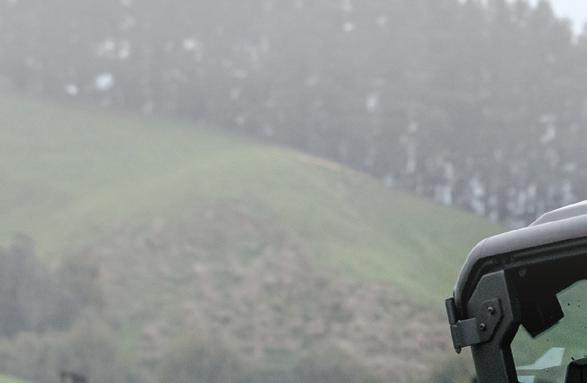
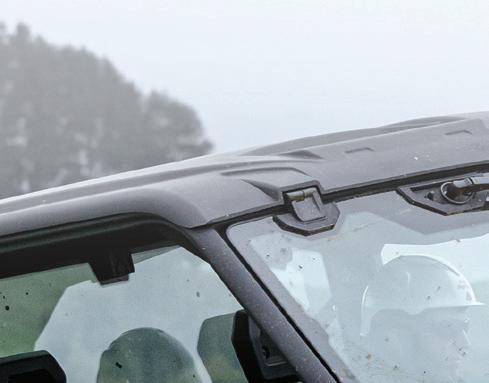










42 August 2023 CANTERBURY FARMING
Don’t believe everything you hear
] with Rob Cope-Williams
I am sure I will be excused for suggesting that there are some of the media who are allowed to show their own political views and desires despite journalistic requirements that balance, and personal views should not be involved in reporting.
With respect to polls, we all know that figures can be twisted and juggled.
When working in radio many years ago, we used to laugh about the number of stations claimed to be number one. Yes, they did have the most listeners between 2am and 5am but in other time zones they were sadly well out of the ratings.

I am not going to get into funds being paid by the government to whom, but suffice to suggest that it is widely thought to have happened with some of the networks.
The other thing that concerns me is not what we are told, it is what we are not told.
It is very easy to not ask some politicians questions and statements and ask others very easy leading questions.

What is news? Information that we need to know or wish to know in our day-to-day lives.
With an election looming we need to know what each group of people are going to do if they hold the treasury benches.
If we were to listen to the majority of the media, the leader of the National party Christopher Luxon is a man no one knows anything about.



However, reports abound about hundreds of voters are turning up to hear what his policies are. Why? Because they can’t hear them through the media.
You may think I am showing my colours, but please understand that what I am saying is that the following three years will be run by a group of people who we, the voters, have put there.
How can you make an informed decision if you have no idea what will be done, and by whom?
Your very existence in the hands of strangers, as is your livelihood.

As I suggested, do not believe everything you hear, do your own research and make your own mind up.
Trustees disclosure obligation to beneficiaries
The Trusts Act 2019 requires the trustees to hold the trust documents and they need to consider whether the documents should be disclosed to beneficiaries. The new Act provides that disclosure should be made to every beneficiary.
with Bessie Paterson LLB
Ronald W Angland & Son
Trust deeds prepared prior to the new Trusts Act very often had a long list of beneficiaries many of whom would not have expected to be a beneficiary of the trust. It was generally accepted that remote relatives would not know that the trust existed let alone expect to be included as a beneficiary of the trust.
The new Act made a radical change to the trustees’ obligations in respect to providing information about the trust to beneficiaries and there is now a presumption that every beneficiary is entitled to notification of basic trust information and a copy of any trust documents which they request.
This would be essential if the beneficiaries were contemplating holding the trustees to account. If the beneficiary is a minor disclosure needs to be made to the parents or representative of an under-age beneficiary.
The requirement for disclosure is a presumption and if trustees receive a request
for disclosure they are obliged to consider a number of factors which are set out in the Act.






These include the nature of the beneficiary’s interest in the trust, whether the information is confidential, the settlor’s intention when the trust was set up about providing
information, the age and circumstances of the beneficiary and the other beneficiaries of the trust, the effect of providing information to the beneficiary and other parties who may have an interest in the trust, the practicalities of providing information and any other factors which the trustees consider are relevant to the request.
The trustees are obliged to consider any requests they receive from a beneficiary for trust information and if they decide no information should be provided to that beneficiary they must apply to the High Court for directions as to whether their refusal was reasonable and seeking alternative means by which the trustees can be accountable and the trust enforced.
The presumption of disclosure to all beneficiaries should be a matter for concern for trustees and settlors.
Settlors should review their trust deed and if there is a power to exclude certain beneficiaries from the trust they should exercise the power to exclude beneficiaries who they
did not envisage would ever benefit under the trust.
The settlor’s intention could also be recorded in a Memorandum of Wishes or similar document stating that a particular person was never intended to receive a benefit under the trust.
A Memorandum of Wishes is a useful document which should set out the Settlor’s intention when the trust was set up, about how the trust is to be managed during the settlor’s lifetime and how the assets are to be distributed in his/her death.
A Memorandum of Wishes is not legally binding but the trustees are obliged to have regard to it.
Memoranda of Wishes should be reviewed from time to time and any change to the settlor’s intention should be recorded in a revised document.
this article has been prepared by Bessie Paterson, a Partner at Ronald W Angland & son, Lawyers, 2 Chapman street, Leeston

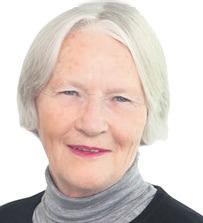

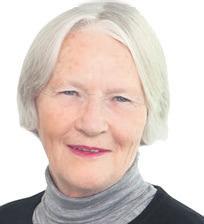
CANTERBURY FARMING August 2023 43 ]
]
‘the trustees are obliged to consider any requests they receive from a beneficiary for trust information.
Perhaps the most important election in living history is about to happen shortly, and although still weeks away, I have some sincere concerns about what we are hearing and more importantly, what we are not hearing.
‘
If we were to listen to the majority of the media, the leader of the National party Christopher Luxon is a man no one knows anything about.




DEPENDABLE. VERSATILE. PRACTICAL. JUST LIKE YOU. ^Finance under chattel mortgage with an interest rate of 1.99% pa, 30% cash deposit, the GST component repaid in the 4th month, and monthly repayments in arrears over a 36 month term. Available for new retail orders placed before COB 31 July 2023, and installed within two calendar months of arrival, to approved purchasers for business purposes only. Fees, terms & conditions apply. Finance provided by AGCO Finance Ltd GST No. 88-831-861. Offer available at participating Massey Ferguson Dealers only, while stocks last. * MF 1800 E Compact Tractor MF1800 MF2800 E SERIES 1.99% FINANCE THE ECONOMICAL OVER ACHIVERS. MF 2800 E Compact Tractor & * THE LATEST IN THE MASSEY FERGUSON COMPACTS


 ] by Kent Caddick
] by Kent Caddick




















































 Food Safety and Rural Communities
Food Safety and Rural Communities

















































































 Forsyth Barr
Forsyth Barr


































































































 ] by Kent Caddick
] by Kent Caddick









































































































































































































 ] by Kent Caddick
] by Kent Caddick
































































































































































































